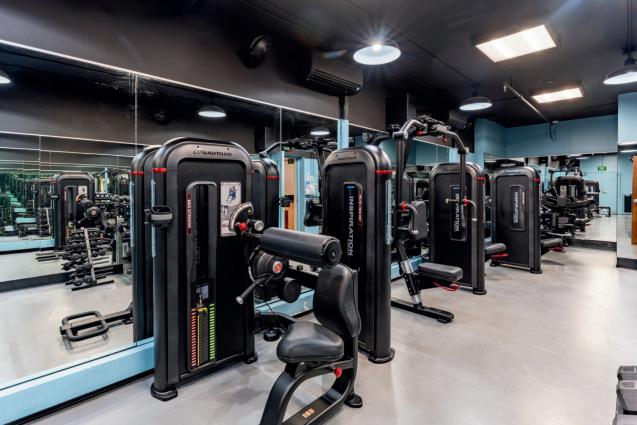




















































































































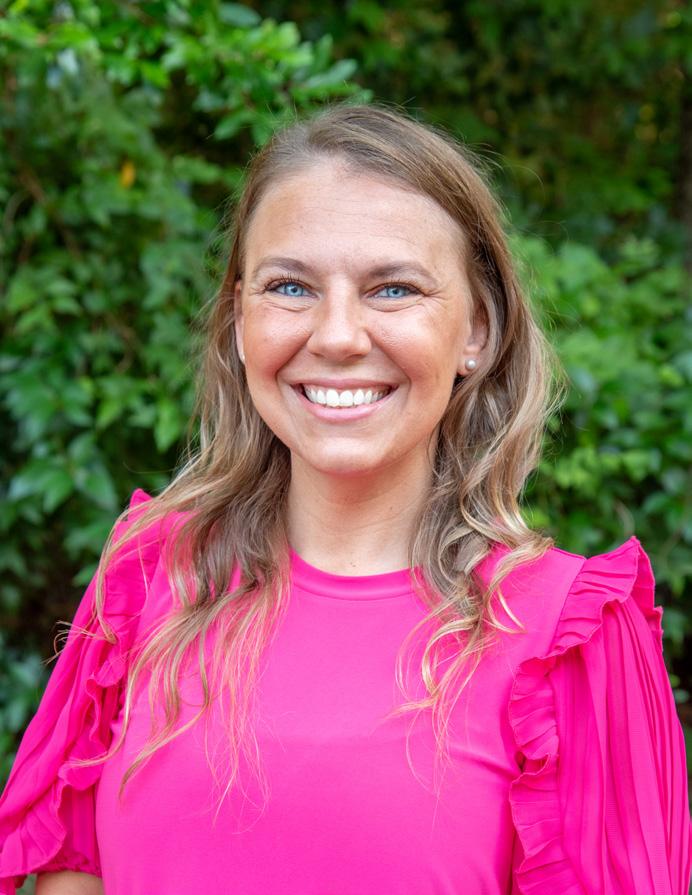
Spring is in the air, and while Alabama is preparing for the inevitable yellow blanket of pollen to cover everything in sight, there’s something undeniably exciting about saying goodbye to the colder weather and welcoming warmer days.
This month’s issue focuses on gearing up for gardening season, and I’m beyond thrilled to share these educational and inspiring stories with you.
For aspiring gardeners eager to make this the year to develop a green thumb, Noah Sanders shares valuable tips on getting started, based on his personal experience. As a living testament on how to thrive in a selfreliant homestead, Sanders offers encouraging advice to gardeners on page 20. Additionally, Tallapoosa County Extension Coordinator Shane Harris explores the fundamentals of understanding your soil and improving it for a thriving garden in his monthly column on page 24.
This issue also pays tribute to the memory of longtime Alexander City resident and beloved Papa’s Produce owner, Jimmy Keel. After selling his bait and tackle shop, Keel embraced a life of gardening and generosity, using his skills and hard work to grow fresh produce for the community, often sharing it with those in need. Learn more about his lasting impact on page 14.
We also bring to you the heartwarming story of one Eclectic resident who is using her unique passions to spread joy throughout the community. A third-generation beekeeper, Allyson Andrews is combining her beehives and therapeutic alpacas to fulfill her life’s purpose of teaching, inspiring and connecting others – all while keeping her faith in God at the forefront. Be inspired by her touching journey, Wildly Blessed, on page 30.
With Arbor Day just around the corner, the Tallapoosa County Master Gardeners Association will host its third annual Plants in the Park Arbor Day Celebration at Pennington Park, featuring guest speakers, vendors and the opportunity to take home one of the hundreds of trees that will be given away. Feel inspired to take action for the environment and discover more about the celebration on page 18.
We hope this month’s gardening edition inspires you to grow your garden into a bloom of endless possibilities. Happy Spring!

Shaylee Beck Moore Editor
Chairman
Kenneth Boone
General Manager
Tippy Hunter
Editor-in-Chief
Betsy Iler
Editor Shaylee Beck Moore
Creative Services
Audra Spears
Business & Digital Development Director
Angela Mullins
Contributors
Kenneth Boone
Lacey Howell
Shane Harris
George Miranda
Gina Abernathy
Audra Spears
Cliff Williams
Abigail Murphy
Samuel Higgs
Melody Rathel
Lizi Arbogast Gwin
Austin Elliott
Lori Harrell
Ben Smith
Audience Development Manager
Baily Terry
Marketing/Advertising Sales
Renee Trice
Samantha Himes
Erin Vickers
Lake Martin Living P.O. Box 999 Alexander City, AL 35011
256-234-4281
www.lakemagazine.life/lakemartinliving

Lake Martin Living is published monthly by Tallapoosa Publishers Inc. All contents are copyrighted and may not be reproduced without written consent of the publisher. Reader correspondence and submissions are welcome. Please address all correspondence, including story ideas, letters, pictures and requests, to: Editor, Lake Martin Living, P.O. Box 999, Alexander City, AL 35011 or email editor@lakemartinmagazine.com. Advertising inquiries may be made by calling 256-234-4281. A limited number of free copies are available at local businesses and subscriptions are $25 annually.












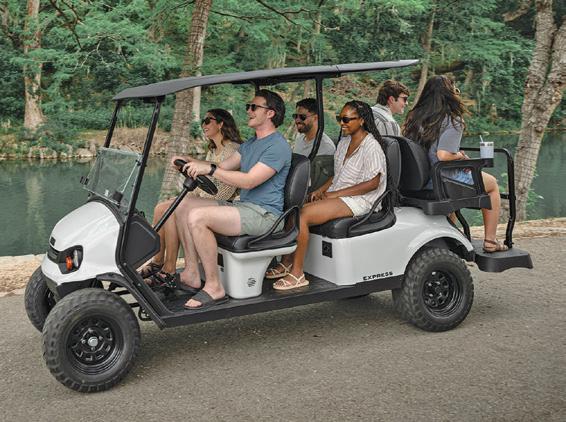

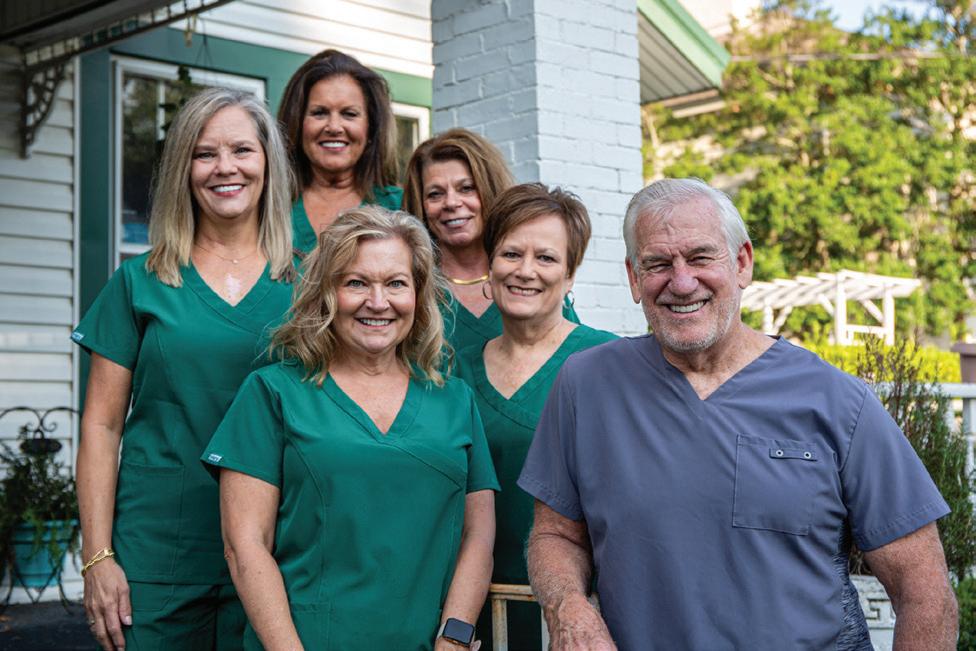







Third-generation beekeeper Allyson Andrews uses her honeybees and alpacas to educate and bless others. Alongside her beloved alpaca, May May, Andrews travels with her farm animals to share smiles with children, senior citizens and communities across Alabama.
Photo by Audra Spears
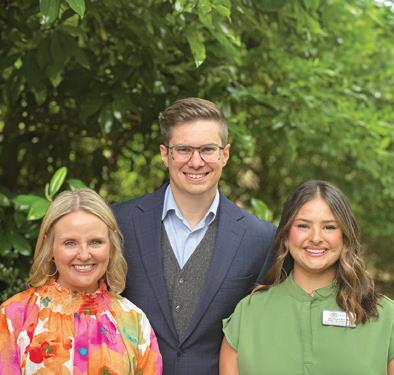






14 THE WIDOW'S GARDEN
The late Jimmy Keel is fondly remembered through a garden maintained by his widow, Martha.
18. MASTER GARDENERS ARBOR DAY CELEBRATION
The Tallapoosa County Master Gardeners give a sneak-peak of this year's Arbor Day Celebration in Dadeville.
20. NOAH SANDER'S GARDEN
After achieving his own dream of a self-reliant homestead, Noah Sanders shares helpful insight for aspiring gardeners.
30 WILDLY BLESSED
From therapeutic beekeeping to raising alpacas, Eclectic's Allyson Andrews brings joy to the community with her eccentric passions at Wildly Blessed.











Sometimes, going down the road you don’t expect to travel can lead right where you’re supposed to be.
For Alexander City firefighter Dillon Lashley, becoming a firefighter was not something he had thought about doing in his life. In fact, Lashley’s original goal was to join the United States Coast Guard. After talking with a close friend who worked for the Alexander City Fire Department, he decided he might want to give it a try.
“I thought I’d give it a try because it’s similar to the military because it’s kind of structured in a way,” Lashley said. “I started in September 2019.”
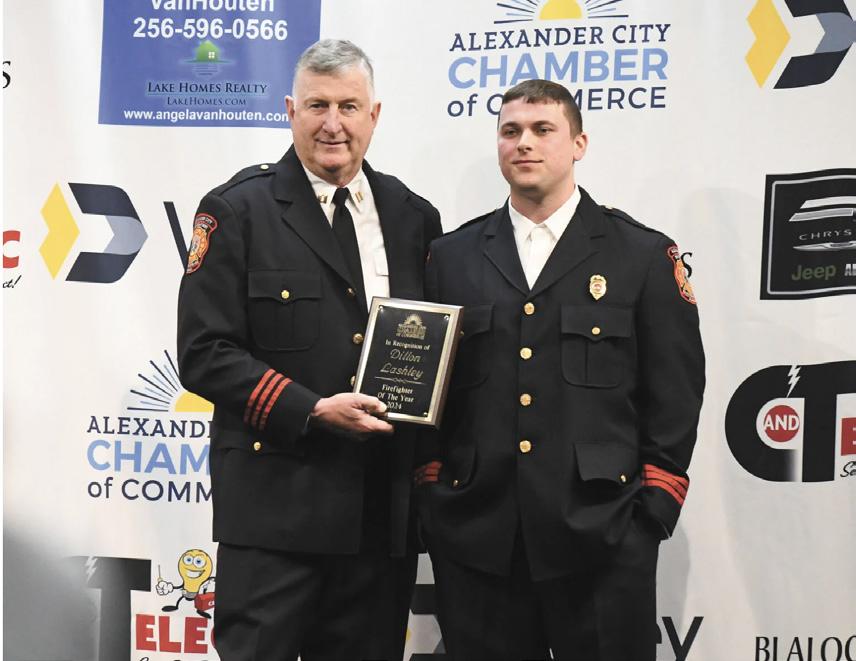
Five years later, Lashley was named the 2024 Alex City Firefighter of the Year by the Alexander City Chamber of Commerce.
As a firefighter, Lashley holds certifications as a
paramedic, EMT and other required certifications to serve as a firefighter. Over the last five years, Lashley has grown to enjoy serving the community he grew up in by helping people in need. However, one thing he enjoys the most is having shared experiences with his friends at the ACFD.
“I enjoy it thoroughly,” Lashley said. “It’s long hours sometimes and it’s stressful at times, but I enjoy it. I never dread it or anything, I enjoy being there, and I especially enjoy the camaraderie.”
ACFD chief Reese McAlister said Lashley was voted by his peers to receive this award.
“He illustrates great work ethic and great dedication,” McAlister said. “He is a great team player; he never has issues or concerns with anyone and always has a positive outlook. He really is what we look for in all our firefighters and medics.”
~ Melody Rathel
Most don’t think of public speaking when they think of Future Farmers of America, but this contest can develop a strong skill for current students.
Last month, Reeltown tenth-grader Aubrey Lovelady placed first at the county-wide FFA Prepared Public Speaking Contest. Her topic was on livestock judging and its benefits.
Lovelady believes there are four main benefits to judging livestock — it helps with annalistic skills, can improve communication skills, can help with problem solving and allows for a break from technology. The contest involved a five-paragraph speech Lovelady memorized and presented.
Earlier on, the new agriscience teacher Michael Hickman told the Reeltown FFA chapter he would like it if someone did a public speaking event. Lovelady said she never really thought about doing public speaking, but she decided to volunteer.
“I really like writing honestly,” she explained, “and I figured why not try something new and get out there to see if this is a set of skills I can put on display.”
Get Lake Martin Living delivered to your doorstep. Call 256-234-4281 to subscribe.
There are two different public speaking events: prepared and extemporaneous. Lovelady said for her first time in a public speaking contest she wanted to go with the prepared event.
Lovelady has been a part of FFA since seventh grade and this is her first year as an officer. She has a background with livestock farming through her family’s farm, livestock judging and showing cattle.
“I would have never thought public speaking would have been my thing and I’m not saying it is my thing, but you would truly never know how successful you can be at something until you try,” Lovelady said. “My statement of 2025 is, ‘Why not?’”
Lovelady will be heading to the district level later this spring. If she places at district, then she will compete at state and, potentially, nationals. upcoming district-level competition in April.
~Abigail Murphy
Stay connected:


Scan the QR code to visit our website.


STORY BY AUSTIN ELLIOTT & PHOTOS BY AUSTIN ELLIOTT & BETSY ILER
When Ashley Stephens brought her newfound inspiration of owning a coffee shop back to her growing hometown, she wasn’t fully sure of what to expect. As a 2016 graduate of Dadeville High School, Stephens went on to earn a bachelor’s degree in art from Jacksonville State University before obtaining a master’s degree in communication from Syracuse University.
Much like every other college student grinding through


collegiate courses, Stephens developed her appreciation for a good cup of joe during that time.
“I have really wanted to own a coffee shop since college,” said Stephens. “Around 2018 was probably when the idea first came around, because that’s when I really started to dive into the coffee world. Then it was this past fall when I finally was like, let’s just do it.”
Upon returning to her hometown, the 27-year-old Dadeville native was motivated more than ever to unify her roots. After two months of renovations, Two Ghosts Coffee opened its doors in the Dadeville Square in December 2024. Drawing inspiration from one of her favorite artists in the music industry today, Stephens chose a creative name for her shop that would ultimately shape its identity.
“I know most people’s first question is, ‘Where did the name come from?’” said Stephens. “It’s from a Harry Styles song called Two Ghosts. The song is about how we change and evolve as people, and I have had a lot of change in my life. If you know me personally, you know everything that I’ve gone through and been through in my life, so it just kind of fit with the name, the vibe and just kind of how I wanted to express myself.”
The options on the one-page, front-and-back menu are
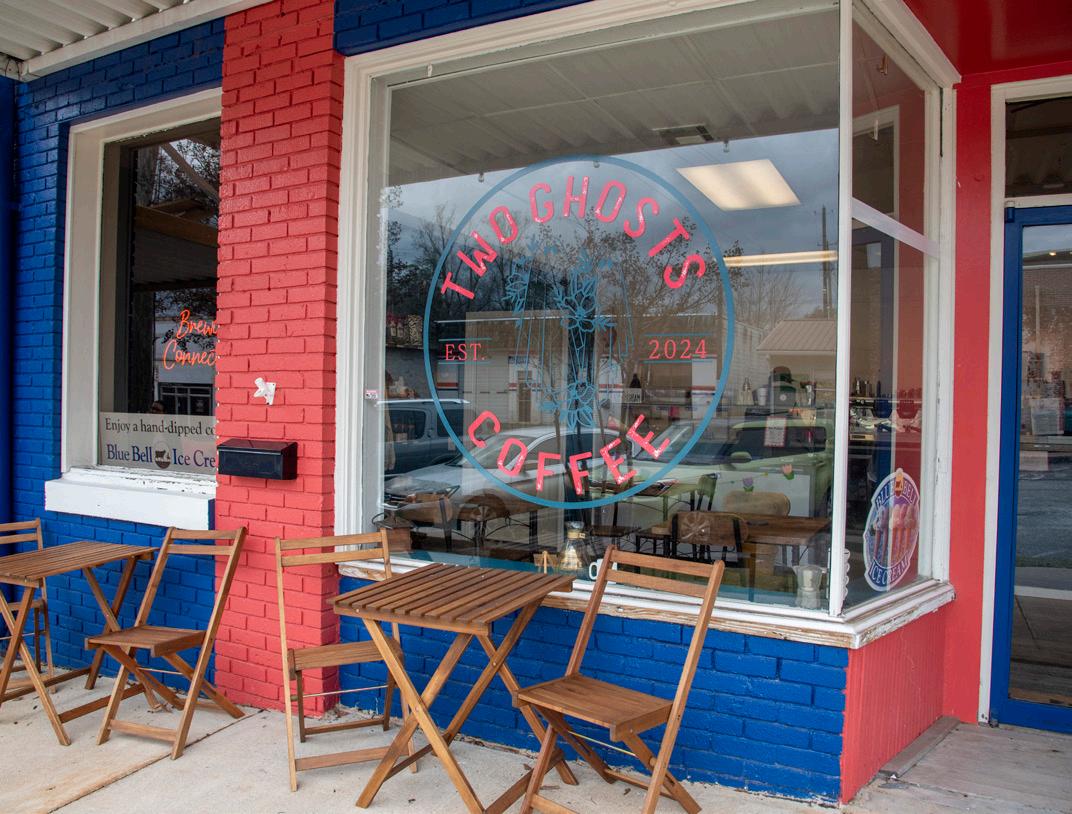
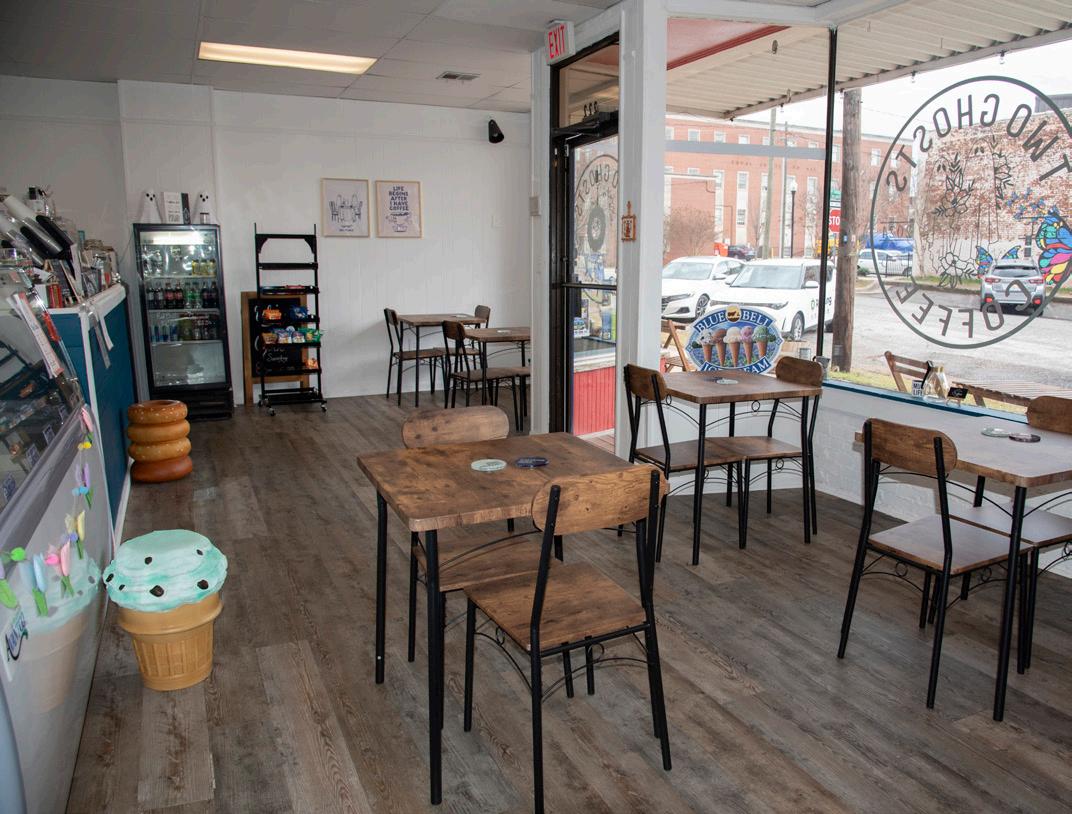
just as unique as the atmosphere. From cappuccinos to frappes and lattes galore, Two Ghosts places an emphasis on crafting one-of-a-kind coffee beverages.
“We’re like a mixology team,” said Stephens. “It’s like running science experiments in the back; we’re making stuff up, and it’s fun.”
One of the most popular items at Two Ghosts is The Grace. This sweet and savory latte features a warm blend of white chocolate and brown sugar, finished with toasted marshmallows. Served hot or iced, it’s a smooth and comforting treat with just the right touch of sweetness.
“The Grace is probably our most popular drink,” Stephens said. “It was called the White Christmas during the holidays, and then I renamed it to The Grace after a local girl named Grace because she literally ordered it every single day.”
In addition, Two Ghost’s menu contains many other coffee-related options for all to enjoy. Cappuccinos, frappés and lattes galore are available to satisfy coffee cravings, along with plenty of non-coffee-related options as well. Stephens has provided an extensive list of other beverage options such as Red Bull infusions, hot chocolates, lemonades and of course, southern-style sweet tea.
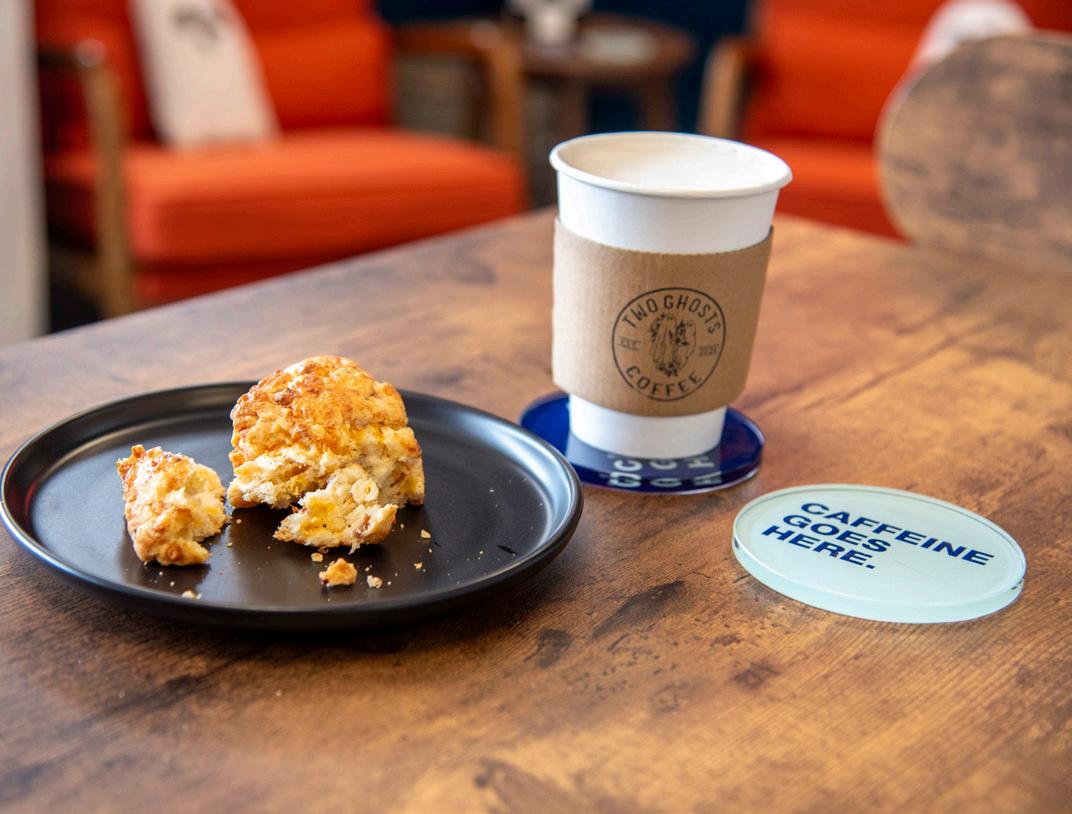

Dream Come True Facing Page: Stephens brought her dream of a coffee shop to life in Dadeville; Clockwise: Two Ghosts Coffee is inspired by her favorite artist; Stephens places an emphasis on serving a delicious food menu; Fun décor livens the space; Two Ghosts is a welcoming environment.
“The Red Bull infusions are popular with the people who want caffeine but don’t want coffee,” said Stephens. “It’s really 30 flavors that you can choose from when it comes to drinks, so you can make it look like whatever you want.”
Stephens also wanted to offer an adequate selection of food on her menu. As a diabetic, Stephens prioritizes welcoming people of all walks of life in her shop, especially those with the same diagnosis as hers.
“I’m a diabetic, so a lot of times when I’m out and about and going to get something to eat or drink, I’m there for food first sometimes,” said Stephens. “I need food to help with my sugar, so that was one reason why my food menu is so big.”
In addition to ice cream and milkshakes, Two Ghost’s offers five separate breakfast options, including savory Nutella toast, New York-sourced bagels, oats, breakfast sandwiches and house-made egg bites. An important aspect to Stephens is to incorporate local vendors as much as possible, and she plans to begin sourcing her eggs from local farmers in the near future.
But what keeps the guests coming back, Stephens says, is the chicken salad.
“I would say our chicken salad has become






county famous,” said Stephens. “It’s crazy. I’m almost flabbergasted at how much chicken salad we sell.”
Since Stephens returned and opened her coffee shop in the downtown Dadeville Square, she has also noticed that the area is flourishing with newcomers and new local businesses. In an effort to chip in with the progress, Stephens has donated to the Dadeville High School band and other entities within the school system. She is also making arrangements to deliver coffee to teachers at the high school.

“I was in the band here when I was in school,” said Stephens. “I was a drum major. So we took up donations for them, and they’re about to go on a trip, so we’re going to make a donation to the trip for food.”
“Even now, when softball and tennis are going on, I’m going to attempt to donate some water or something because I want the school to know that we’re here for them, especially being alumni. It’s really important to me.”
Two Ghosts Coffee is a place for the masses. There is something for everyone to enjoy, just as Stephens intended for it to be.
“I wanted everyone to know that this is a safe space, a welcoming space for anyone, and all walks of life are welcome here,” Stephens said.
Two Ghosts Coffee is located at 222 W. Cusseta Street and is open Monday through Friday from 7 a.m. to 4 p.m. and Saturday from 8 a.m. to 2 p.m. For menu options, online ordering and more, visit twoghostscoffee.com.
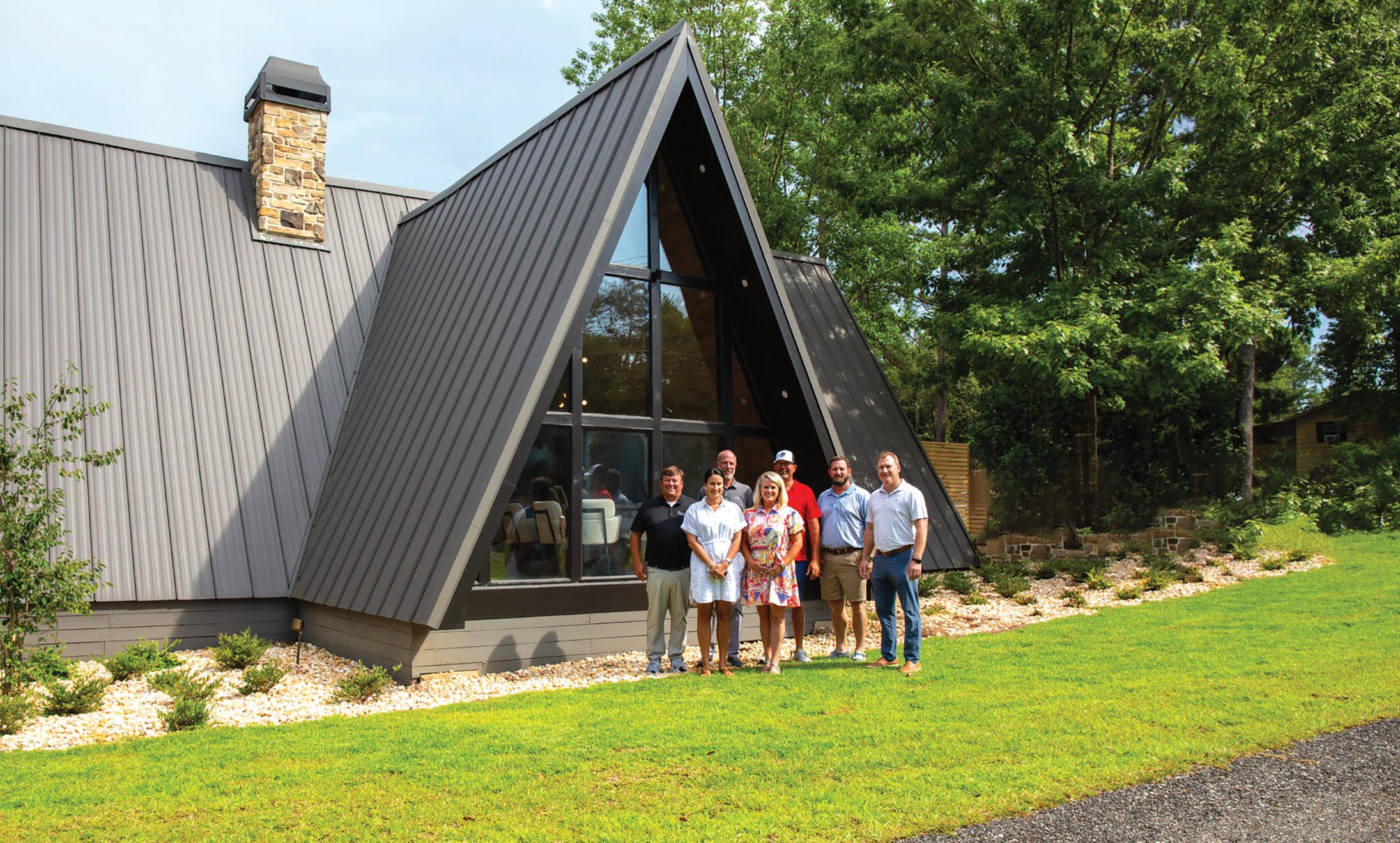







STORY
BEN SMITH

There are a lot of words that could describe Jimmy Keel. He was a builder and engineer, not by way of a college degree, but through education in the school of hard knocks. Keel worked on sewing machines for the Russell textile mills, built the three houses he and his wife lived in, and jerry-rigged his own farming equipment. He once turned a push mower into a turnip cutter and nicknamed it The Green Machine.
Keel was a fisherman who competed in amateur and professional tournaments across Lake Martin and even won a few. He once held the Lake Martin record for the largest striped bass.
He was a city councilmember who ran for election out of spite. Other city council campaigns had told him to take down his Papa’s Produce signs on U.S. 280, and Keel, being a hardheaded personality as well as a friendly one, decided to do the opposite of what the candidates wanted him to do.
“He said, ‘Okay, you want to play that game,’” said Keel’s granddaughter, Bailey Williams. “He just decided that he was going to do it. And he did. And that’s kind of how his whole life was. He decided he was going to do something, and heck or high water, you’re not going to stop him.”
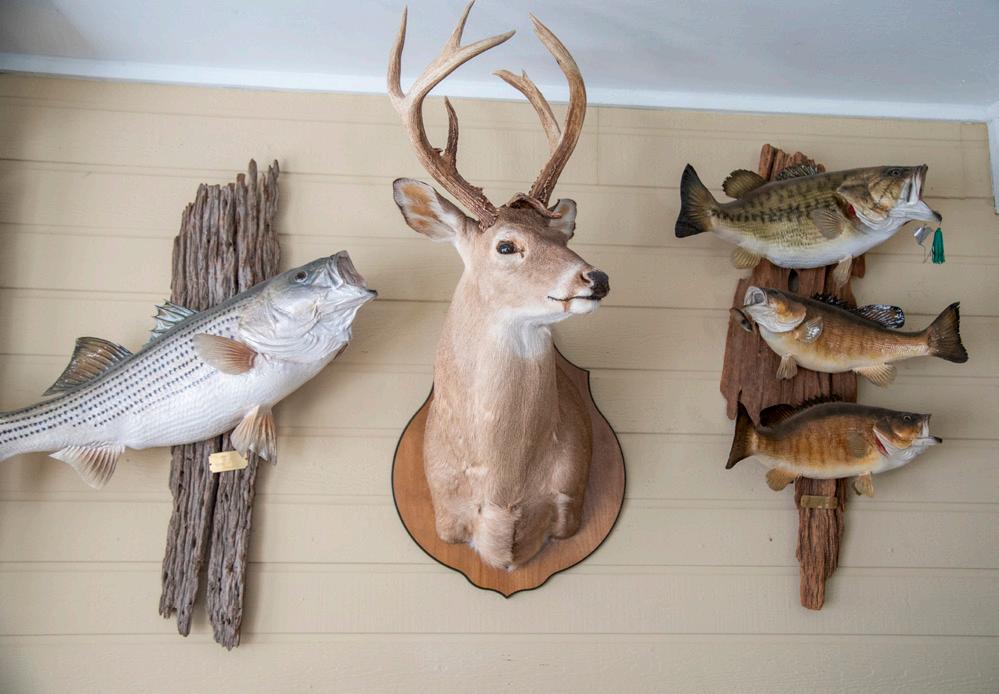
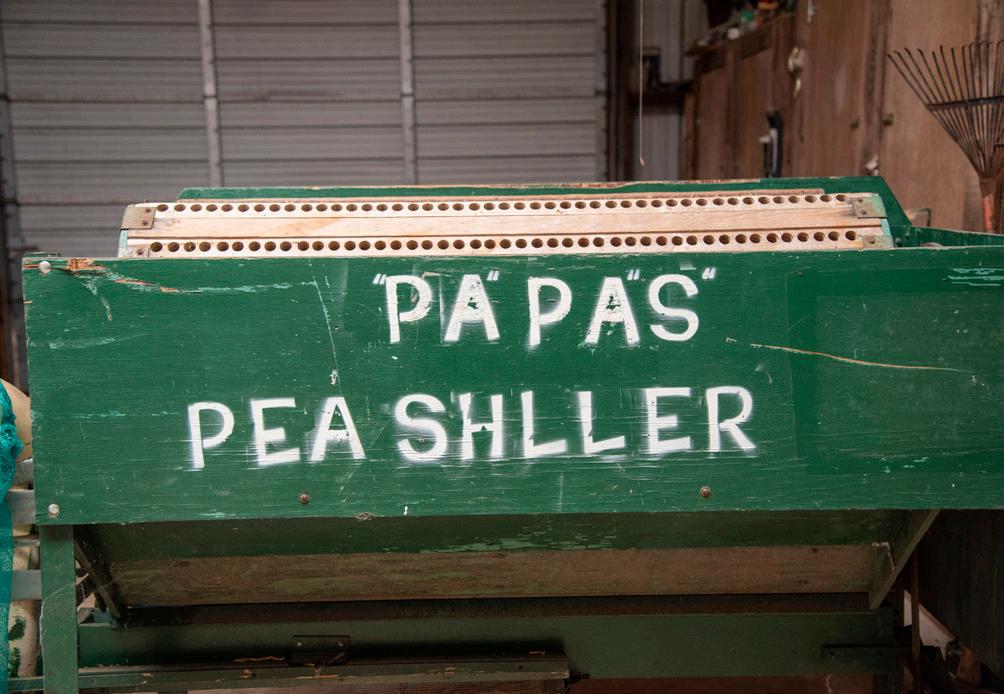
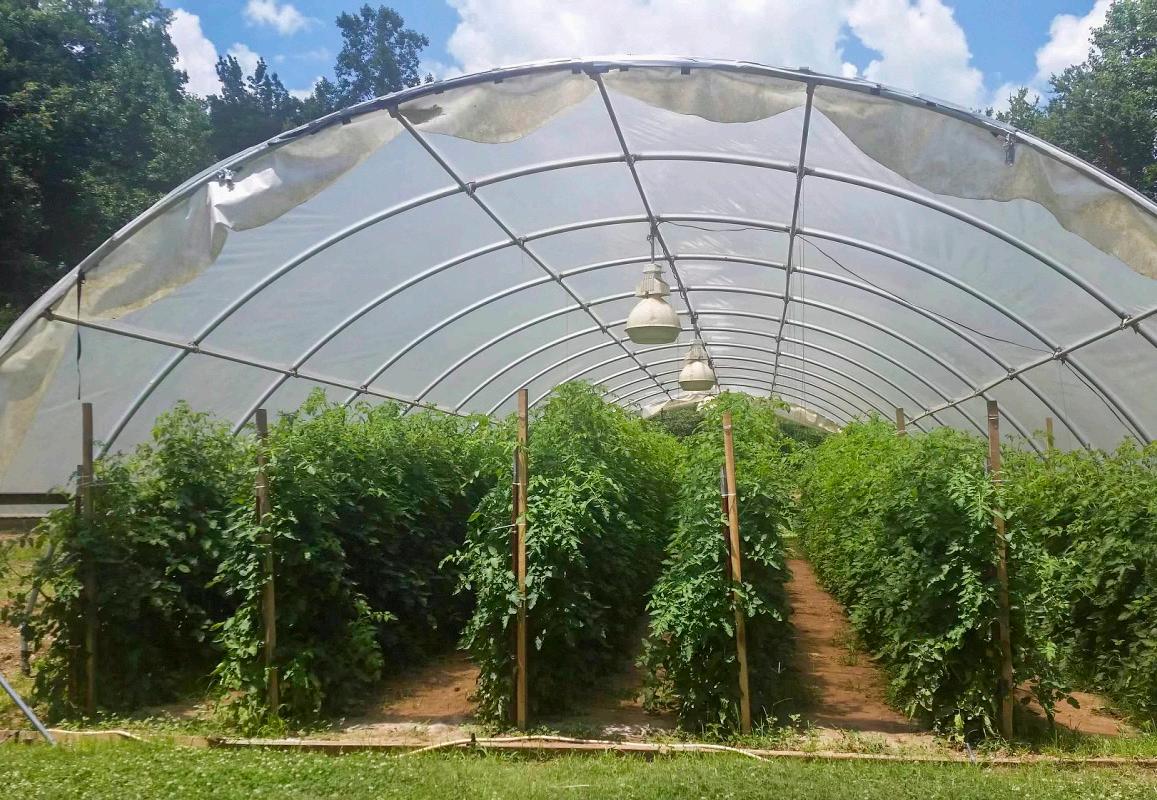

At 78, Keel ended up winning and going on to serve the 6th District of Alexander City for two terms.
He was a writer and a giver, a generous and frank soul who, according to Williams, would “give you the shirt off his back if he thought you needed it.” But, “if he didn’t like you, you knew it. He’d tell you his thoughts. He didn’t care; he’d tell you.”
The fisherman, councilmember, self-taught engineer, husband and great-grandfather was known to many in Alexander City as the purveyor of “Papa’s Produce.”
To the community at large, Keel was a farmer whose tomatoes, turnips and peas were some of the best in the city. People came from as far as Florida and Tennessee to buy Keel’s produce, and lines of cars stretched all the way down their long gravel driveway and spilled out onto U.S. Route 280.
The garden began in 2002, four years after Keel sold his bait and tackle shop. It was small, and it was intended to remain that way. But harvests came out more plentiful than expected, and friends were given the surplus tomatoes that would have spoiled otherwise.
Soon, the friends started asking for more, and friends of friends began asking, and before long, the small, personal garden had expanded into a full-fledged business. Keel sold tomatoes and turnips to restaurants, grocery stores and farmers markets in Alexander City, Dadeville, Birmingham and Montgomery, while also allowing customers to buy produce directly from a square, non-air-conditioned shop a few hundred feet from where he lived.
Well into his seventies, Keel farmed the land mostly by himself – all eight acres. But even he needed help, and he enlisted it in his wife and grandchildren. Every summer, Williams and her siblings would help out at their grandparents’ farm, counting change, talking to people from every corner of the city, and spilling their sweat in the hot Alabama sun as they hauled armloads of watermelons and shirt loads of potatoes to and from hoop houses. Williams looks back at those days of exhaustion and sweat fondly.
“There were these giant buckets around, making sure you didn’t miss any because you’d get in trouble if you did,” said Williams. Keel’s widow, Judy, interjected a few times, “Oh, yes,” she said, laughing and nodding in nostalgic agreement.
Previous Page: Keel's produce garden is now filled with bright flowers; Top to Bottom: He sold his bait and tackle shop for the gardener's lifestyle; Keel's peas were a best seller; Keel's hoop house to grow produce; His widow and daughter keep his memory alive with flowers.
It seemed that souls 40 or 50 years younger than Keel could not keep up with him. To Williams and Judy, Keel was nearly bulletproof.
“There were probably 15 things that happened that should have killed him a long time ago,” said Williams.
“He had more lives than a cat,” said Judy, raising her eyebrows and nodding.
In his life, Keel had been diagnosed with both

colon and skin cancer. He had diabetes, lived with COPD and had to receive a liver transplant due to a genetic malformation. He had a heart attack and wore a pacemaker. He had been shot, and at the age of 73, suffered third-degree burns over 50 percent of his body.
“He always said he felt very blessed to be alive,” said Williams. “Because there are a lot of things that should have taken him out.”
This feeling of gratitude is what led Keel to a deeper purpose in gardening. He was not just selling the fruits of his labor; he was giving his community access to fresh fruits and vegetables, which he made sure were affordable to the people who needed them most.
Keel paid for his two hoop houses with a grant from the USDA, which stipulated a focus on providing produce for senior citizens and low-income families. Keel went through the effort of acquiring SNAP/EBT certification for Papa’s Produce, and when customers arrived who were in need of produce but could not afford it, Keel insistently gave his vegetables away for free.
When asked what was most important to her late husband, Judy responded, “His grandchildren and his great-grandchildren. He loved them and his faith. And
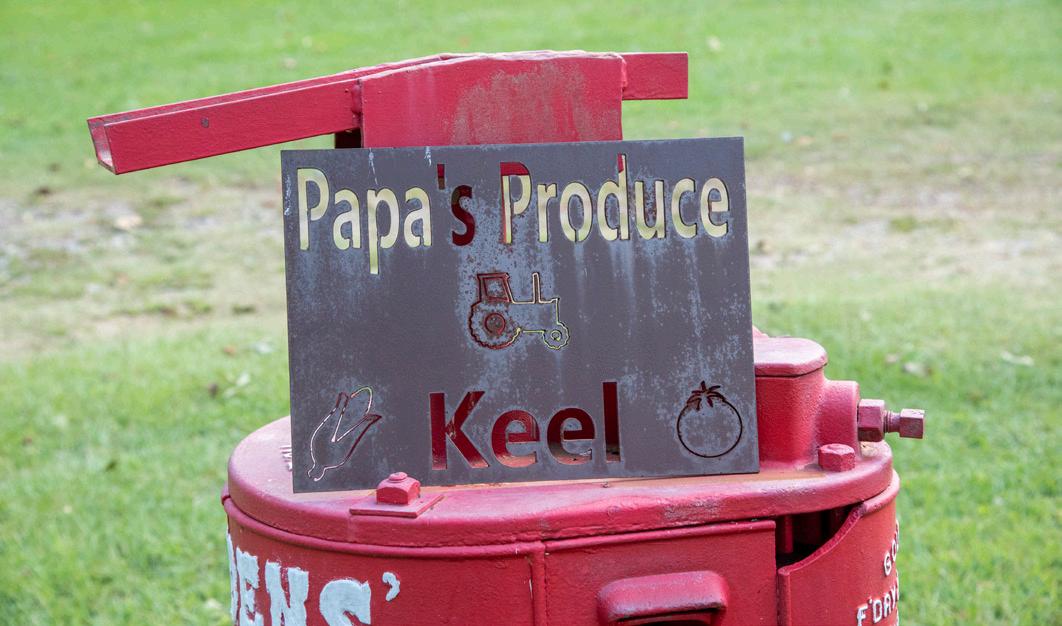
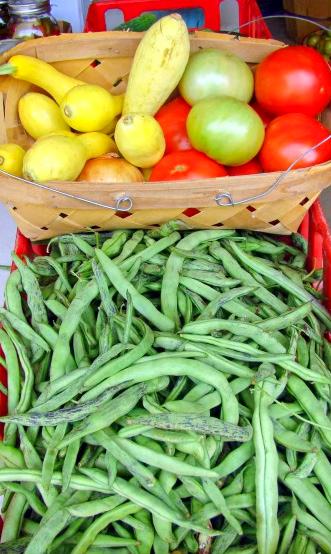
A Life of Giving Clockwise: Keel often gave away his produce to those in need; Papa's Produce was a community icon; Keel worked closely with his family to run his garden; Cars often stretched down the driveway waiting for Keel's abundant produce.

he had a cat that he loved. She’s still here.”
Now, months after Keel passed away, the rows of tomato plants, tall and looming, are gone. Where quenching hunks of watermelon used to grow, the dirt is dry, caked and cracked, except for a single row that is covered by a length of flowers. They are all shades of pleasant colors: deep, dark reds and oranges, spectacular purples and vibrant pinks.
Judy and her daughters go out and cut these flowers. To them, it is a way of remembering their husband and father. The hoop houses are not full of produce; there are not lines of cars in the driveway waiting to pick up produce; fall has not brought with it a mad rush for harvesting and preserving produce; but there is still some growth to this farm, however comparatively small, which allows for something to be the same, to be like it was when Keel was alive.

TCMGA hosts the third annual Plants in the Park in Dadeville
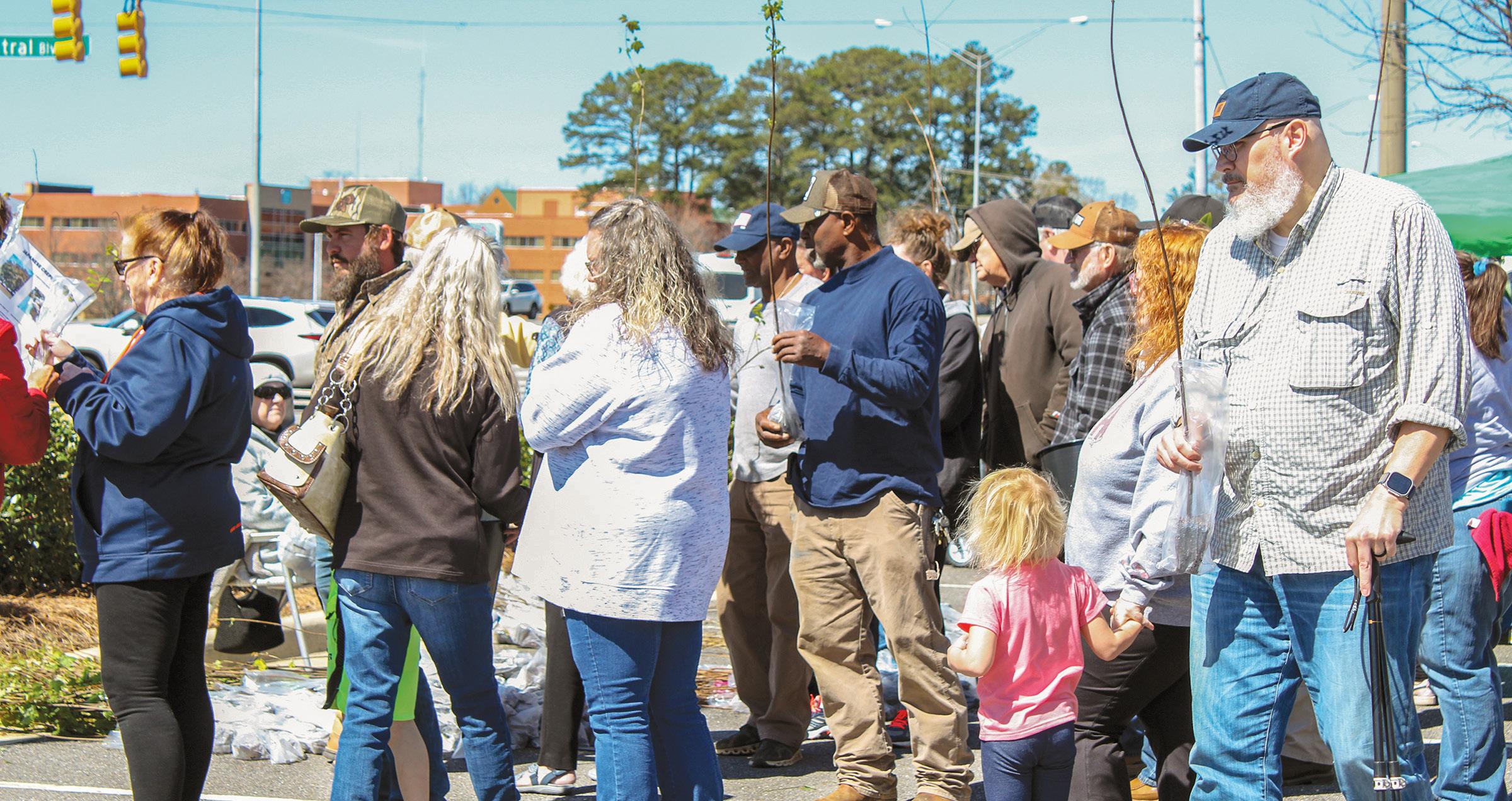
Communities are founded upon the growth and compassion that is within them. Arbor Day is designed to promote and encourage community members to explore nature and plant trees. It is always celebrated on the last Friday in April, and is also used as a commemorative ceremonial event. Trees are often dedicated to loved ones on this day. Tallapoosa County Master Gardeners Association will host their third annual Plants in the Park Arbor Day Celebration on April 12 from 9 a.m. to 3 p.m. Courtesy of Alabama Power, more than 700 trees will be given away throughout the duration of the event.
“We want to spread Arbor Day trees all around,” said Jennifer Gregory, who is serving on the Arbor Day Celebration Board.
Gregory has been a Master Gardener for 12 years. After moving to the Dadeville area in 2020, Gregory took her years of experience, mostly in Shelby County, and started contributing to the Tallapoosa County gardening community. Gregory knows that putting beauty into the community is what helps get beauty out of the community.
Last year’s Arbor Day event was such a success that all of the trees in stock were gone within a couple of hours. This year, the Master Gardeners plan to give away a selection of trees that will include a vast variety of all sorts. The trees being gifted will include those of sawtooth oaks, crepe myrtles, red maples and Chinese pistachios and more. The Tallapoosa Master Gardner’s Association will also be on site selling lemon trees, lime trees and purple fountain grass as well.
Attendees can also expect to hear from guest
Arbor Day Fun
Above: Tallapoosa County Master Gardeners Association hosts a tree giveaway for Arbor Day. The association has more than 700 trees to give away this year.
speakers such as Tom Campbell, Shane Harris and Jerry McGukin. All three are devoted arborists and will touch on the importance of planting and preserving beautiful trees. Campbell will dive into the planting of a tree discussion. Harris will be speaking about azaleas. McGukin will be there to answer questions or assist with any queries that guests may have.
Guests can also expect to see a handful of local vendors and even the Chik-Fil-A cow to be there. Vendors will include Carolyn Whorton Brown, Canoochee DayLily Garden and Millstone Japanese Maples.
“This is an event for all families to come together and enjoy,” Gregory said. “We are so excited to see what kind of turnout this year will bring.”
The event is sure to be amplified with loads of excitement. The idea is to engage the community and unify Tallapoosa County members into the significance that trees have on our world.
“What we really want to do is have the community be engaged in our environment with the trees, and to help beautify our city,” Gregory said.
This year, the Arbor Day event will take place at Pennington Park in Dadeville. Dadeville has been named Tree City, USA for multiple years in a row. This year’s Arbor Day event is also set to be Kurt Pfitzner’s last event held at Pennington Park, a beloved, privately owned park in the heart of Dadeville. The rain date for this event is April 13 from noon to 4 p.m.
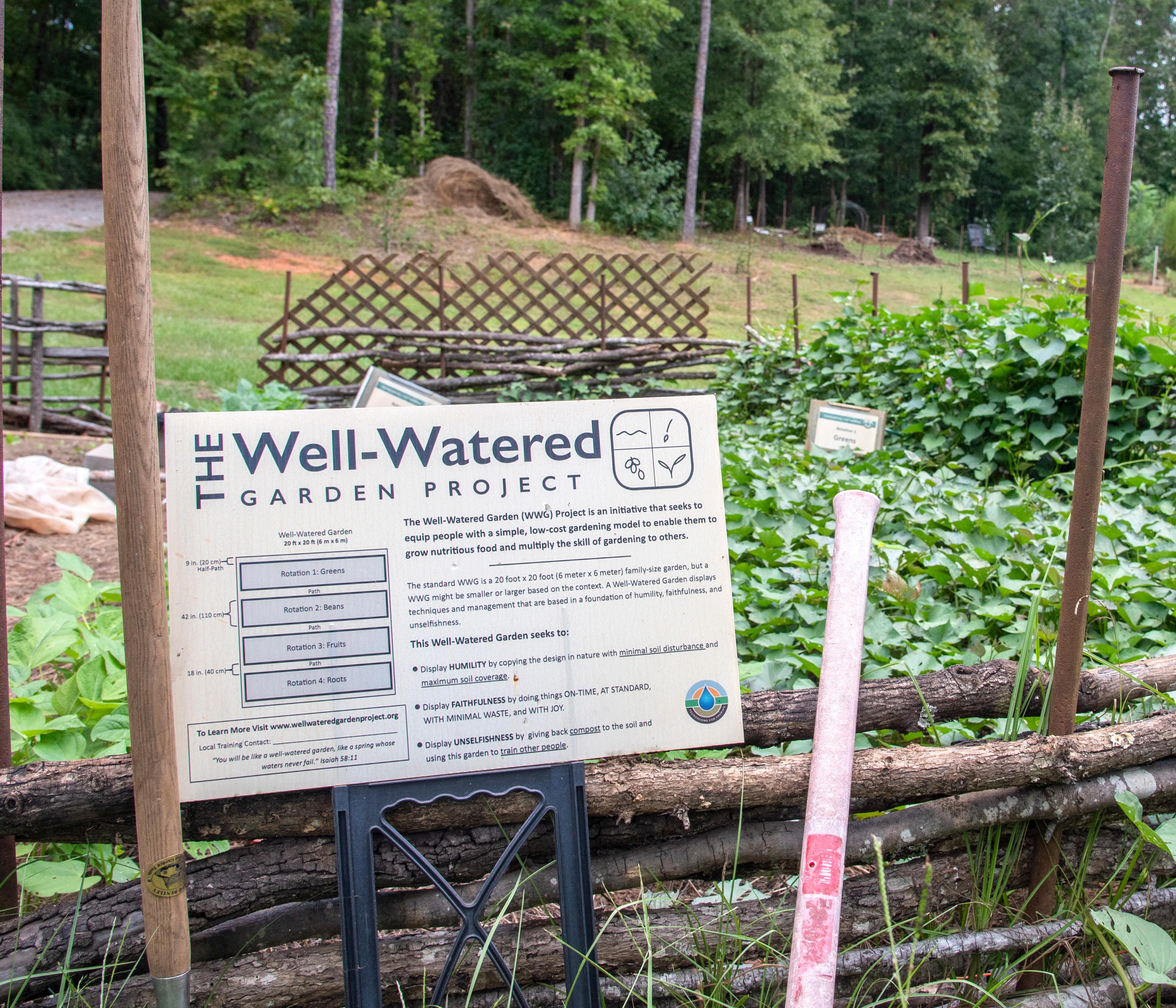
So many share the same dream: to be seated on a porch, boots kicked up on the railing. The sun is shining down, and having worked beneath it all day, the shade of the porch feels godly. All around are crops – peaches, corn, okra, potatoes, carrots, peas and green beans – all planted in neat, clean rows. In the pantry are the fruits of previous harvests, a large collection of homegrown pickles, jams, cabbage and anything else that will fit in a mason jar. There’s so much that you know, by the time the next harvest comes around, you’ll have to give the majority away to friends and family members to make room.
This dream is one of freedom - one that shucks reliance on groceries, companies and dollar bills for a reliance on dirt, seeds and rain. It’s pleasant to fantasize about such a uniquely American lifestyle, but achieving it requires long days in the sun, failed harvests, years of trial and error, and heaving and sweating - all to produce a single crop.
It’s an even more difficult process for beginners. Entering the world of agriculture requires hours of research, a hefty pocketbook and a lifetime of learning. There is something about it, though, that makes it all worthwhile. That’s what Noah Sanders found, at least.
Sanders grew up around farming. Even so, when it came time for him to follow his own path and manage his own crops, he knew he needed help. He dove into research, reading books, participating in online forums and consulting experts. Mostly, though, he learned from trial and error.
Sanders and his wife, Dorothy, live on a 150-acre plot of land with their seven children, where they grow everything from potatoes and okra to eggplants and yard-long beans. Growing in long vines from a shady verandah adjacent to the front porch are grapes. In the backyard are apple trees and towering okra plants. There are bushy growths of purple lavender, rows of potatoes, carrots and eggplants as

well as a patch of small tomatoes – not planted by Sanders but by pure coincidence – grows in a brush pile.
Further away from the house are four beehives crafted out of old dressers and bookshelves. It seems that around each corner, over each log-strung fence, and behind every bale of hay, there is a different crop. Sanders can talk at length about each one.
The family works together to raise cattle, shear sheep, haul hay, chop wood, milk cows and clean stables, and everything produced is either consumed by the family or sold to local farmers’ markets and restaurants. The family’s house relies on rooftop solar panels for electricity.
For years, Sanders and Dorothy’s dream had been to build this self-reliant homestead. And eventually, after installing rainwater collectors, septic tanks and rows of vegetables, it happened. Now, Sanders’ mission is to help people realize the wealth of benefits inherent to farming, even if that means simply tending to a small 4-foot by
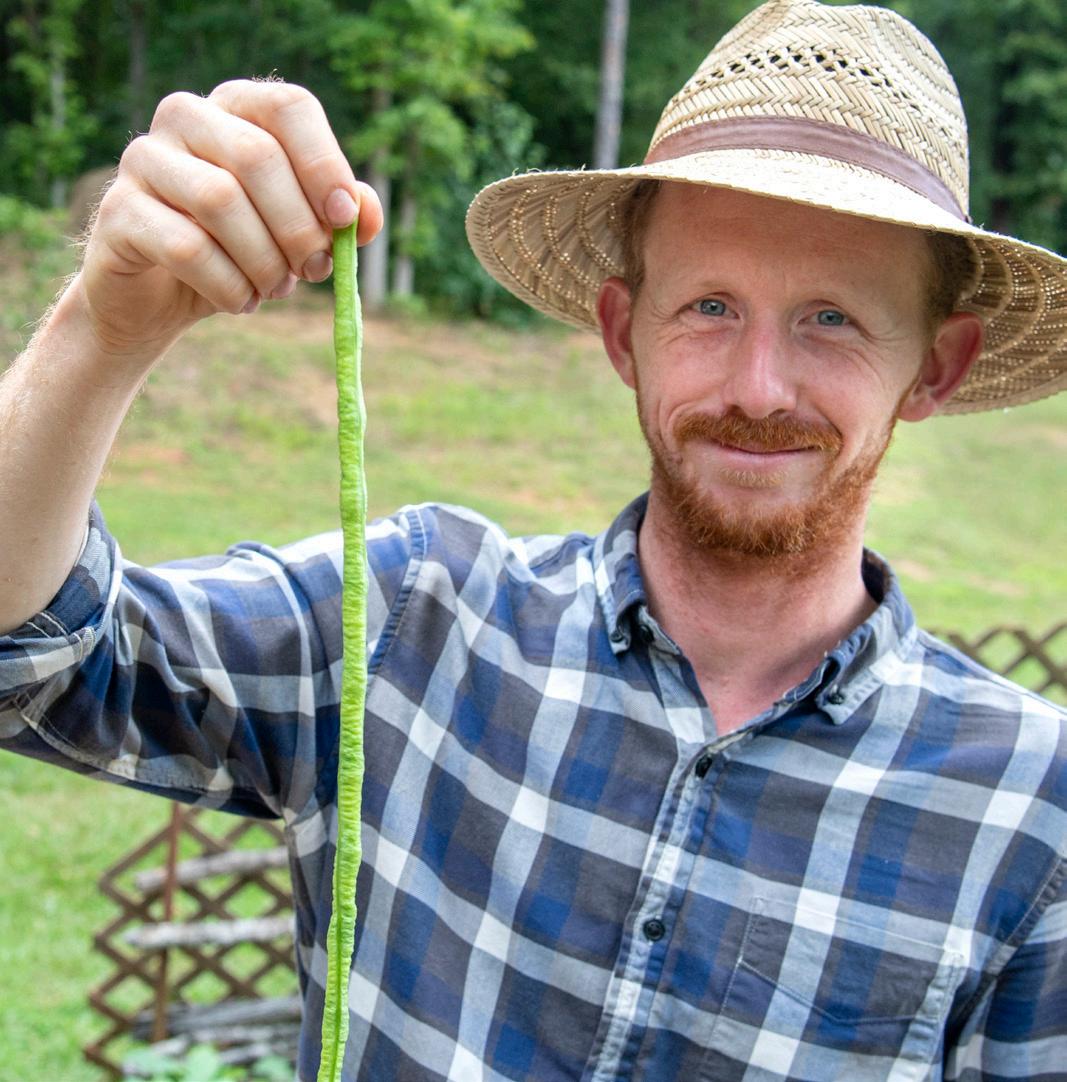
4-foot patch of tomatoes. A gardener doesn’t need acres and acres of crops to benefit mentally, spiritually and physically from agriculture. For those who are new to agriculture but hope to one day live that self-reliant homesteader lifestyle, Sanders says that it is essential to start small.
“I just see so many people get in too fast, too quick, because there is an appeal to it that’s somewhat romantic at times that just makes people want to jump all in,” said Sanders.
At its surface, agriculture has physical benefits. While spending hours in the sun and soaking up vitamin D, gardeners are moving, walking, sweating and lifting. In addition, gardeners are typically eating healthier, more nutrient-dense foods, which also go a long way in benefiting physical health.
However, many neglect to realize the spiritual benefits of agriculture. As a devout Christian, it is something Sanders emphasizes, having written an entire book on the intersection of spirituality and farming.
“When people are wondering what your faith is about, you can use a garden to explain how you’re trying to live out humility, faithfulness, unselfishness,” said Sanders. “It’s all about others and being generous with the land. It’s all about being humble, to approach it in a way that you’re listening and you’re learning.”
Sanders gives regular workshops to interested parties on how to farm sustainably while also producing a sizable crop. His advice is to start small; in order to create a large, sprawling field of blackberries, gardeners must first start with a tiny, foot-long patch. He compares the process to learning to play an instrument.
“If you try to play Vivaldi as the first piece you learn on the violin, you probably won’t be playing the violin next
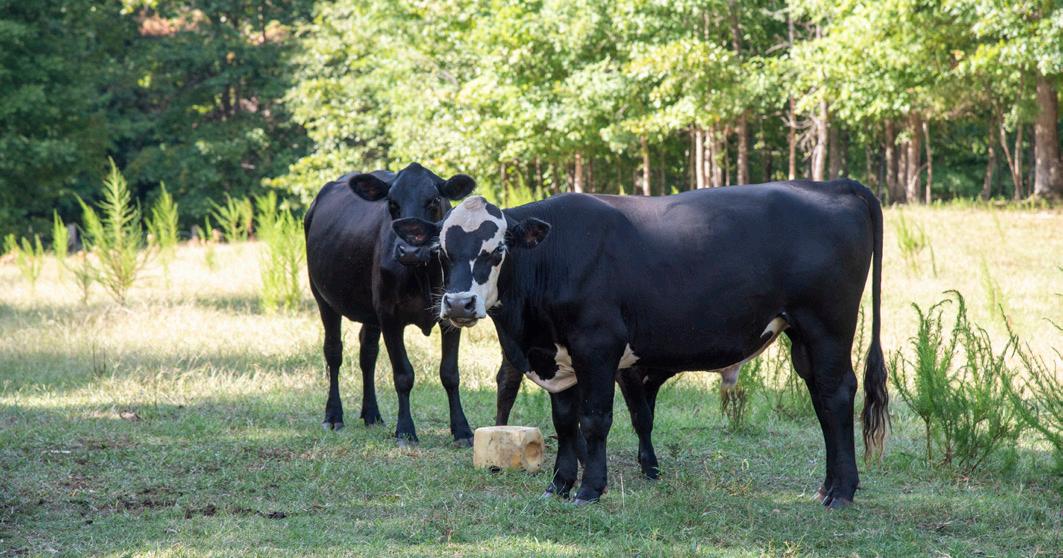

year,” said Sanders. “You have to start first with Twinkle, Twinkle, Little Star; then you can move on to the harder stuff.”
For those hoping to one day have their own abundant harvest of crops, Sanders recommends reflecting on a few questions. First, gardeners and farmers should consider their motivations by examining the reasons they want to put time and energy into a new garden or crop. A clear and focused motivation will guide decision-making throughout the process and will provide an idea of the desired result from the garden.
Gardeners should also consider what their resources are, such as land, tools and financial resources that will be available to create or expand this garden. They should also weigh their prior knowledge of gardening and the time commitment for success. Answering these questions will help determine limitations.
It is also important to think about which crops are desired. This could be either the simplest or most difficult question to answer. Figure out, based on the resources and limitations, what exactly would be enjoyable to consume. Also, consider the opinions of everyone involved in the garden.
Finally, gardeners should pick a system and learn it. Sanders recommends starting with a structured, proven system for growing whatever vegetables, fruits or grains they hope to one day reap. This could mean speaking to a local farmer or following a step-by-step guide from a book or a YouTube video. Whatever way a curious gardener may find the information, make sure it is tried and true, and then follow it as closely as possible. Sanders compares it to following a recipe when cooking, saying that the best chefs around the world all had to begin by following step-by-step recipes. Once they had learned what they could, they began to innovate by testing new theories, ideas and methods.
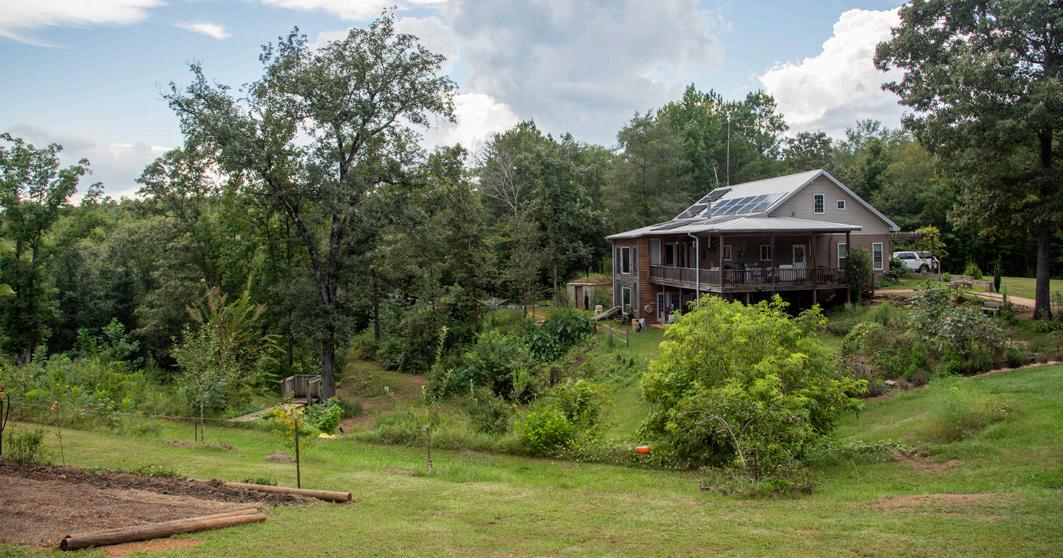

Clockwise: Sanders emphasizes starting small and growing into your space; His farm is located on 150-acres; Sanders encourages monitoring joy in the farm work; It is important to grow produce that is desirable to eat afterwards.
Part of Sanders’ training in agricultural methods took place in Zambia, where he and others were tasked with training local farmers to produce rich, bountiful harvests.
Much of the education came down to four principles that, when followed, help ensure beneficial and productive farming practices.
The first principle is to do things on time. Seeds need to be planted by certain days of the year, and crops need to be harvested at certain times as well.
Second, do things to a high standard. Excellence is a wonderful mile marker, and adherence to it can facilitate attention to detail and a sense of pride in your work.
Third, Sanders emphasizes the importance of allowing minimal waste in his farming practices. Doing so fosters gratitude for what you have, as well as creativity to get as much possible use out of the resources you do have.
Finally, Sanders advises new farmers to monitor their joy level. He says it is a good indicator of their attitude toward their workload; if their joy is significantly less than when they first started, it is likely they have taken on more than they can handle. It all goes back to the so-called golden rule Sanders tells newbies: start small.
“I made way more money off a quarter acre of market gardening than I did when I was trying to do two acres, because it was how well I did it,” said Sanders.
For more information, visit Sander’s website at redeemingthedirt.com.
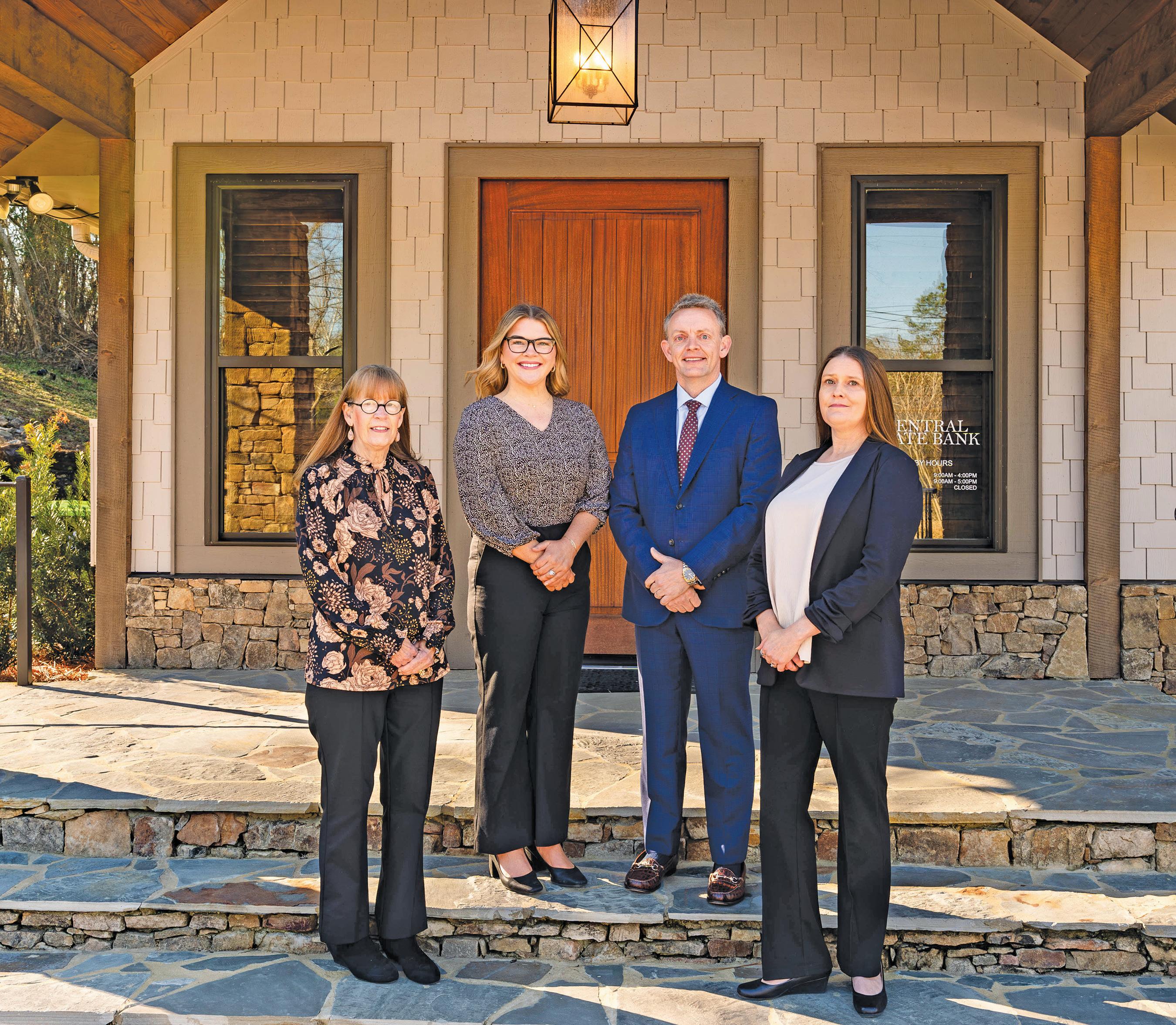




Martin




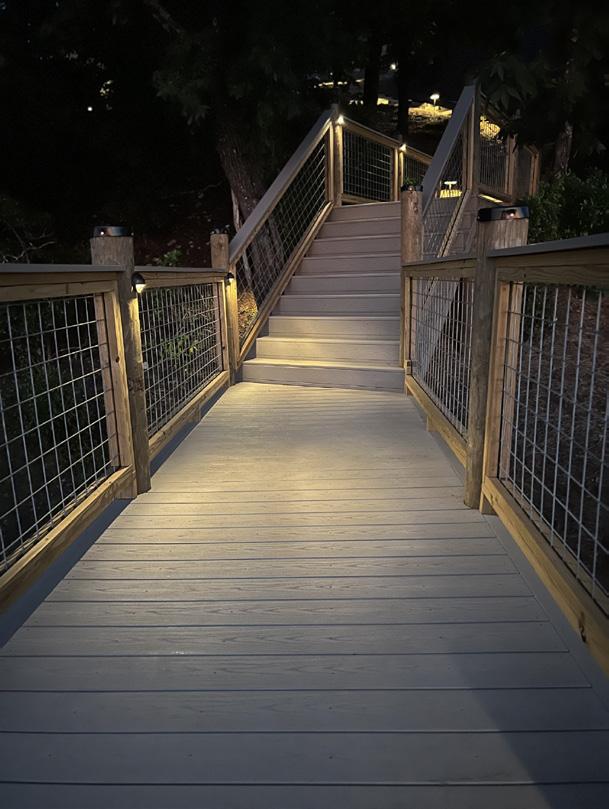
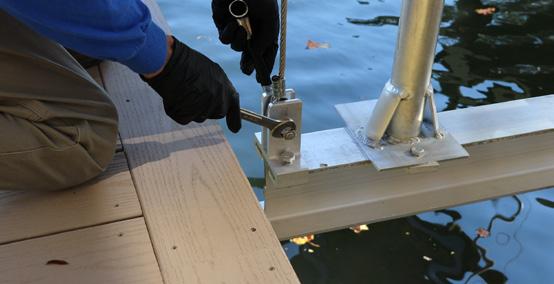

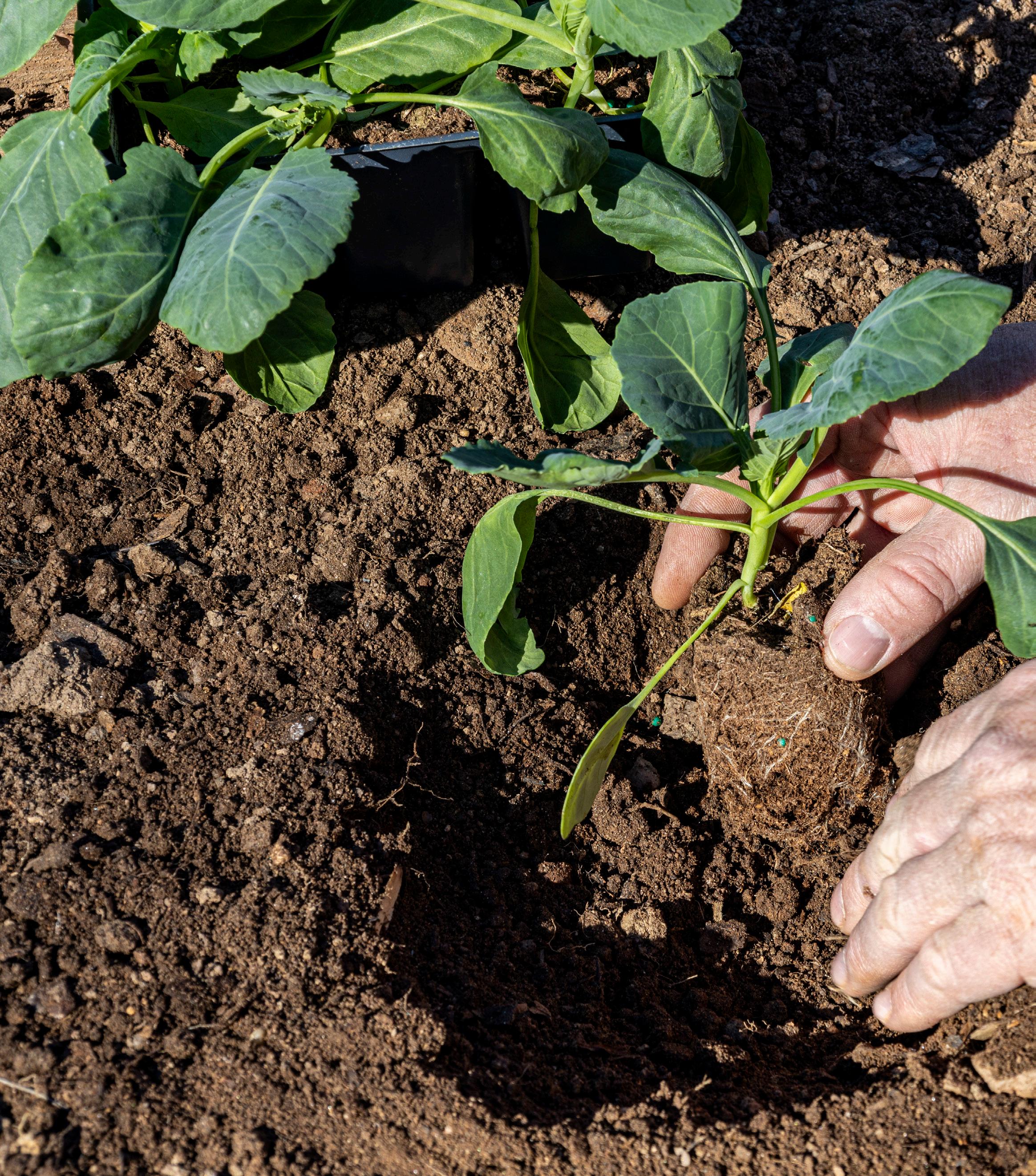
It all starts with the SOIL
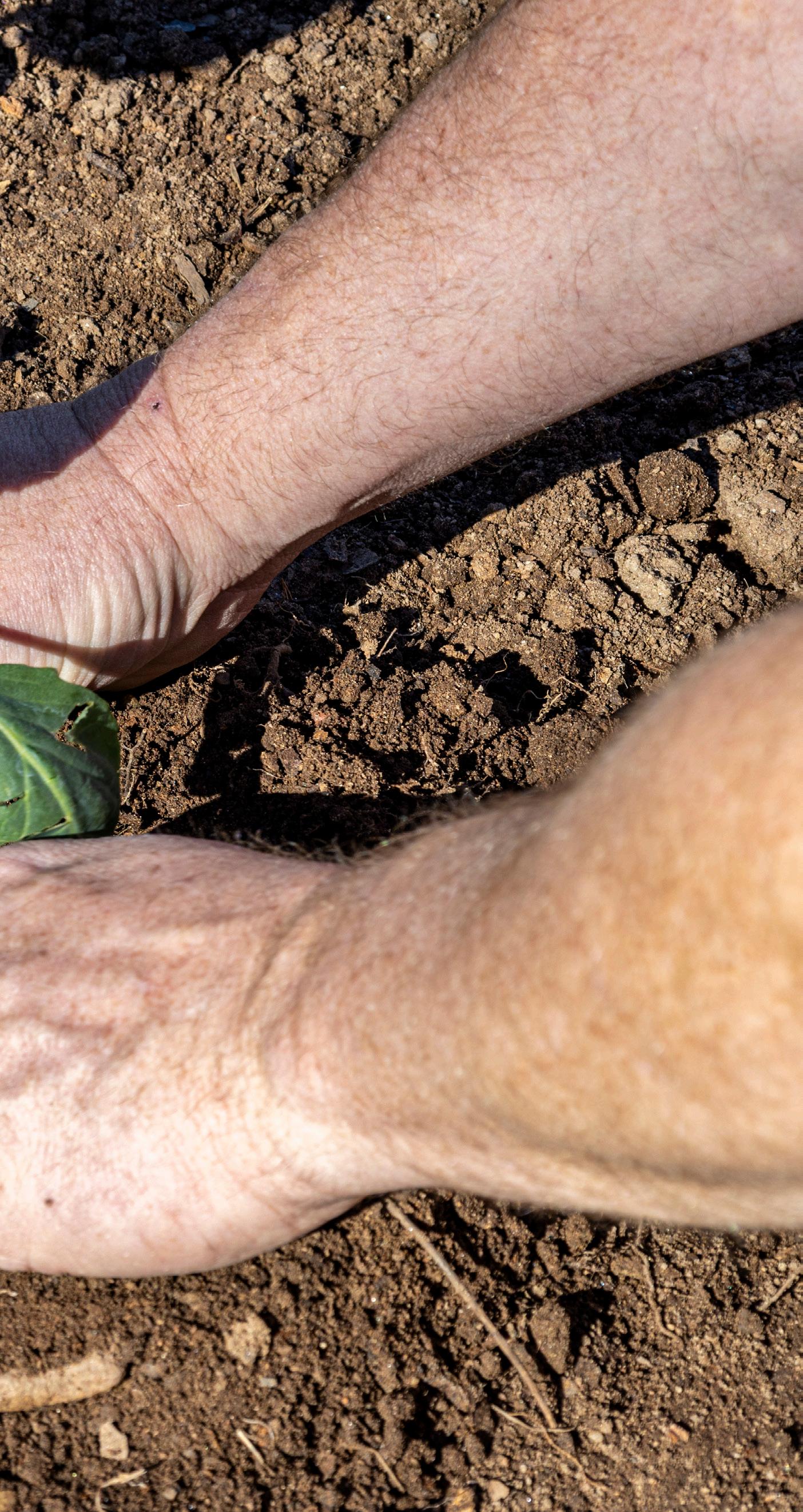
Another spring and growing season is upon us, with many people prepping their vegetable gardens for planting or anxiously adding various new plants to their landscapes. Traditionally, the first chore of growing vegetables, flowers, or shrubs has been to break up that hard Alabama ground to help plants thrive better. This means getting the tractor, tiller, or shovel out to loosen the soil upon planting. Or if the dirt is really bad, then the native soil must be amended so that it can sustain plant life.

Shane Harris
Many people claim they do not have a green thumb and can’t grow anything. That might be true, as some folks just seem to have it or they don’t. Regardless of what color your thumb might be, the fact is any success must begin with the foundation – it all starts with the soil. Poor soil will always equal poor results. Many areas of East Central Alabama simply have hard ground, rocky soil, or nothing but red mud. These are not ideal conditions.
Getting the Dirt on Soil
Facing Page: Knowing the basics about soil can help set gardeners up for a successful planting season.
When I first came to Tallapoosa County as the new horticulture agent, I will admit that I couldn’t even grow tomatoes in my garden. The ground was nothing but hard red dirt that didn’t drain well. My little tomato transplants just sat there all spring and wouldn’t grow. Here I was, a young county agent trying to educate folks, and I couldn’t even grow a tomato. Just to improve my credibility alone, I had to do something different about my soil. I abandoned the traditional method and converted my garden plot to raised beds, where I invested in a good mix of topsoil and compost. Experienced gardeners and farmers know that all soils are not the same, and the soil in your yard or garden



is likely different from your neighbor’s. Dr. Charles Mitchell, retired Extension soil specialist, has stated in past master gardener classes that our Piedmont soils found here in East Central Alabama are some of the oldest soils and highly weathered. They are generally well-drained and relatively fertile. 200 years ago, they were the most productive soils in the United States. In the early 1800s, almost every acre of the southern Piedmont region was cleared for cotton production. Poor farming practices for decades led to severe erosion and have presently left our Tallapoosa County soils depleted of nutrients and fertility, with very little topsoil remaining.
Soils are different because of one or more of these five soil-forming factors: The parent material from which the soils were formed, the climate under which the soils developed, living organisms on and in the soil, the topography or slope of the land, or the age of the soil itself.
Dr. Mitchell often explained that the upper part of the soil where we grow plants is called topsoil. This is where 80 percent of the roots are found, along with most of the soil’s bacteria, fungi, actinomycetes and other microorganisms. Here is where you’ll find earthworms, larvae of insects, nematodes, moles,
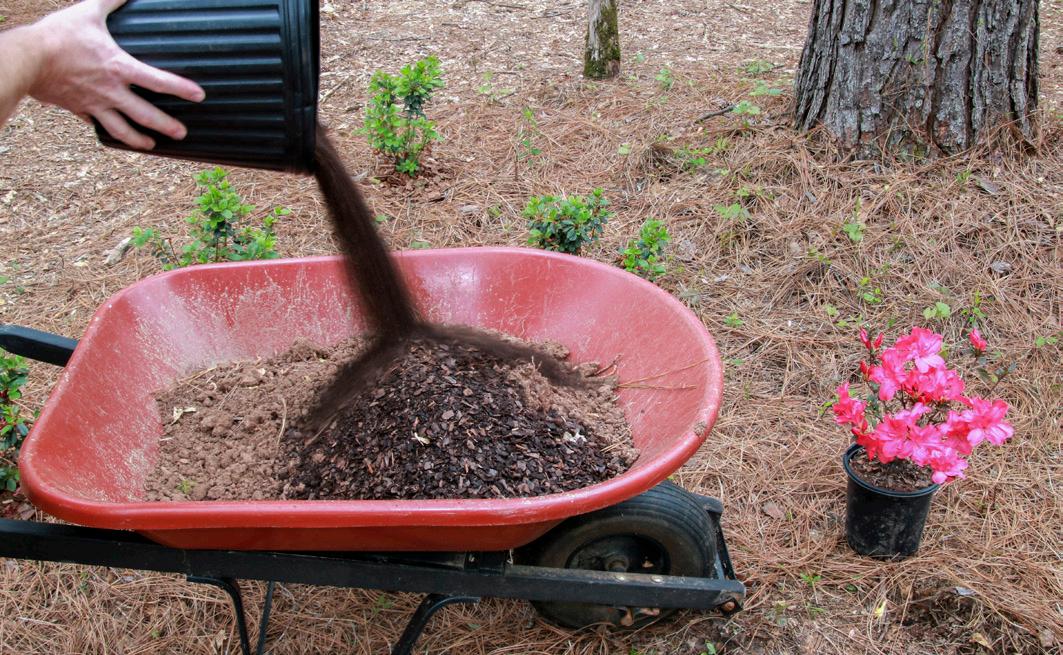
Top Left: Adding organic material to hardened dirt can help with successful plant growth; Top Right: The ideal soil for plants to flourish is soft, dark and almost black in color.
crickets and other living organisms. Topsoil is also where most recycling occurs as dead leaves, twigs, roots and other organisms decompose, and their nutrients are taken up by new roots. Organic matter accumulates in topsoil, which often gives it a darker color.
If we had true topsoil, like what is found in the Midwest of the United States, then our soils would be perfect and fertile, and we would have no issue growing things. But most areas of the Piedmont region, including Tallapoosa County, are left with subsoil that consists of an accumulation of clay. The clay content is why subsoils are generally stickier than topsoil. Subsoil is that red clay dirt that we get on our shoes and our vehicles and what we try to farm and garden in each year. Roots can and do grow in subsoil; it can be a tremendous reserve of moisture and can provide some nutrients for plants when the topsoil is too dry.
So upon knowing what kind of soil we have around our home or farm, the challenge becomes how to

improve its properties to make it more suitable for growing plants. The ideal soil for plants is soft, dark, almost black in color and is rich in organic matter. An example of this type of soil is the top layer of compost found on the forest floor under the leaves. Over time, organic material is broken down and added to the soil, giving it that rich color.
Keep in mind that an ideal soil is about one-half air space and one-half solid soil mineral, with 2 to 4 percent organic matter. Under ideal growing conditions, about half of the air space will be filled with water. If the soil is too wet, plant roots can’t get the oxygen they need. Yes, roots need oxygen just like other organisms. When it’s not available, the roots will die and so will the beneficial soil microorganisms.
The color and texture of your soil can tell you a lot. Is the plowed garden soil all red and clumpy? That is because it is all a clay subsoil with no organic matter. Is the soil from the hole you just dug brown and crumbly? If so, that is an ideal topsoil with organic matter present. When buying topsoil, beware of the label. Go by color and texture. Red subsoil is often sold as “fill dirt.”
No one will have or find the perfect soil, but it is something to try to achieve. The best topsoil for growing plants will be a true loam of parts sand, clay, and organic matter. It will provide a balanced ratio of nutrients and good drainage, with organic matter present to help retain moisture.
The best way to improve any soil, whether it is poor, hard, or wet, is to change its structure by adding organic material. It simply comes down to creating a new topsoil by amending the subsoil. Incorporating compost, dried leaves, grass clippings, aged pine bark, or plant residue will slowly improve the soil. Organic matter improves the physical condition of the soil by increasing its water-holding capacity, allowing roots to grow better, supplying plant nutrients, and decreasing erosion. For large garden areas, cover crops are often used to improve the soil over time. When planting new trees and shrubs, amend the native soil with soil conditioners of rotting pine bark or true topsoil.
By investing in and taking the time to improve poor soil conditions, your plants will thrive and produce better. May this lead to a more productive crop and happier, healthier plants.
For help on other home and garden questions, contact your local county Extension office or visit us online at aces.edu.
~ Shane Harris is the County Extension Coordinator for Tallapoosa County.




Anoushka Shankar Saturday, March 22
7 p.m.
celebrity series
Dorrance Dance
The Center Will Not Hold Friday, April 4
7 p.m.
dance & movement series Catapult Sunday, April 6
3 p.m.
family series
Hadestown Monday, April 28 Tuesday, April 29 Wednesday, April 30
7 p.m.
broadway series

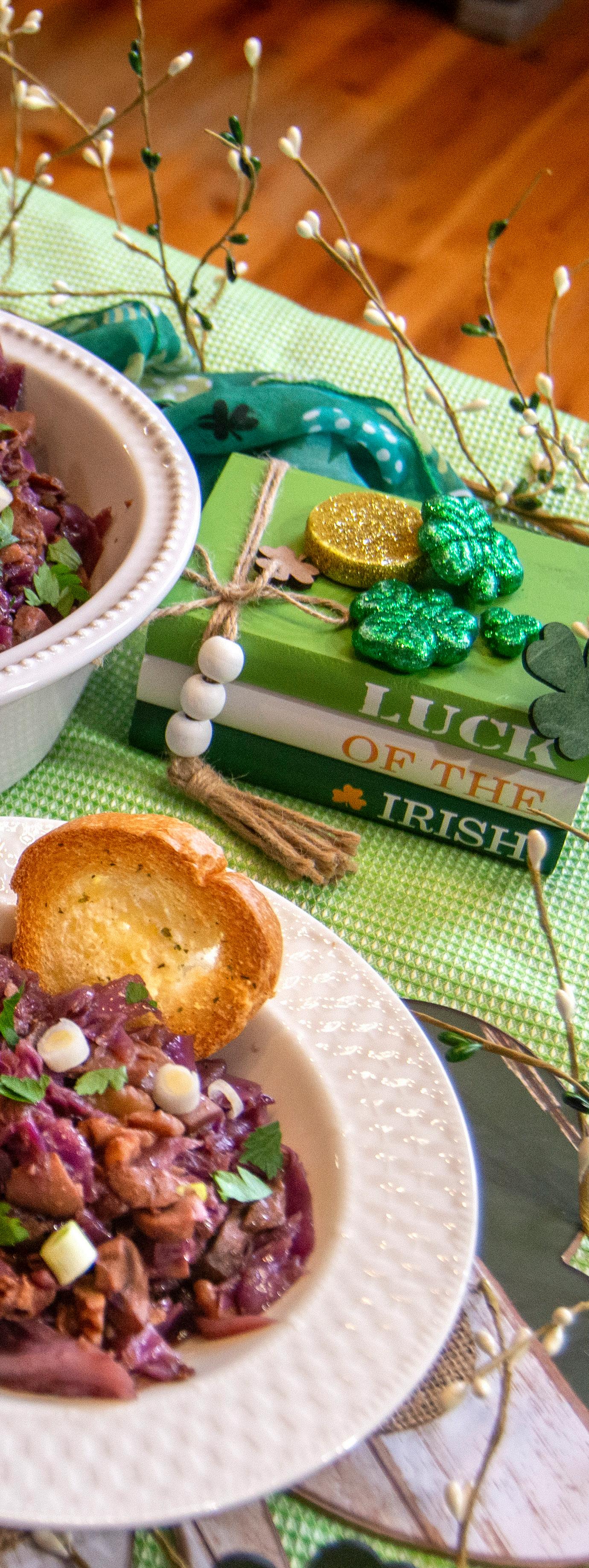
Cabbage is a major feature and a vegetable associated with many Irish dishes. While often paired with corned beef, this vegetable offers much more. From rustic farmhouse cooking to modern and traditional recipes, cabbage remains a staple in Irish households today.
This recipe is a perfect example of how simple ingredients can come together to create a flavorful and filling dish. When served as a side dish, the richness of mushrooms, the sweetness of onions and the crunch of toasted nuts all tie together with the cabbage, creating a true celebration of Irish flavors.
Cabbage is a versatile ingredient that shines in soups, stews and baked dishes. It’s budget-friendly and nutritious, making it a great addition to any meal. Serve this alongside roasted meats with a thick slice of bread for a hearty and comforting combination.
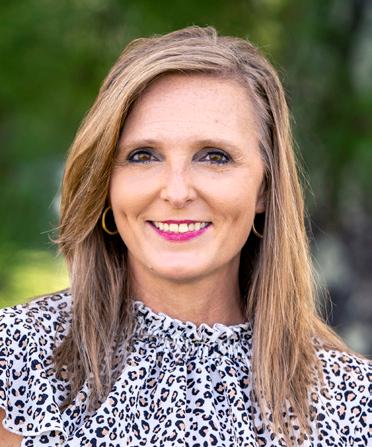
Whether you’re looking for a cozy side dish, a new way to enjoy cabbage or a nod to traditional Irish flavors, this recipe delivers. Give it a try, and you might make it a regular part of your meal rotation and bring a taste of Ireland into your kitchen.
1 medium red cabbage
2 tablespoons of oil
8 slices of bacon, cut into bite-size pieces
1 medium onion, diced 12 ounces mushrooms, sliced
1 cup walnuts or pecans, coarsely chopped
1 teaspoon each of salt, pepper and sugar
1 1/2 cups beef stock
1/4 cup fresh parsley, chopped; optional Butter slices, optional
INSTRUCTIONS:
Quarter the cabbage lengthwise and discard the core. Slice the leaves into ribbons. Heat oil in a deep skillet or Dutch oven over medium heat. Cook the bacon until it is crisp. Add the onion and cook for 5 minutes until translucent. Add the mushrooms and cabbage and cook for about 10 minutes until softened. Stir in nuts, salt, pepper and sugar, and cook for an additional 3 to 4 minutes. Pour in beef stock, cover and bring to a boil. Then reduce the heat to low and simmer for 20 minutes until the cabbage is tender. Add chopped parsley and a pat of butter just before serving.
• Make it heartier: Add browned sausage for a main dish.
• Switch Up the Nuts: Walnuts provide a deep, earthy flavor, but pecans add a slightly sweeter crunch.
• Try Different Mushrooms: Baby Bellas or portobello mushrooms will work and add flavor.
• Add a Touch of Sweetness: Add a handful of dried cranberries to the finished dish to contrast the savory ingredients.
• Boost The Flavors: Add a splash of apple cider vinegar and a squirt of lemon to brighten the dish.
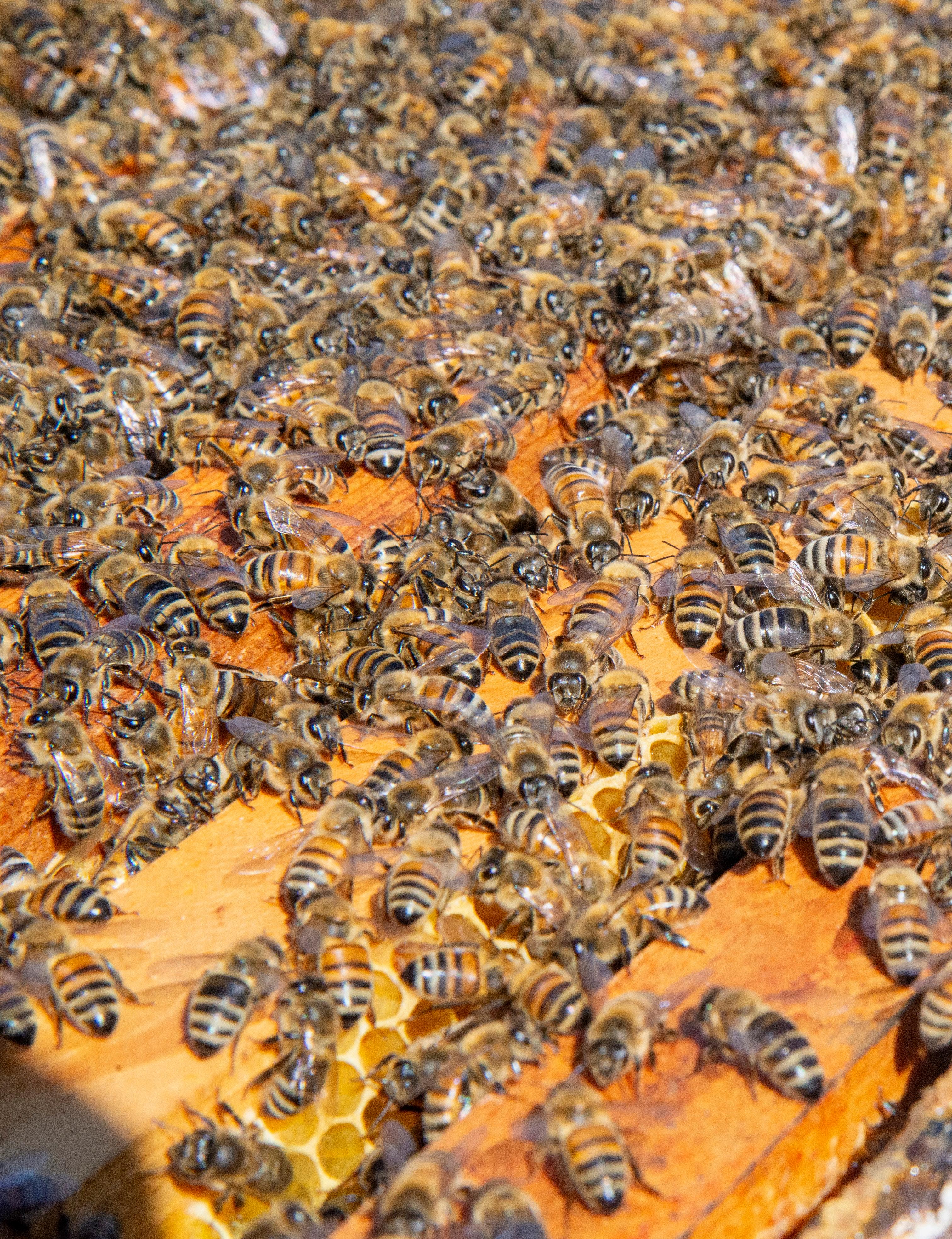
STORY BY SHAYLEE BECK MOORE & PHOTOS BY AUDRA SPEARS
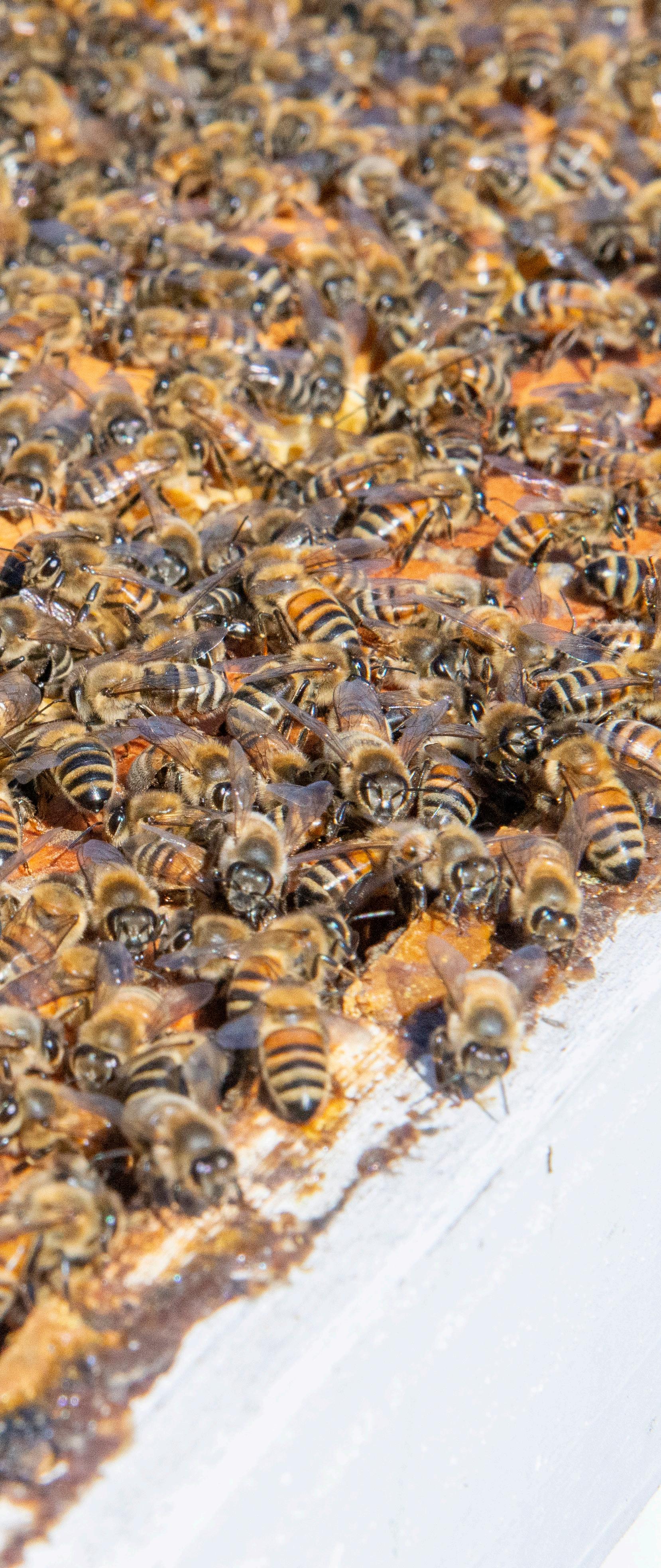
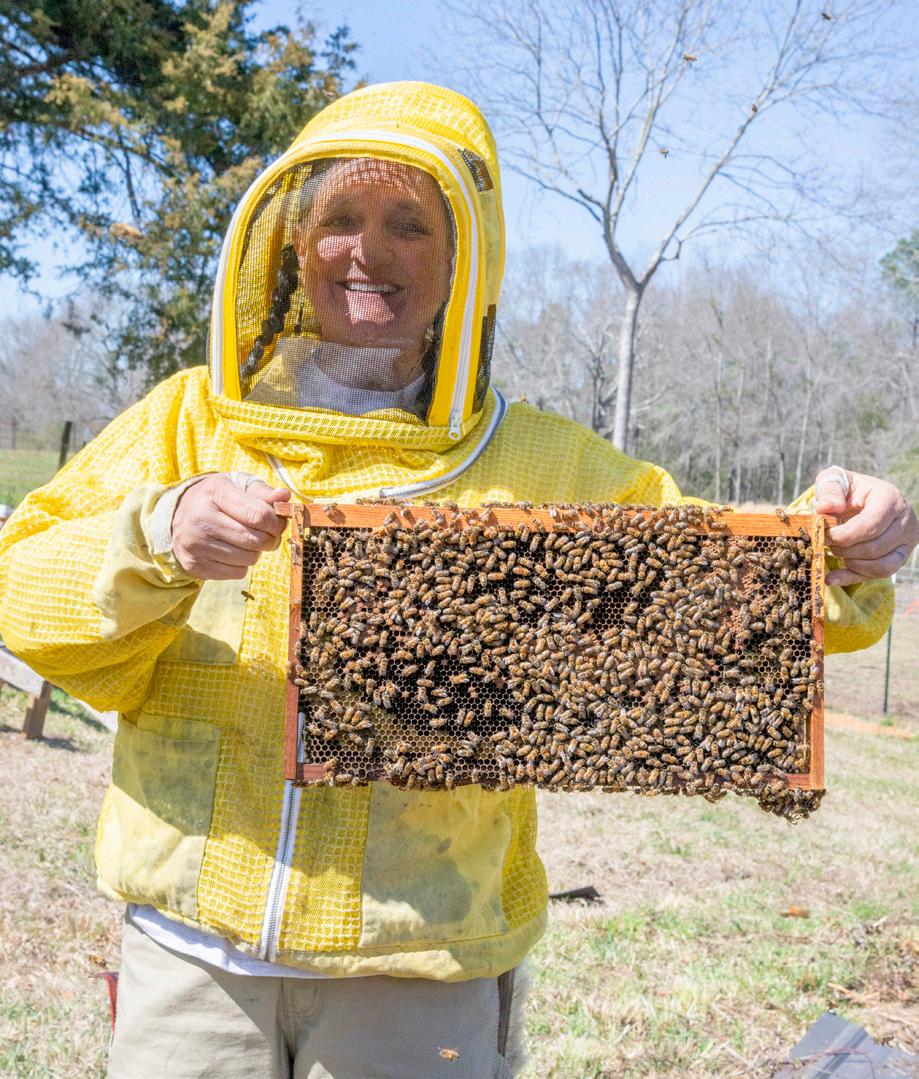
Tucked away on sprawling farmland in Eclectic, Alabama, is a one-of-a-kind venture driven by passion, education and community service. At its heart is Allyson Andrews, the spirited 60-year-old owner of Wildly Blessed, whose unique endeavors in beekeeping, raising livestock and caring for therapy alpacas are all part of her mission to spread joy throughout Alabama’s communities.
Nearly 30 years ago, Andrews and her husband, John Andrews, purchased their Eclectic farm, affectionately naming it Double AA Ranch. The farm was originally intended to serve as a way for their children to participate in agricultural competitions.
“Double AA Ranch was started because my kids showed livestock,” said Andrews. “So we had to have a ranch or farm name for them to get a premise ID to be able to show.”
Over time, the farm expanded into a fully functioning operation with cattle, sheep and even, at one point, an emu. As Andrews’ children grew up and moved away, she found herself drawn to pursuing beekeeping – a curiosity that had been with her since childhood. What began as a hobby soon evolved into a career, leading to the creation of her business, Wildly Blessed.
“My maternal grandfather was a beekeeper in Tennessee,” said Andrews. “He had bees in the ‘60s and ‘70s. It was just a complete draw to me; it was just fascinating.”
The Buzz Around Town Facing Page: Once fearful of bees, Andrews turned her curiosity into a career; Top: Andrews uses her hives as an opportunity to educate others.
As a child, Andrews suffered a severe allergic reaction after being stung by a bee, resulting in a
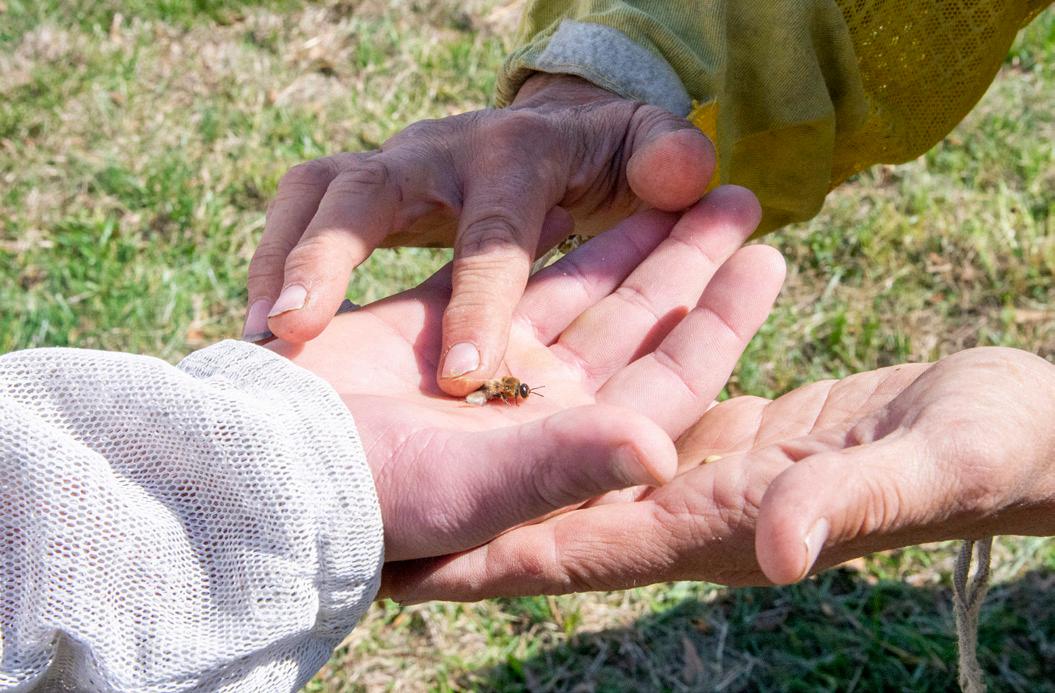
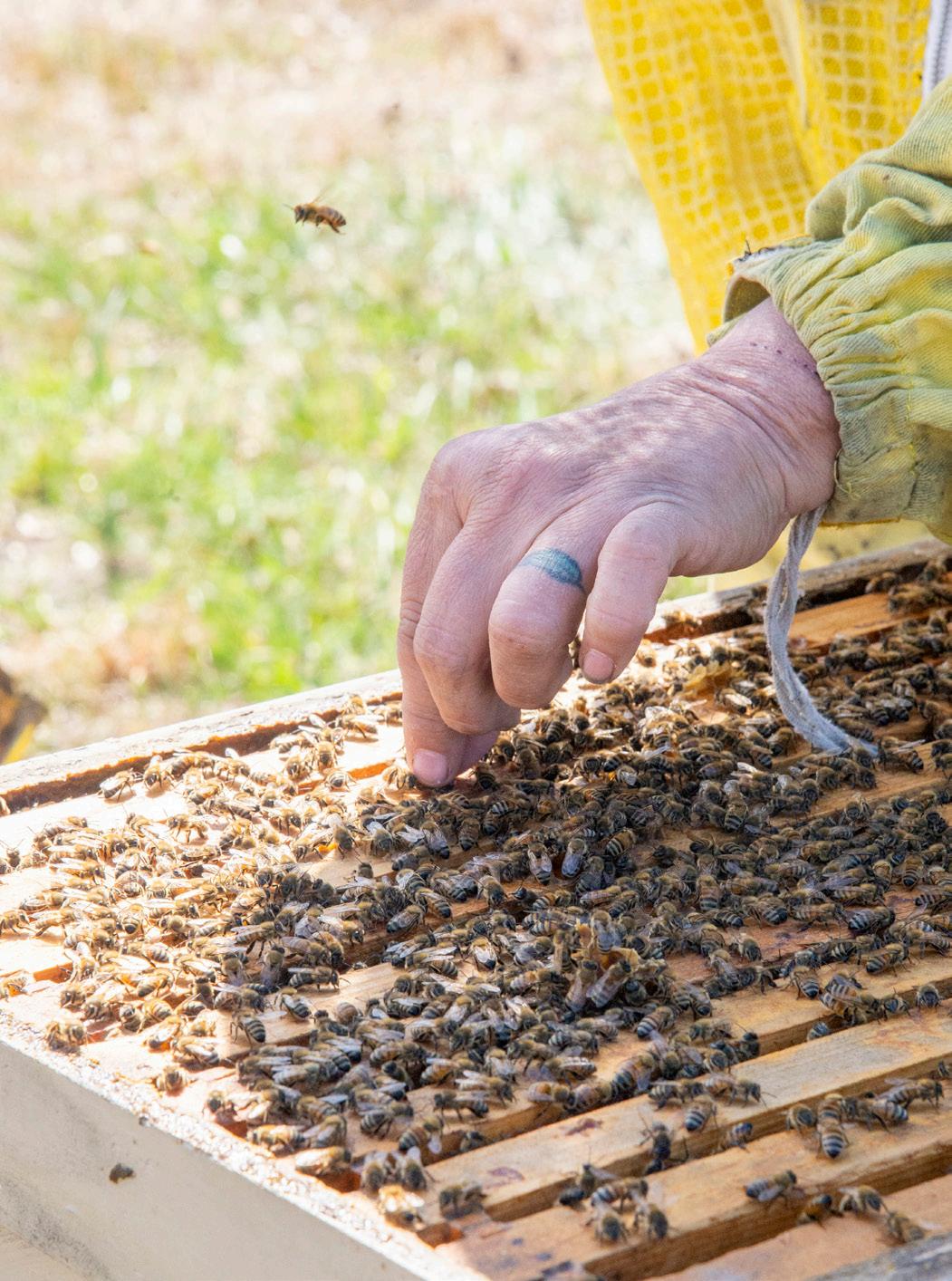
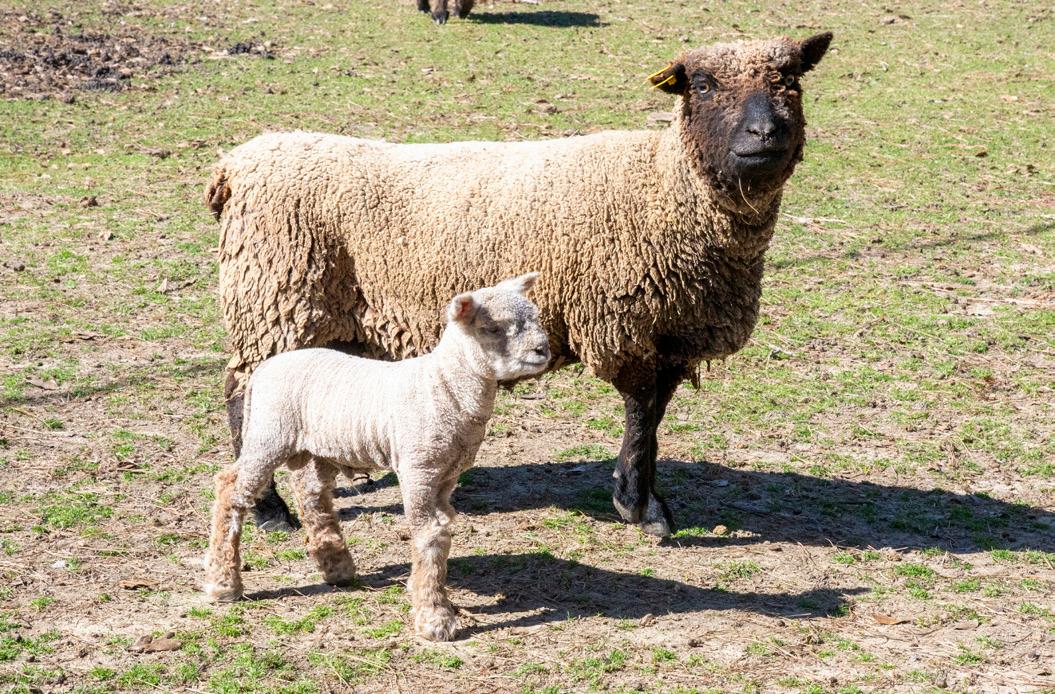
trip to the hospital. For years, she kept her distance from bees – until she and John purchased their farm, where the previous owner had thriving beehives. Curiosity eventually led her back, rekindling a connection that would shape her future.
“It was just fascinating to see them work, coming in and out of the hive,” said Andrews. “I was a little fearful, but the only lie my mom ever told was, ‘You’re not going to be able to be a beekeeper.’”
Now a proud third-generation apiarist, Andrews pursued the rigorous path to becoming Alabama’s first female Master Beekeeper. Achieving this title required years of study, hands-on experience and public service credits, ultimately leading to Andrews’ passion for teaching and deepening her commitment to community service.
“The reason why I started going to places and taking the bees is because to become a master beekeeper, you have to have public service credits,” said Andrews. “So I would take the bees in an observation hive to schools, nursing homes, churches, civic groups – wherever people wanted me to come.”
What began as a requirement soon became a passion, as she found joy in educating children and adults about honeybees. One of Andrews’ favorite annual events is traveling to the blind and hearing-impaired camp in Prattville, where the children can hold bees and feel them vibrate in their hands.
“The fascinating thing about a honey bee is they’re wonderful little creatures,” said Andrews. “I teach with every single one of our senses. I love to teach that way. I want students to see the bees; I want them to smell. When I take my observation hive, I allow the children to take a whiff of it. Most people don’t know that bees have a scent.”
While Andrews is widely known for her beekeeping, the Wildly Blessed experience would be incomplete without the presence of her famous alpacas.
This unexpected endeavor was sparked by a suggestion from her father, who encouraged Andrews to add alpacas to the farm. After his passing in 2018, Andrews had a chance encounter with alpacas at Southern Star Farm in Alexander City. She immediately felt an undeniable sense that this was the path she was meant to follow.
“In my grief, I was just so drawn to those alpacas that I purchased them,” said Andrews. “They were their therapy animals, and I got two.”
While Andrews’ alpaca herd has continued to grow over the years, one alpaca in particular has captured the hearts of the community.
Affectionately named May May, the 3-year-old female alpaca has become a symbol of Andrews’ work. Born just before a cross-country journey, May May traveled alongside Andrews for 21 days, covering 7,800 miles and 21 states from the back seat of a truck.
Teaching Through Senses Top to Bottom: Andrews uses a hands-on approach to teach; Her hives include various species of bees; Double AA Ranch also serves as a traveling petting zoo.
“We are very bonded,” said Andrews. “And she is such a draw for people. Not many people have ever seen an
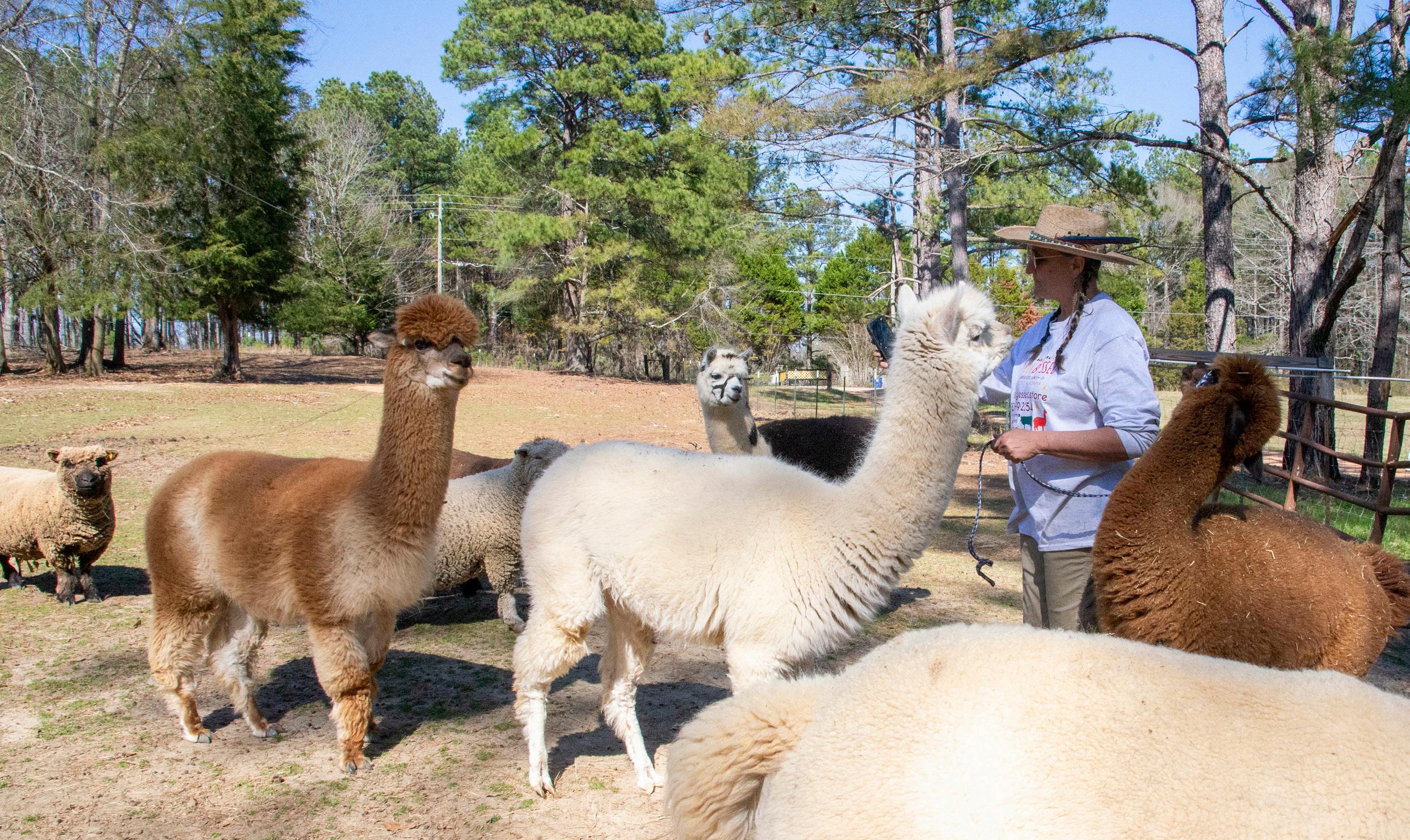
alpaca. I love sharing her with as many people as I possibly can.”
Andrews travels extensively with her mobile petting zoo, bringing her animals to events such as corporate gatherings, birthday parties, and community festivals. For the holidays, Andrews brings her farm animals to Alexander City and Eclectic to participate in live nativity scenes.
Sharing Her Passion Top: Andrews shares her alpacas with the community as a therapeutic outlet; Right: Her alpacas have become a local sensation through Wildly Blessed.
“In December, we have the greatest blessing of all to be able to be the nativity animals,” said Andrews. “I want people to be able to share the love of Jesus and joy through my animals.”
Her outreach also extends to hospitals, police stations and universities, where her animals serve as stress relievers for nurses, officers and students. Special needs camps and educational programs also benefit from her visits, providing unique opportunities for children to engage with both bees and alpacas.
“The desire that the Lord placed in my heart was to spread joy,” said Andrews. “And if I can spread joy through bees or alpacas or cows, or just sharing the love of Jesus through that, that’s my goal in life.”
Through her eclectic passions, Andrews has made a lasting impact on the community, continuing to bring joy and connection to communities across Alabama and beyond. For more information about Wildly Blessed, visit Facebook or wildlyblessed.store.
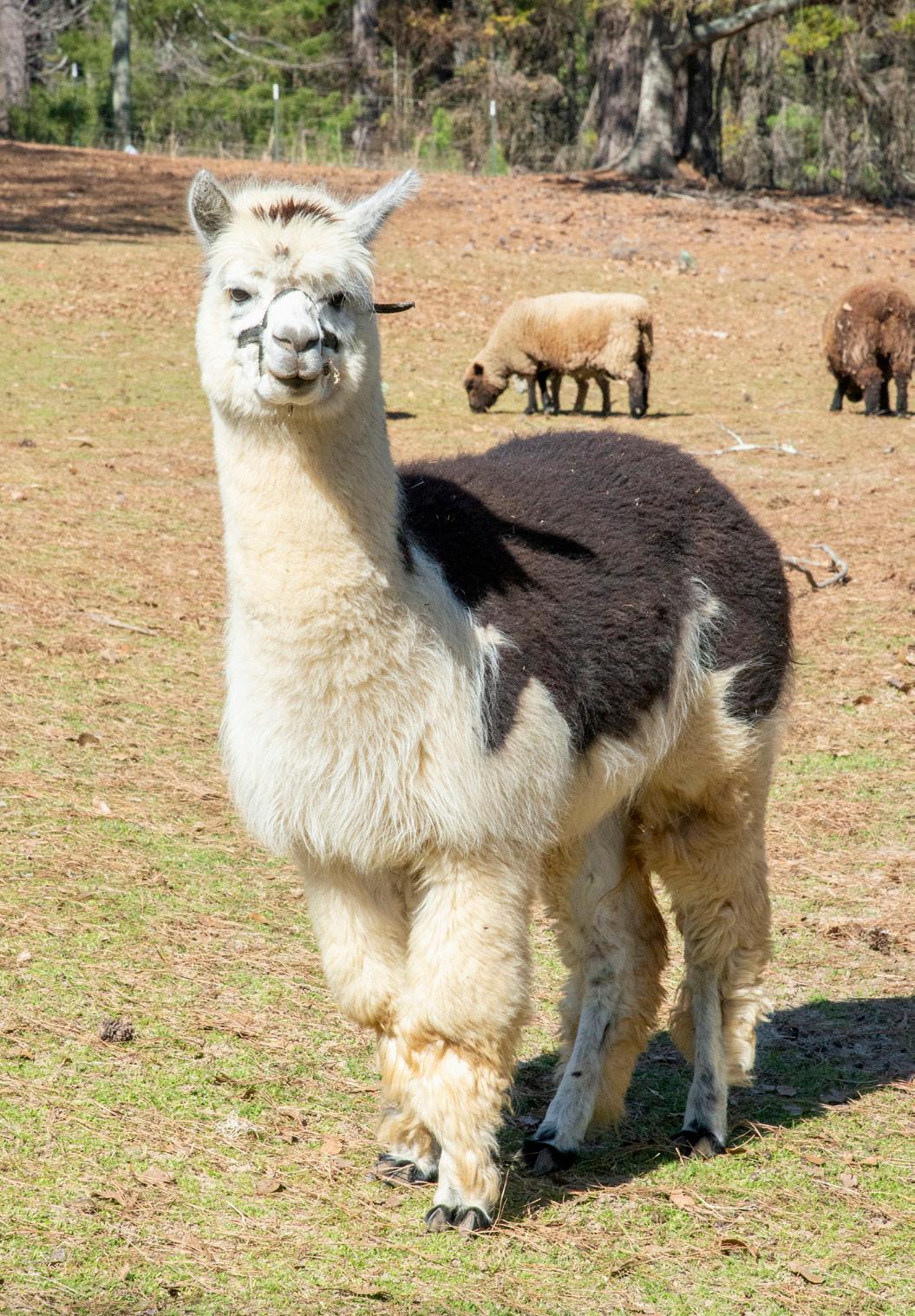
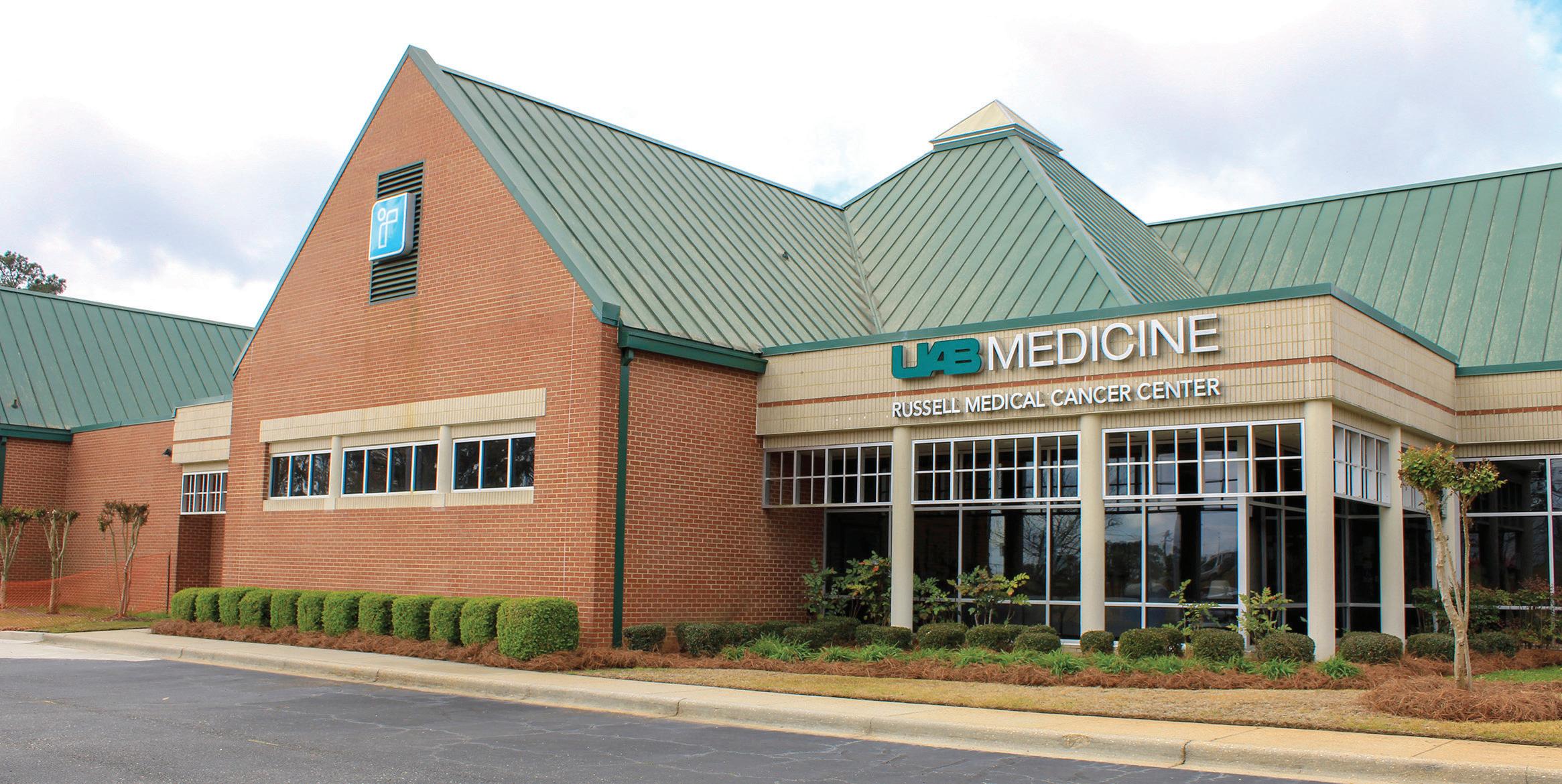
Many of you have been reading my medical news articles. Others of you probably wrap fish with them. Most of you are wondering, who is this enigmatic person, this George Miranda fellow? So this month, I thought I would pull back the curtain to tell you about me and how I came to be in Alexander City.
My friend and former boss, John Shelton, retired on Lake Martin after running the Atlanta hospital where I worked. John heard about an opening at the Russell Medical Cancer Center and tipped me off to the job. I applied and interviewed. A 45-minute phone conversation with CEO Jim Peace convinced me that I needed to come meet the team. It was love at first sight – at least for me.
I was pleasantly surprised, not just by the friendliness and charm of the town, but also by the quality and professionalism that are the defining marks of Russell Medical. Hospitals this size, in towns this size, usually cannot deliver the level of service that Russell Medical provides.

time, I have tried to absorb every bit of knowledge I can about this community as well as healthcare in a rural setting. I have come to understand that my mission is to ensure that we can provide the best possible cancer services at home, so our neighbors don’t have to leave town to get high-quality cancer care.
Now, there are some things that we just can’t do in Alexander City. We cannot administer high-dose chemotherapy and stem cell transplants. That requires around-the-clock care in an inpatient setting with a multitude of specialists that we can’t support in a town our size.
Because of our size, we can’t support a full-time chest surgeon or neurosurgeon, but because we have a unique relationship with UAB and the O’Neal Cancer Center, we can get you in with the best surgeons and oncology specialists.
We can deliver almost every type of radiation treatment, including stereotactic radiosurgery to the lung and prostate. We can’t do brain radiosurgery yet, which is why I’m working to raise the $4 million needed to replace our current radiation delivery system, as good as it is, with a more precise and versatile model.
George Miranda
I met the two medical oncologists, Dr. Alex Minter and Dr. Mary Emily Sheffield, and the special team of radiation oncologists led by Dr. Hunter Boggs, who come from the University of Alabama at Birmingham to care for our patients. I also met the most dedicated, caring, cohesive team of nurses, therapists and operational staff who keep the cancer center at the top of its game.
I’ve been at Russell Medical for four years, and in that
Russell Medical was one of the first rural hospitals in the country to have its own positron emission tomography scanner. In fact, that’s one of the things that caught my eye when I was Google-spying on the hospital prior to my interview. And the darn thing still works great, 25 years later.
Unfortunately, the standard of care in cancer has progressed so that a stand-alone PET is no longer sufficient. PET/CT scans are now required in cancer care because the fused technology allows for much more accurate pinpointing of tumors. Currently, we have to refer our patients down the road to Opelika or up the road to Sylacauga for their PET/CT scans,
or sometimes even further to Grandview, UAB, or Montgomery. Even then, the wait can be as long as four or five weeks because there aren’t enough machines to meet the demand. That’s why I’m also working to raise $1.6 million to replace our aging PET scanner with a new PET/CT.
Why? Because my mission is to provide the best possible cancer care here in Alexander City, so our neighbors don’t have to travel out of town.
So let me end with a big win. This month, we unveil our brand-new magnetic resonance imaging machine. Why did we replace our MRI? Because we want you to be able to get the best possible care here, in your community. This new machine does a few things our previous MRI couldn’t do; for instance, MRI-guided breast biopsies; multiparametric MR imaging of the prostate, which allows for much more accurate biopsies, as well as giving peace of mind to men who are practicing active surveillance; and high-resolution pelvic imaging that provides the necessary specificity for staging rectal cancers without resorting to using the uncomfortable rectal probe.
The MRI provides other important services: diagnosis and management of orthopedic conditions; brain scanning for radiation treatment planning and diagnosing Alzheimer’s disease; and other techniques.
We’ll never be able to offer 100 percent of cancer care services in Alexander City – not unless the city suddenly


grows to a population of 100,000 or more. And I think most of us don’t want that!
But we can provide all the conventional services, and we can provide them as expertly as any other cancer center, with a lot more tender loving care than anywhere else. And come hell or high water, before I retire, we’re going to have that PET/CT.
I would be remiss if I did not remind you that March is Colorectal Cancer Awareness Month. If you are 45 or older and you haven’t had your first colonoscopy yet, drop what you’re doing and pick up your phone right now to call the office of the brilliant gastroenterologist, Dr. Derek Holcombe, at 256-329-2829 and make your appointment. I know, a colonoscopy ranks about the same level as a root canal, in terms of enthusiasm for the procedure. But I’m telling you, it’s not that bad. I have to do one every five years because of my risk profile. And if I can handle it – the coward that I am – you can handle it as well.
Talk to your doctor about colorectal screening, as well as other screening tests you should have. If you don’t have a primary care physician, give us a call and we’ll connect you with one.
~ George Miranda is the director of the UAB Medicine - Russell Medical Cancer Center.






With a couple of months under our belts in 2025, it seems Alabama residents have a more positive outlook for what this year will offer. Economic indicators in our state, such as stable inflation and low unemployment rates, offer reasons for optimism. Regardless, the cost of housing and other daily necessities remains top of mind for most and will require keen financial attention.
Now is an ideal time to set yourself up for a successful year by making the most of your financial situation. Take advantage of these five tips, whether you’re seeking to accelerate your personal or business finances this year.
Establish an annual financial plan around your goals, what you need to achieve them, and what strategy you will utilize for success.
One strategy you can use is the 50-30-20 rule: 50 percent of your income is used for necessities like food and your mortgage, 30 percent is used for wants, including entertainment and travel, and 20 percent is used for savings. Tailor these percentages based on your individual goals to make the budgeting work for you.
Emergencies take many forms, but if you live in an area where natural disasters such as hurricanes or tornadoes are common, consider
including a disaster preparedness category in your financial plan.
Adding a small amount, such as $20 each month, can go a long way when unexpected circumstances occur. Ideally, you should save six months’ worth of living expenses in this fund and have it easily accessible.

Lori Harrell
If debt elimination is a key part of your financial plan, you are not alone. According to Experian, the average credit card balance for Alabama residents is $5,600.
Start by organizing your debts by interest rate and focus on paying off the one with the highest interest rate first. For credit card debt, consider consolidating higher interest rate cards by taking advantage of balance transfers with no-to-low interest rate offers for an introductory period. These tactics will lower the amount you’re paying in interest over time.
Schedule and conduct financial checkups
Once your financial plan is complete, it’s important to revisit this plan periodically to monitor your overall financial situation.
I recommend scheduling periodic checkups, similar to how you would
schedule a doctor’s appointment. During these checkups, you should reevaluate your short- and long-term goals, expenses and total income. If any of these factors change, you will likely need to adjust your overall plan.
I also always recommend my clients utilize the free yearly credit reports provided by the three credit bureaus –Equifax, Experian and TransUnion – to gain a holistic view of your finances and debt progress. Be on the lookout for fraud
In 2024, J.D. Power reported that three in 10 bank customers experienced fraudulent activity on their accounts in the past year. Though preventing fraud from happening entirely is impossible, you can identify and stop fraud from wreaking havoc on your finances.
Scams have expanded to target all demographics through check fraud, mobile phishing scams and more. I’ve even heard stories about fraudsters creating a phone number similar to that of a bank in order to impersonate it and ask for confidential information.
This increase in sophisticated fraud is why I recommend that customers stay proactive and
review monthly statements and other internal controls to detect discrepancies. I always encourage individuals to visit their closest branch if they detect any suspicious activity so we can resolve it swiftly and securely.
Whether you’ve managed your finances for decades or are new to the process, the beginning of a new year is the perfect time to set yourself up for success. Visit one of our branches to get started and create a plan for 2025.
~ Lori Harrell is the retail market manager at Valley Bank overseeing the Mill Square branch in Alexander City and the Dadeville branch. She has been in the banking industry for 35 years.
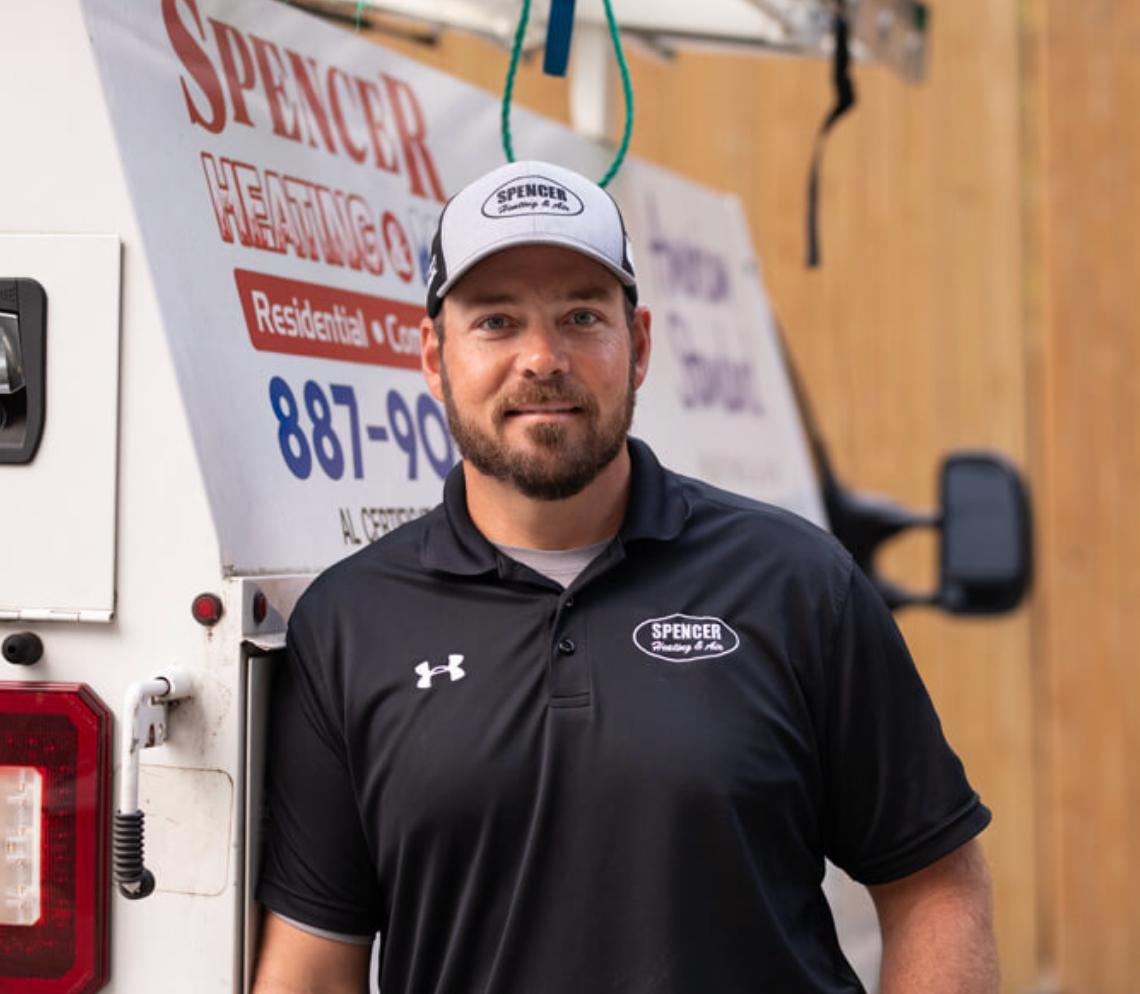



*This article is for informational purposes only. Any views, thoughts and opinions expressed herein are solely that of the writer and do not necessarily reflect the views and opinions of Valley National Bank.







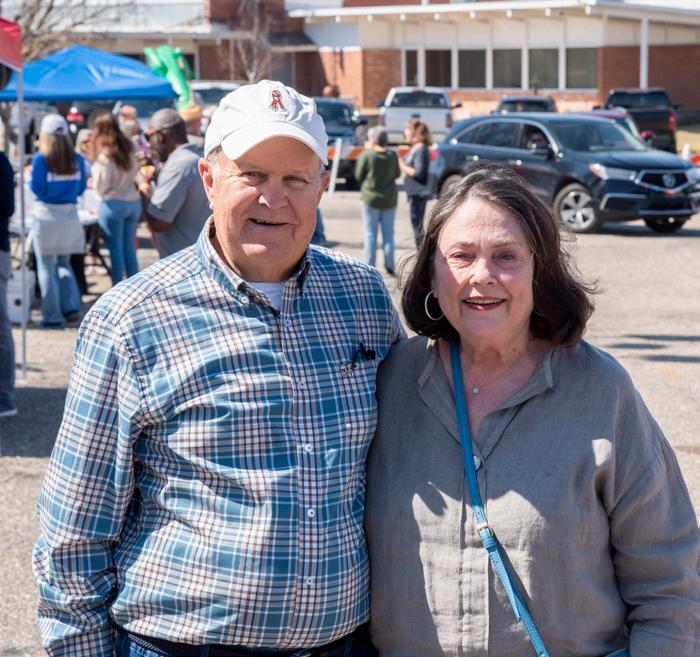
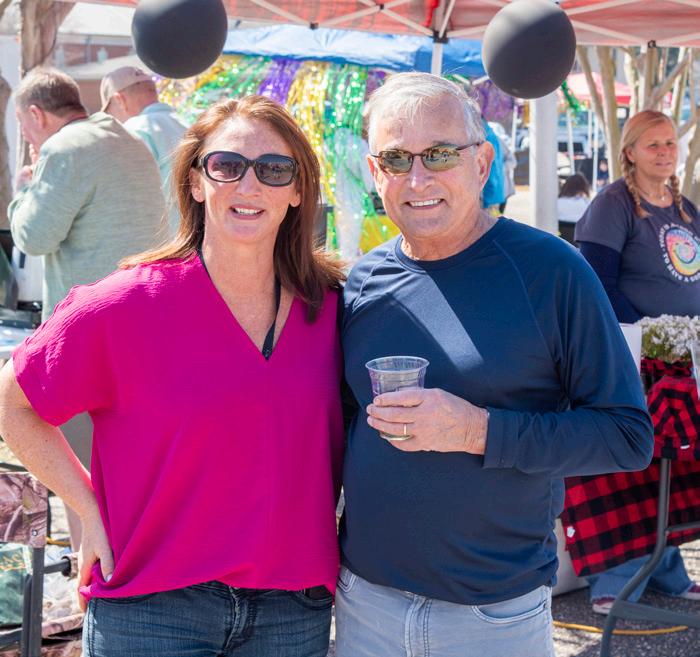
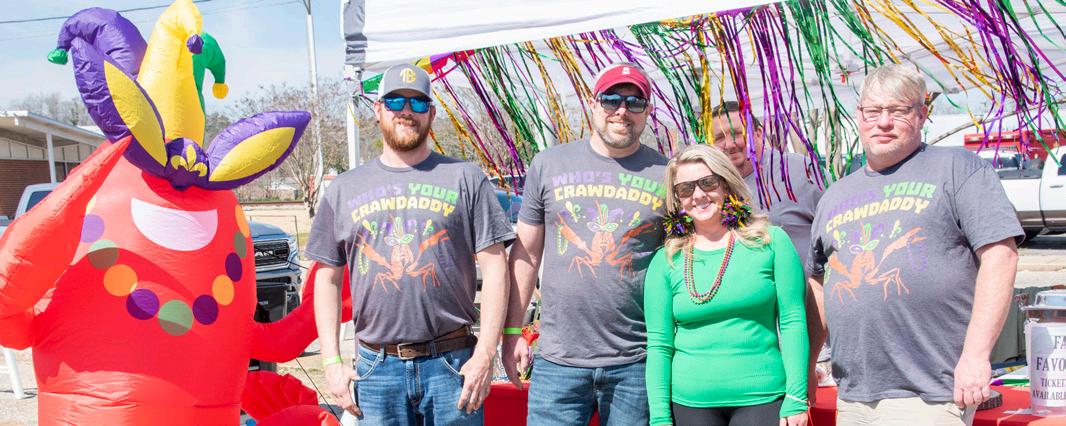
Saturday, March 1, 2025
Downtown Alexander City
1. Dick and Mary Brantley Chambliss
2. Michelle West and Fred George 3. Lydia Ballard and Jayden Beck
8. Grady Walker
9. Jared, Janie and Rick Payne and Amanda and Ed Fieder
10. Chase and Jenny Rich and Mark Worthy
11. Tyler Cobb and Ace
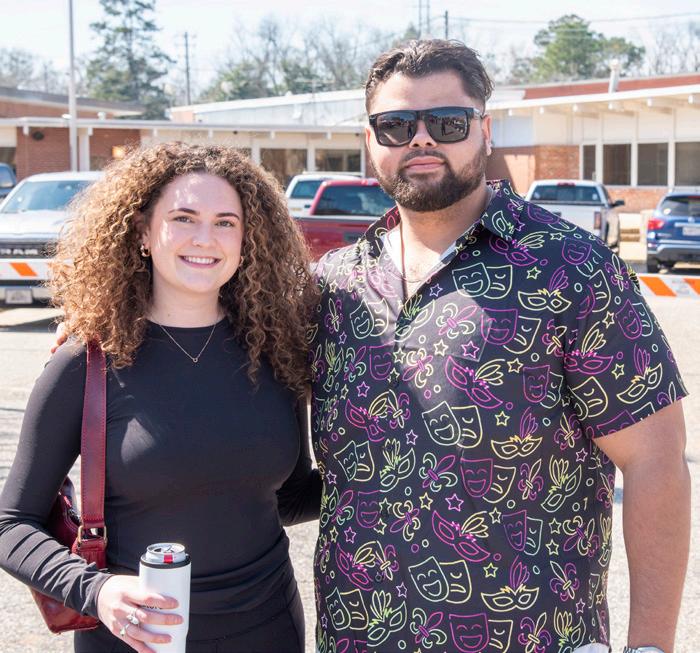

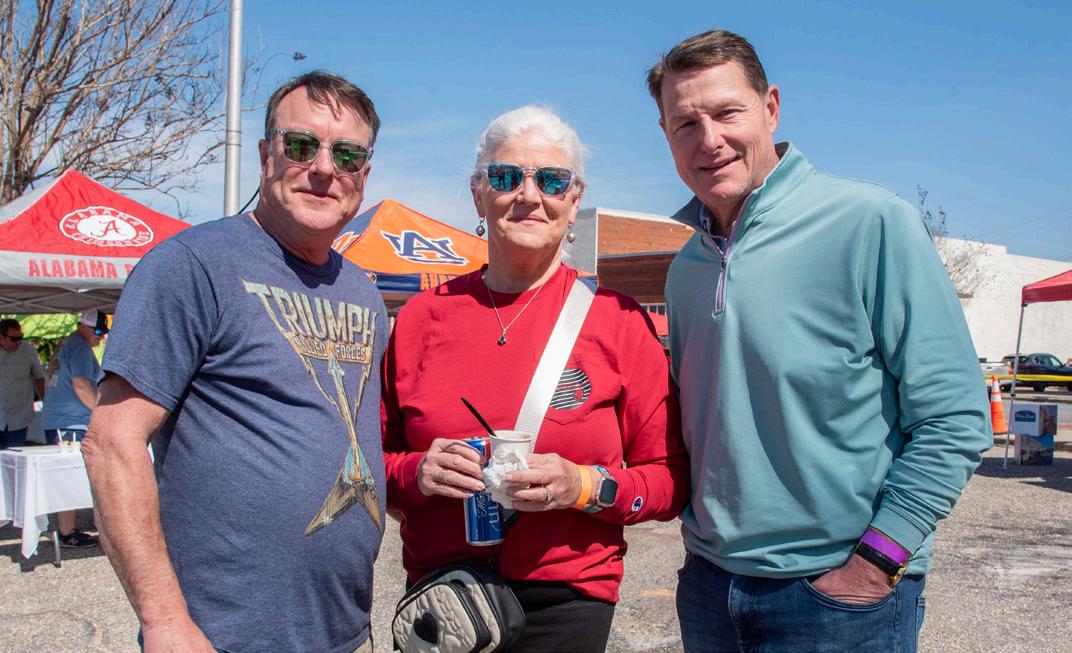

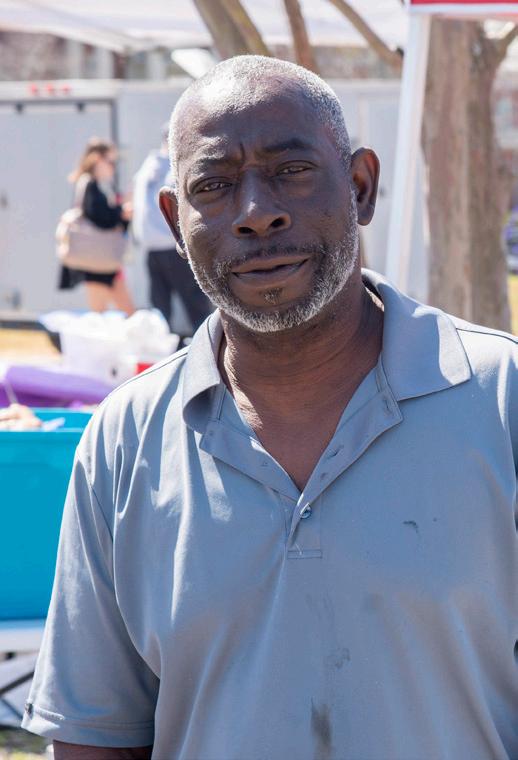
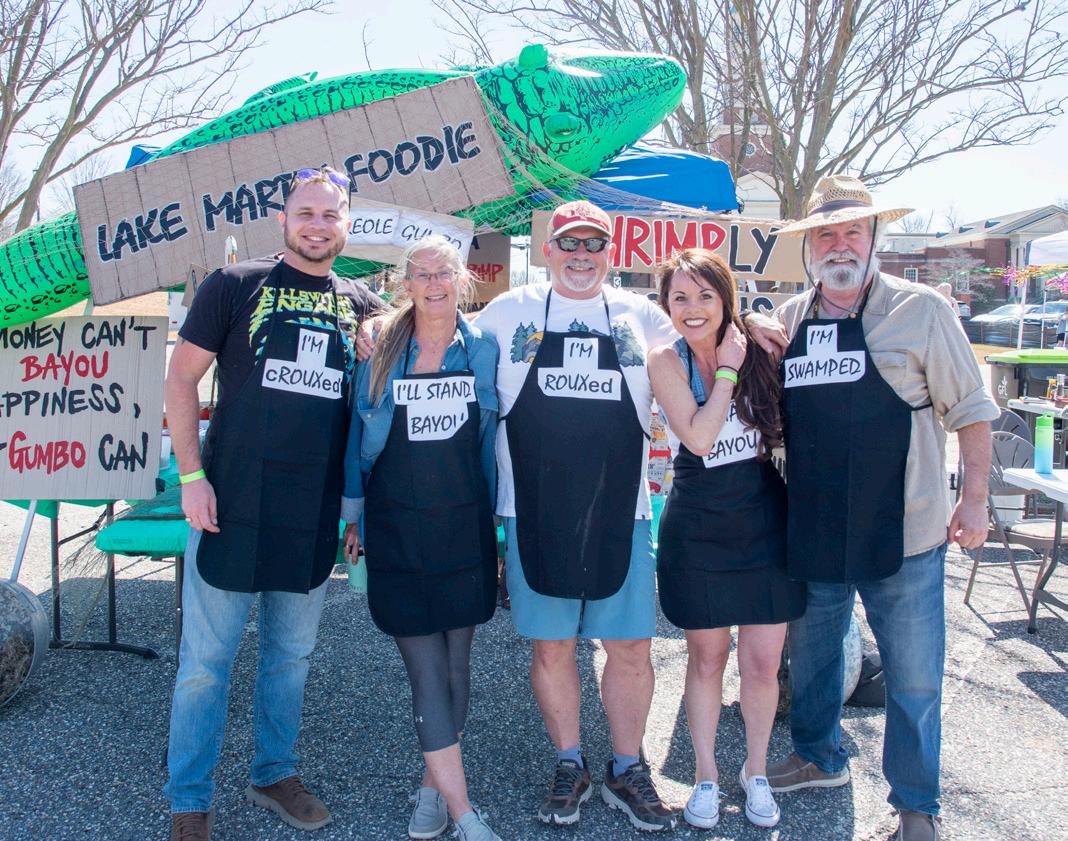

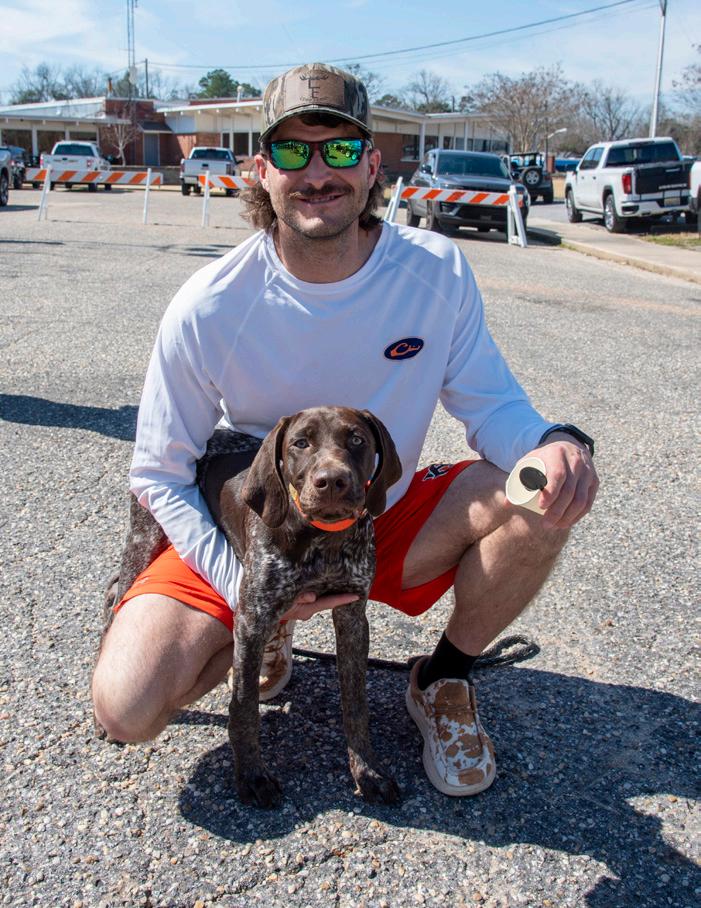

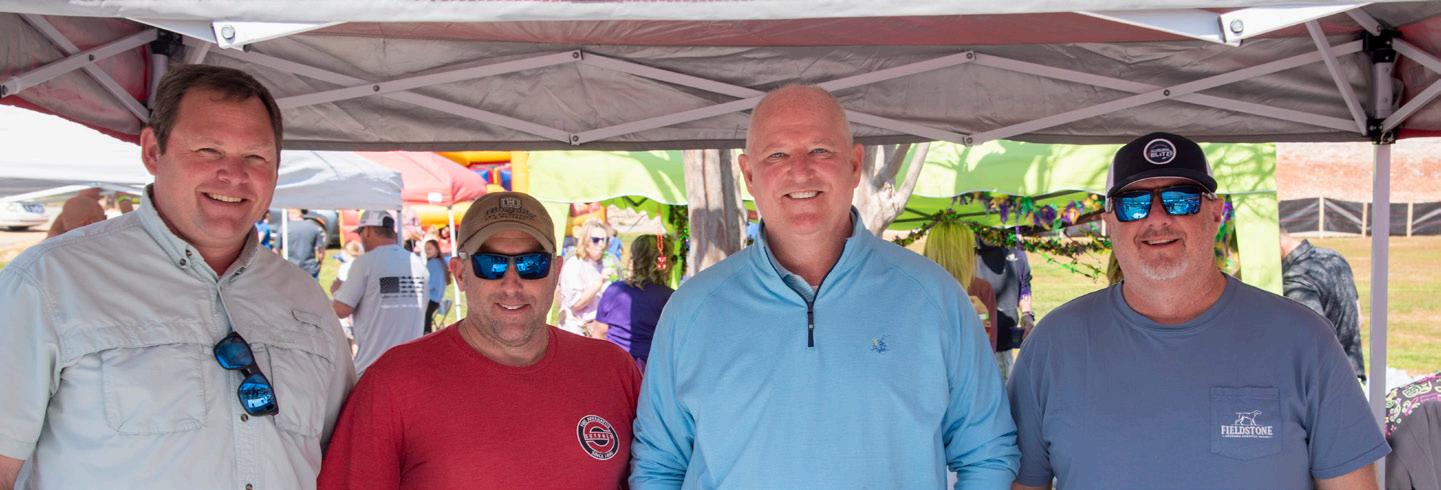
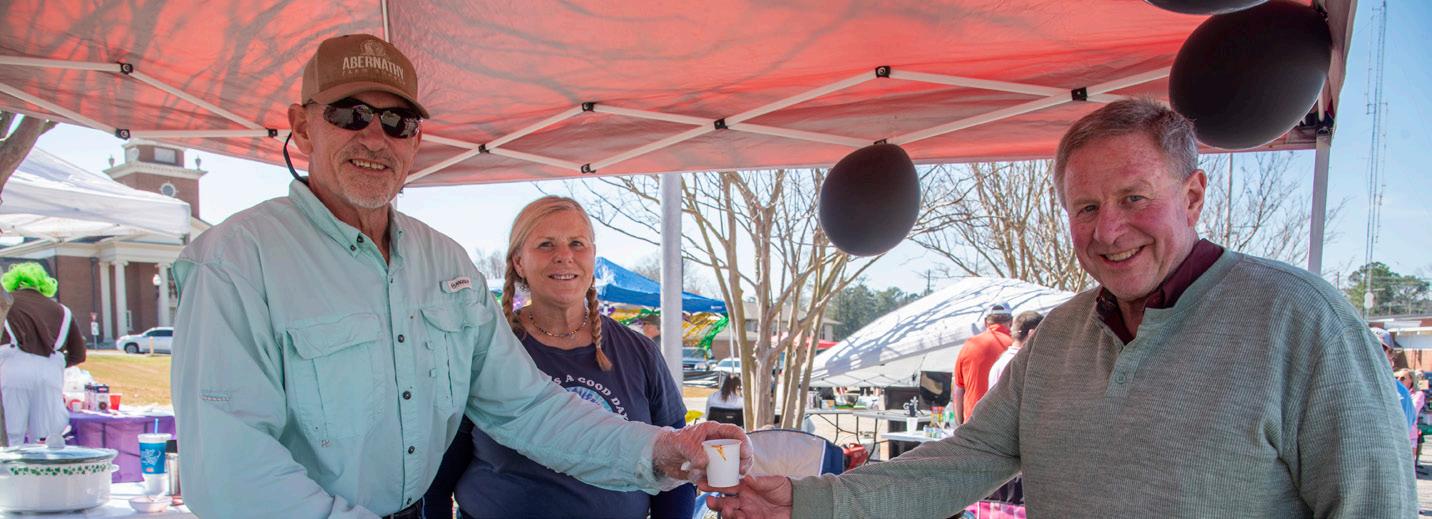
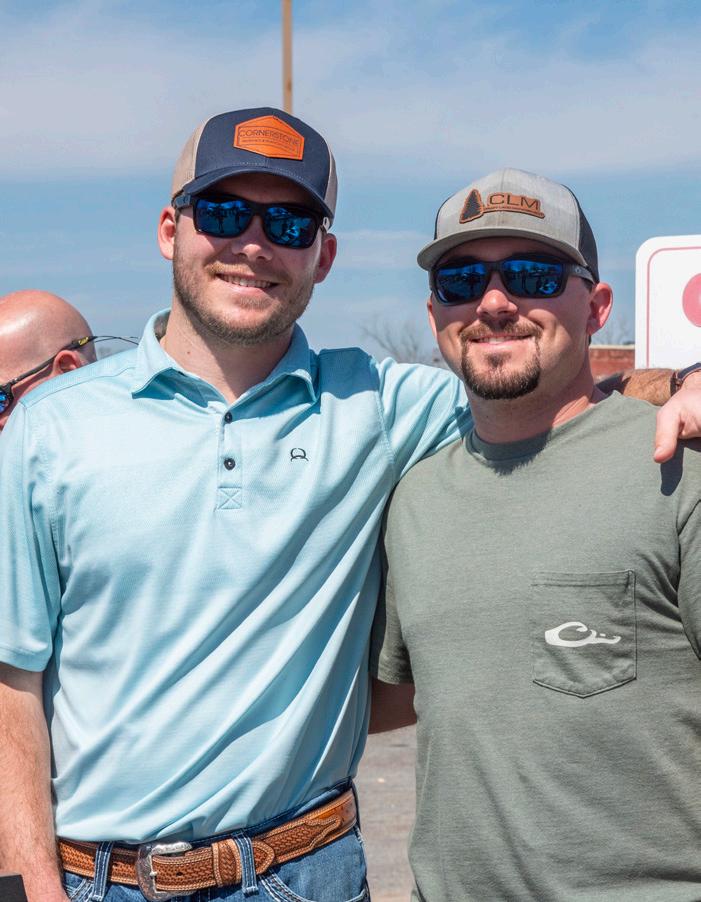
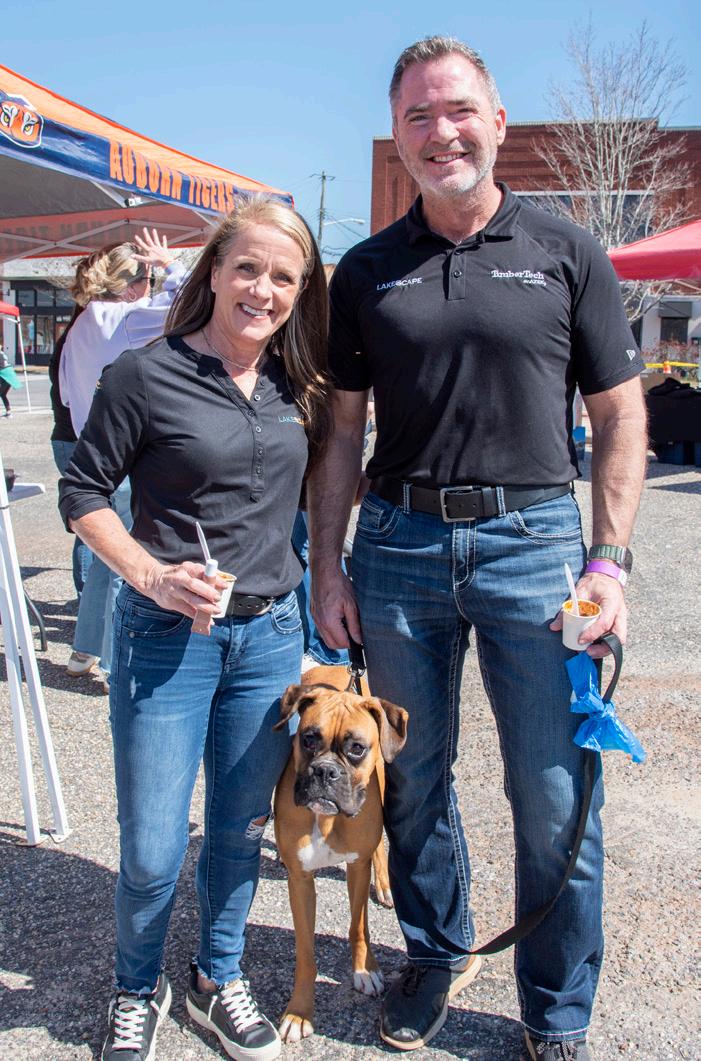
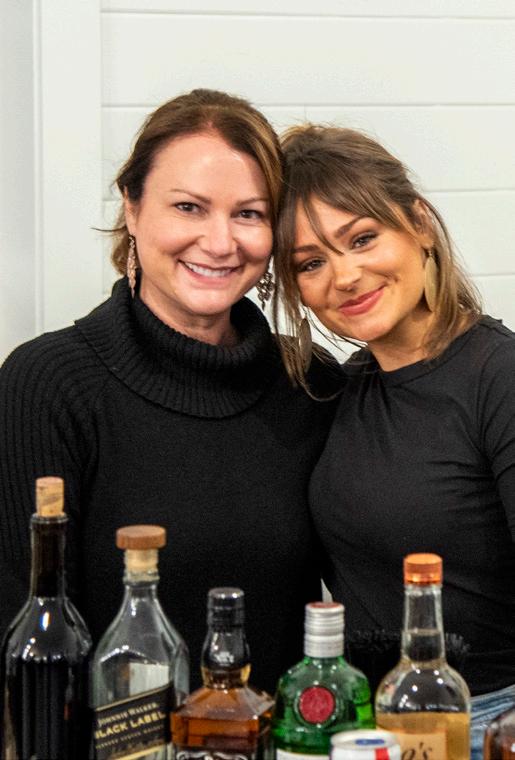
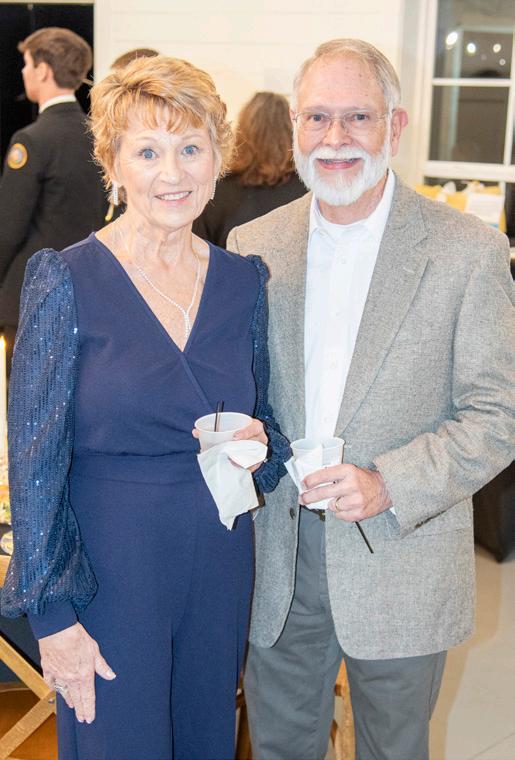
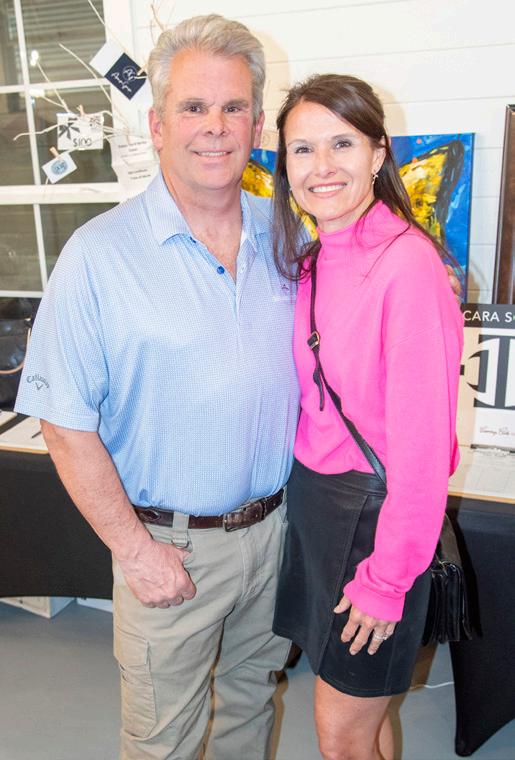

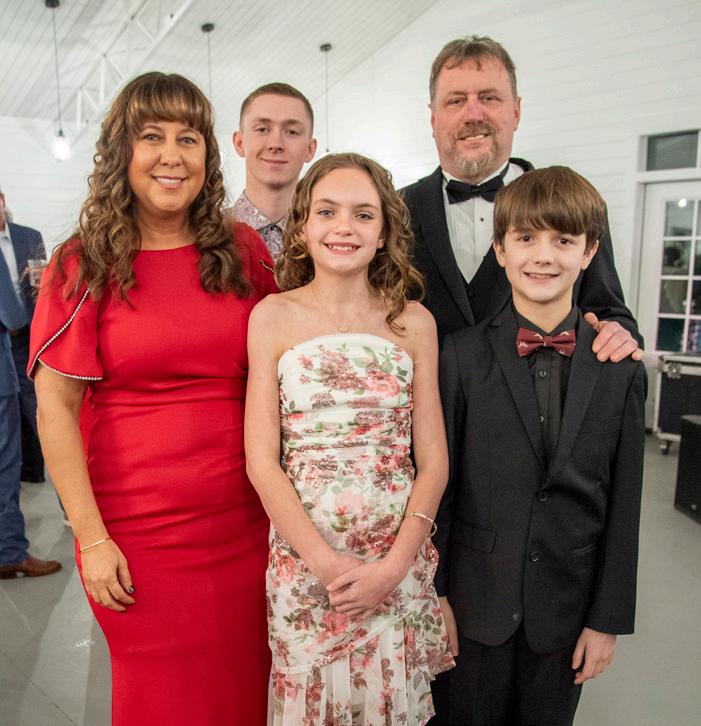
Friday, February 14, 2025
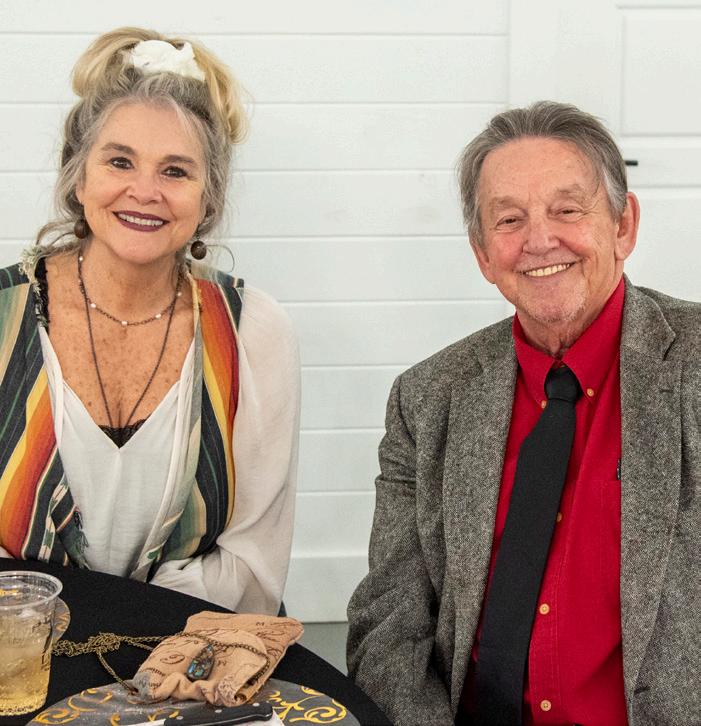
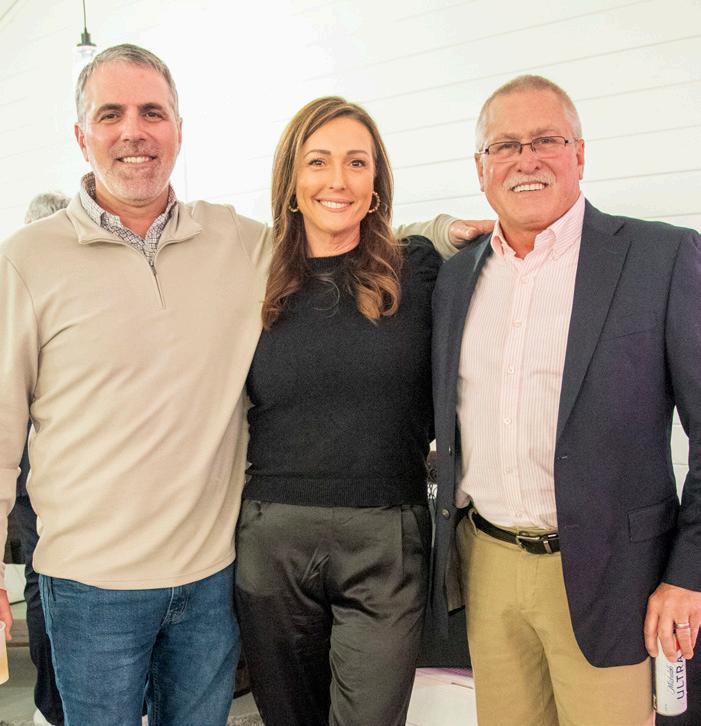
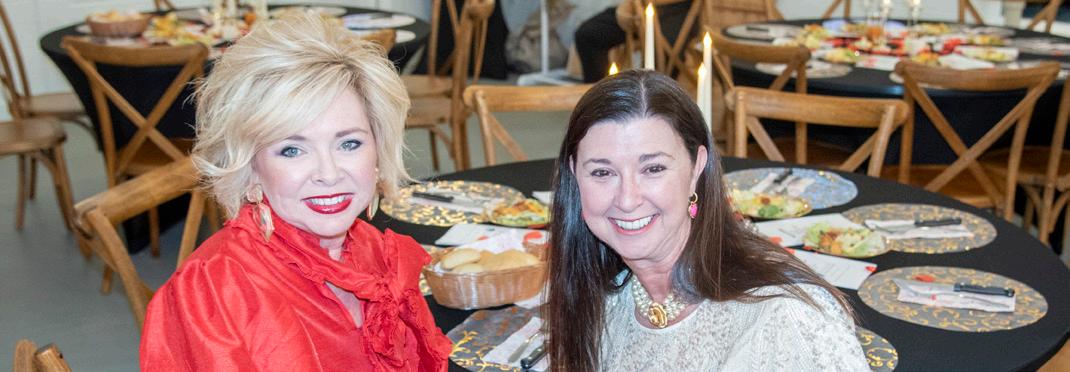


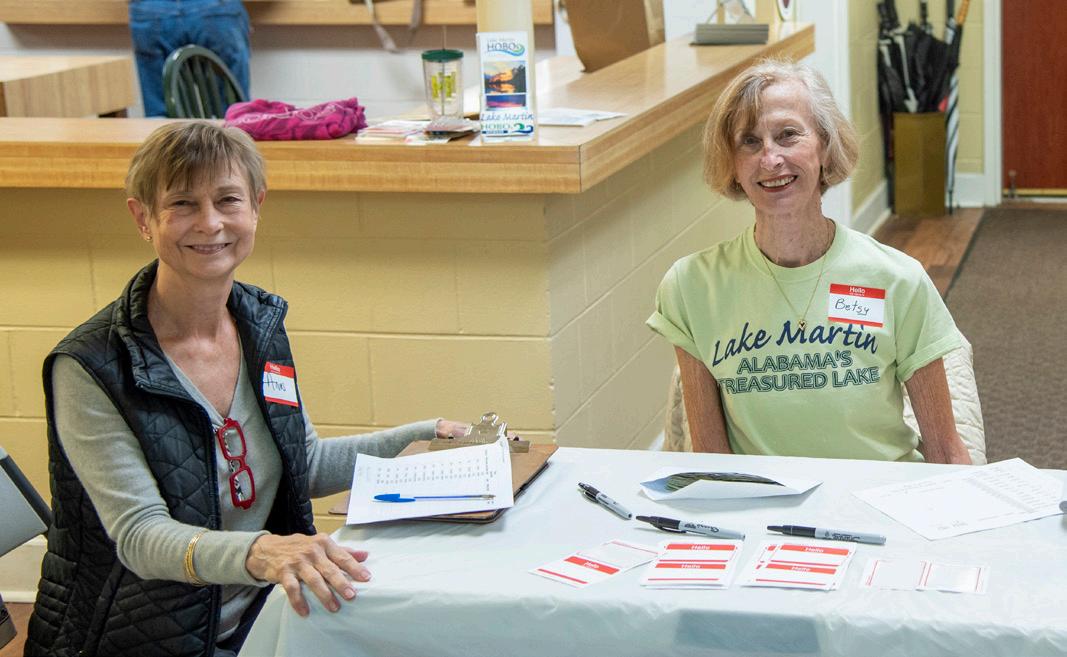


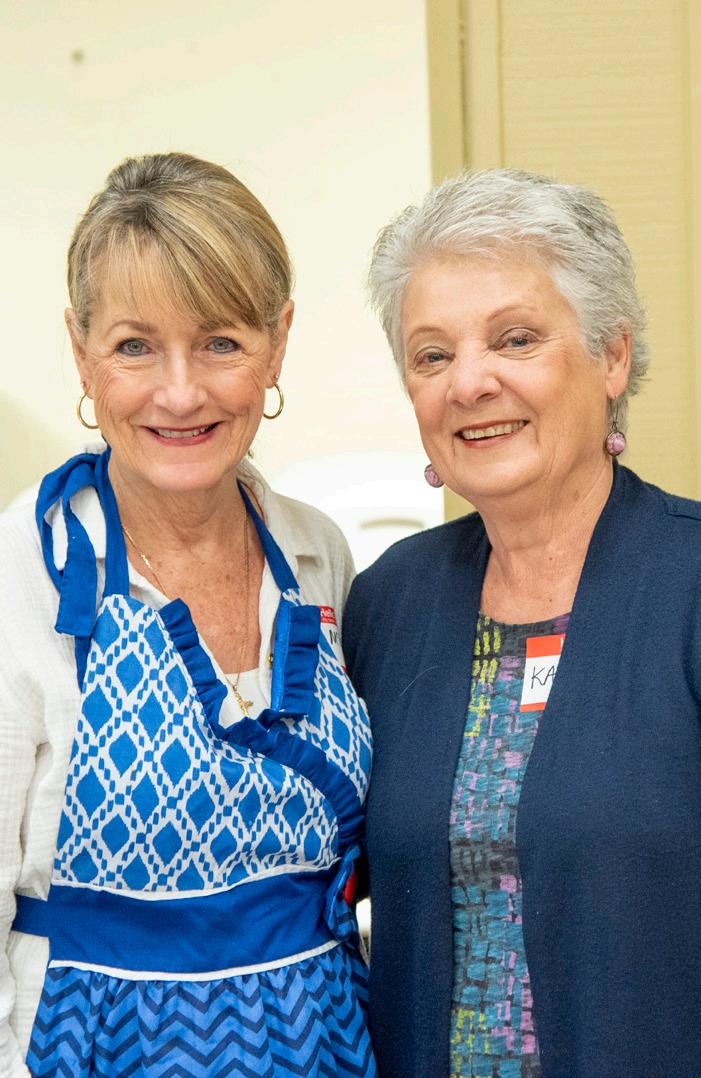
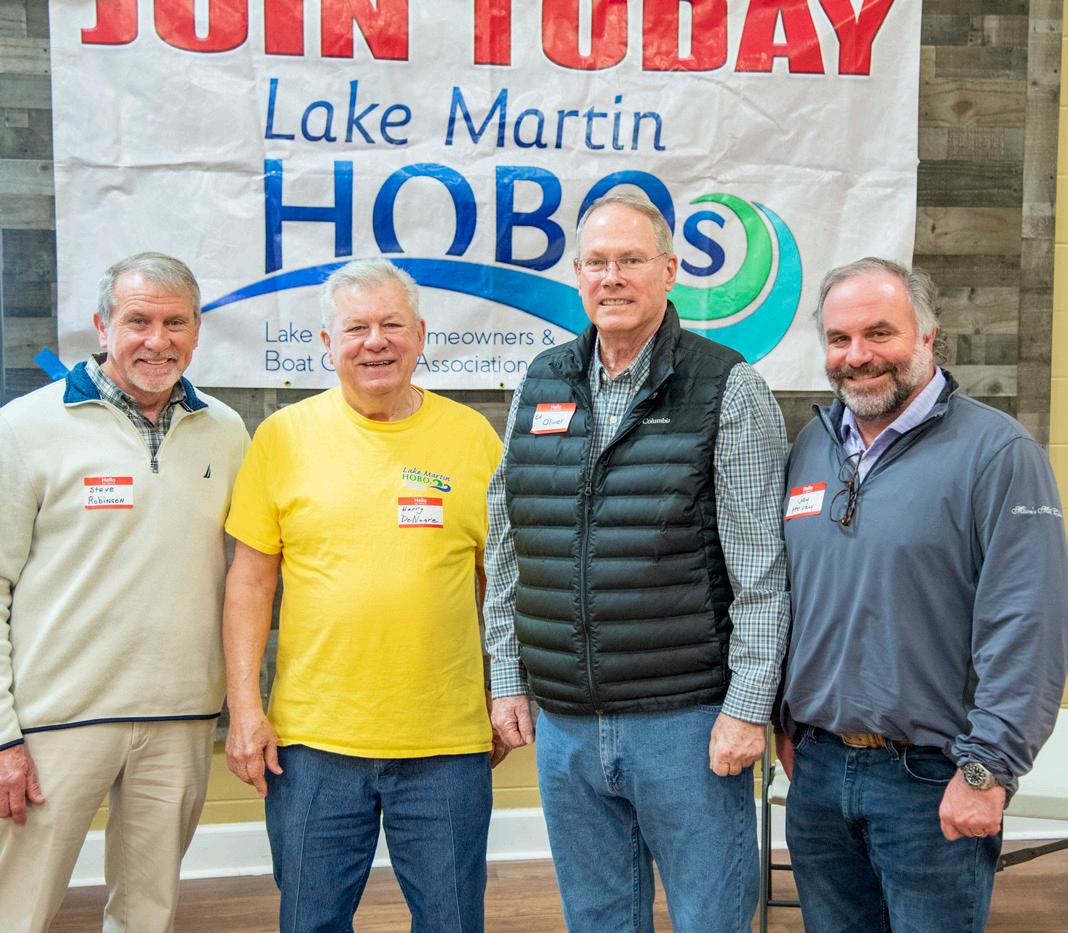
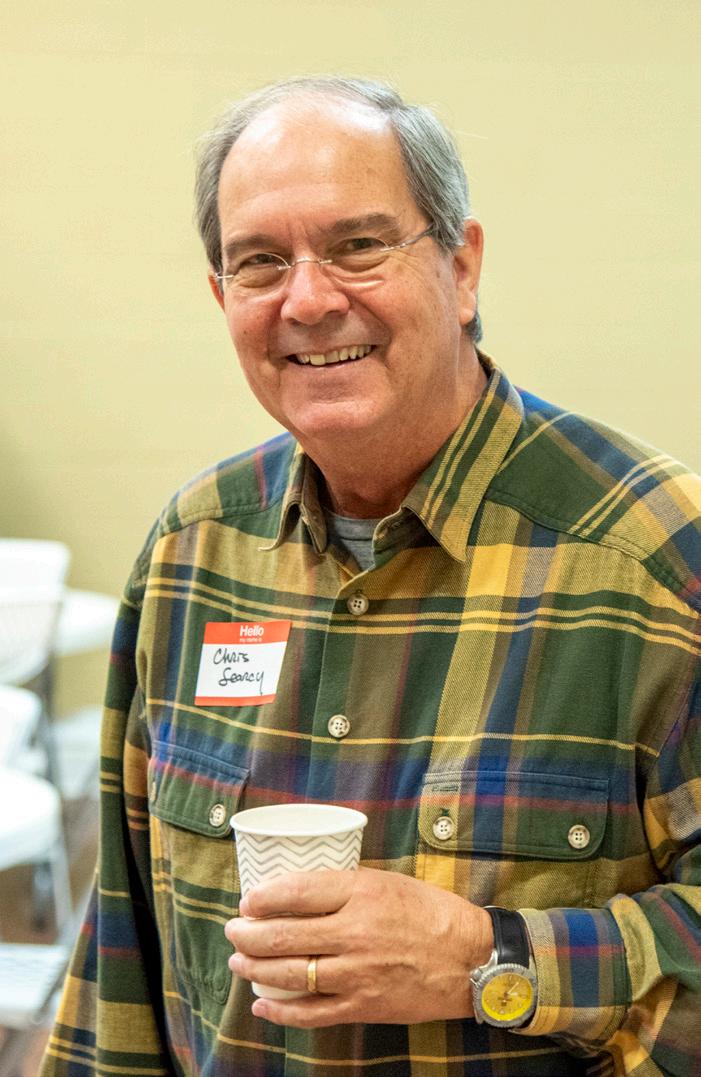
Saturday, March 1, 2025
First Baptist Church, Dadeville

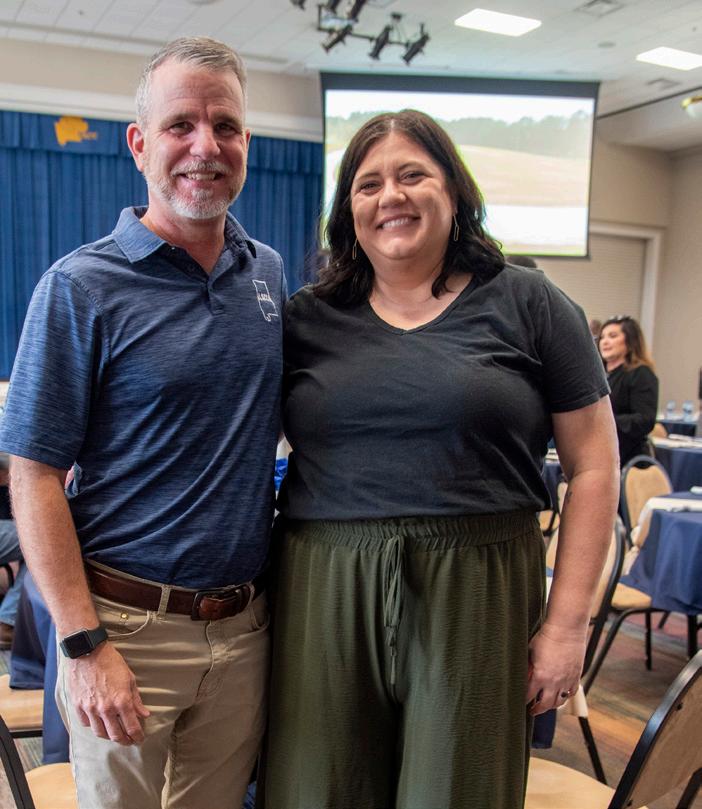
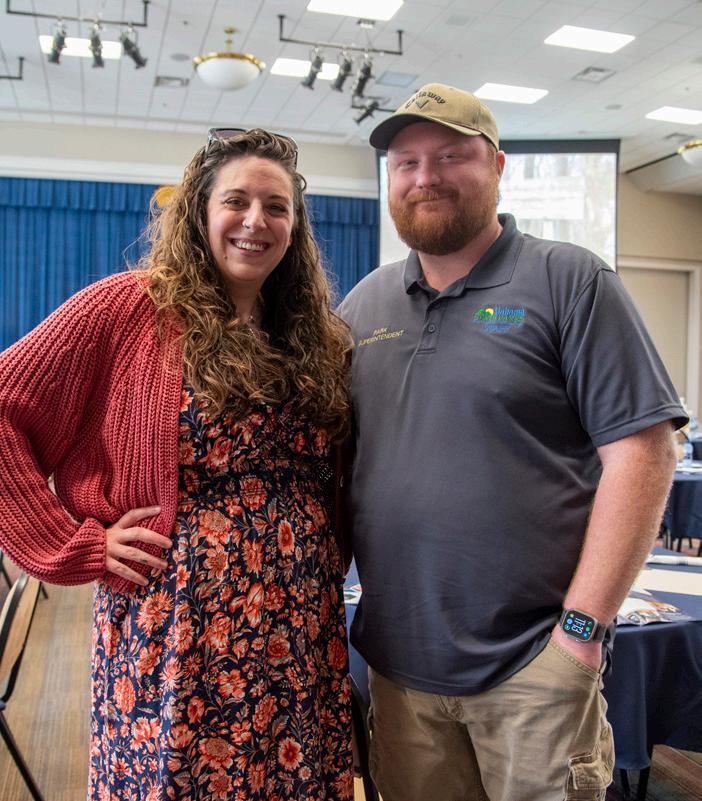
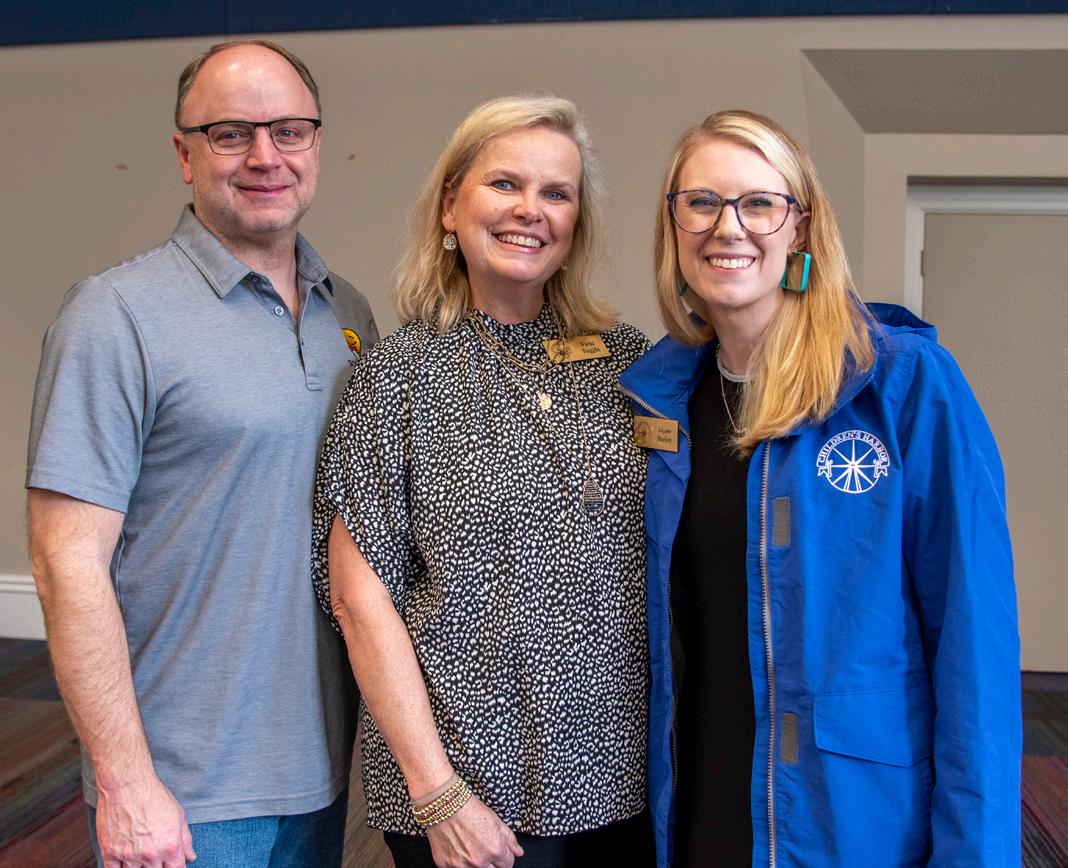
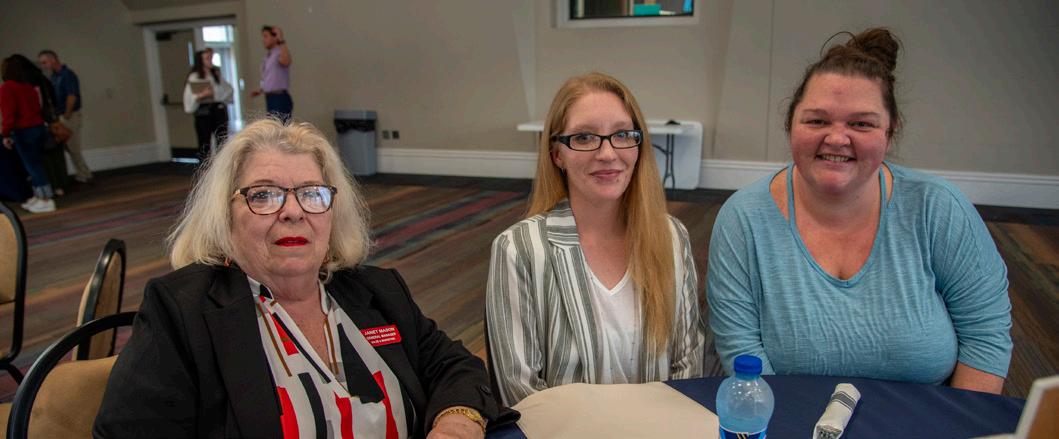

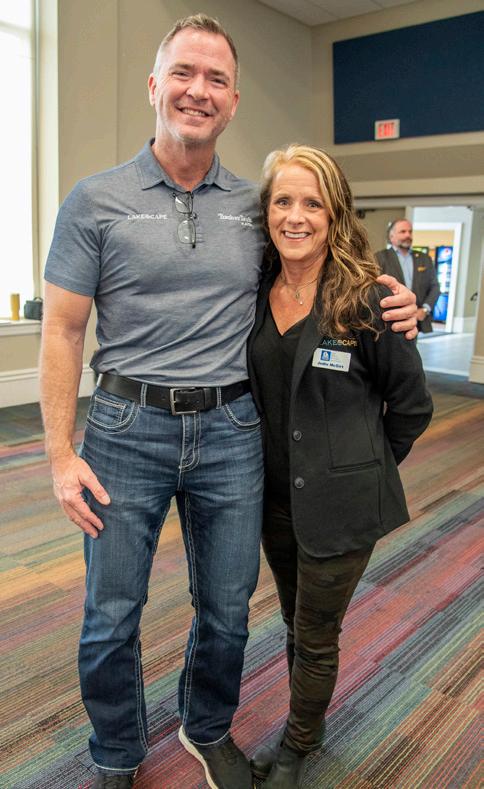
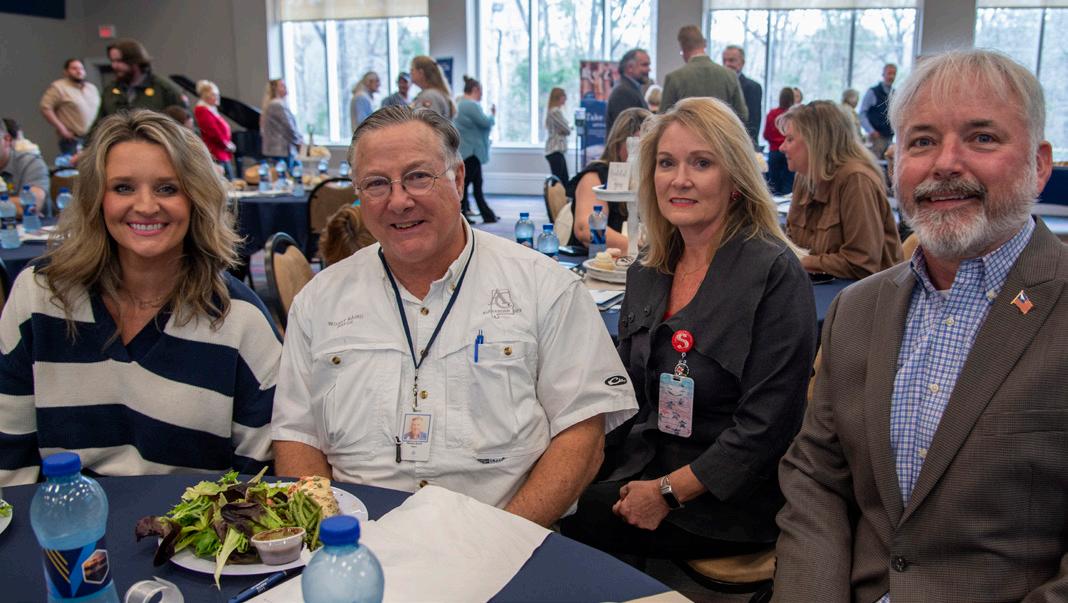
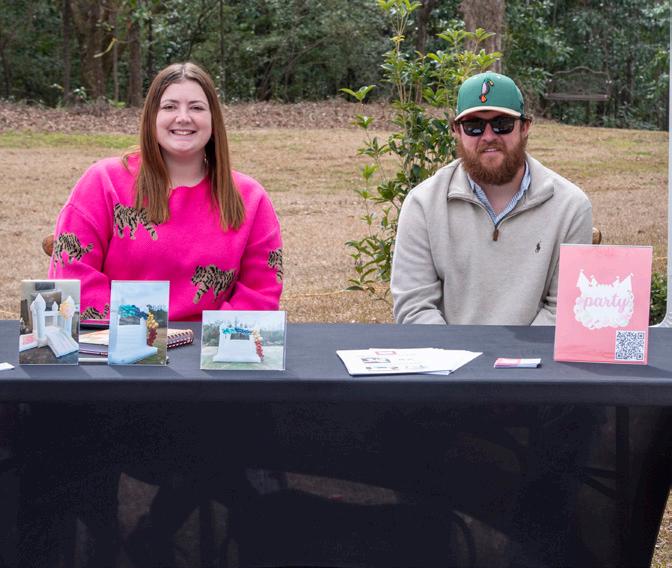
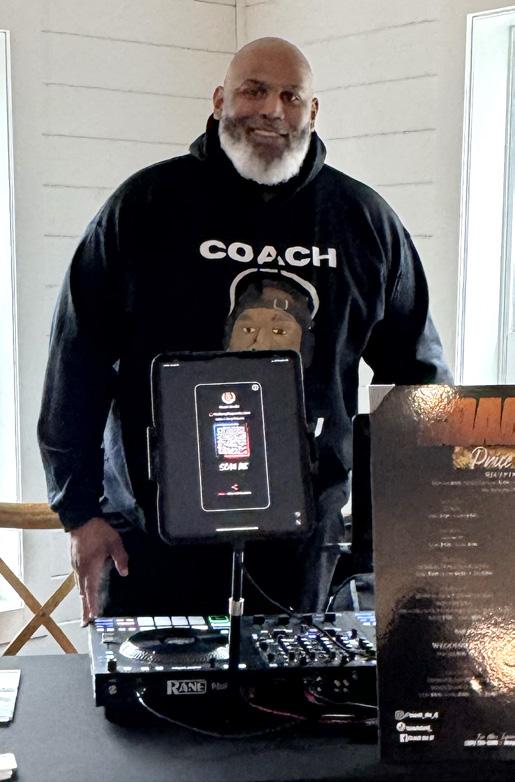

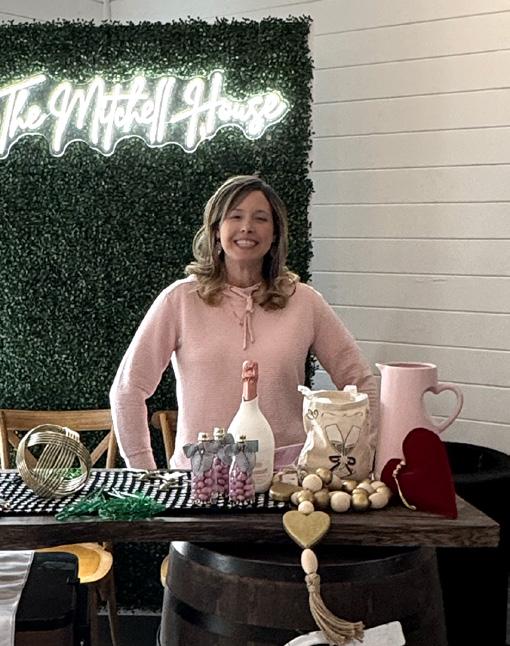
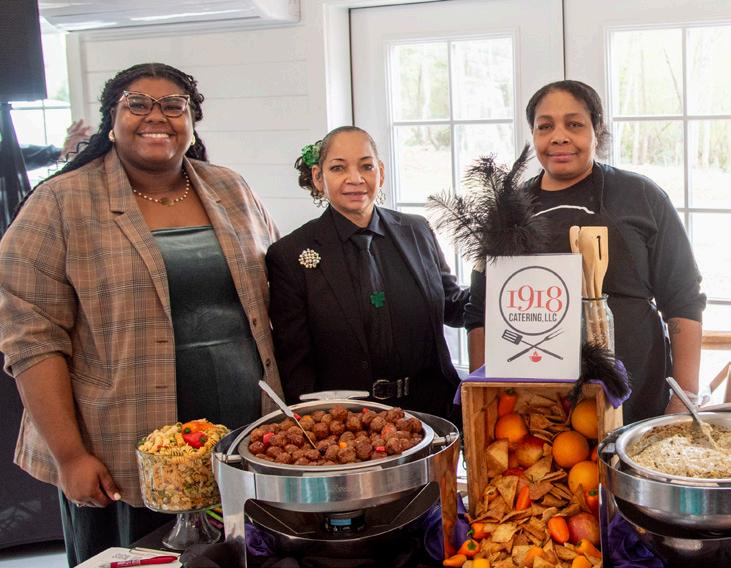

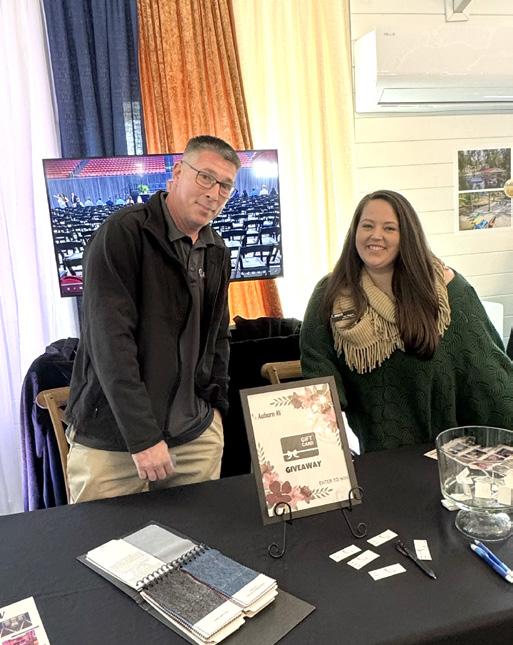
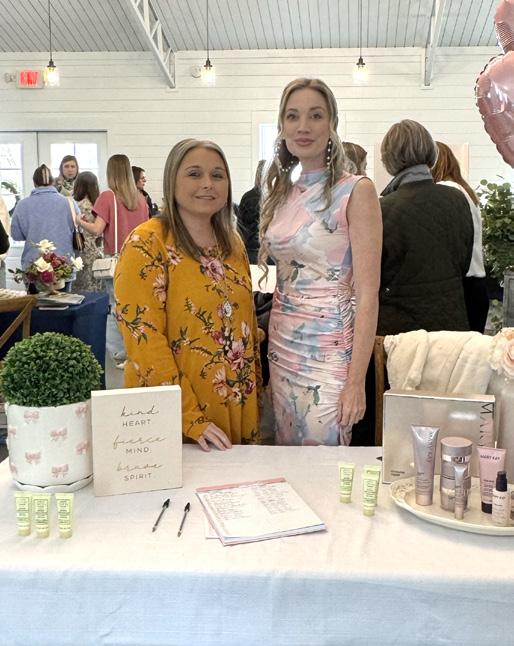
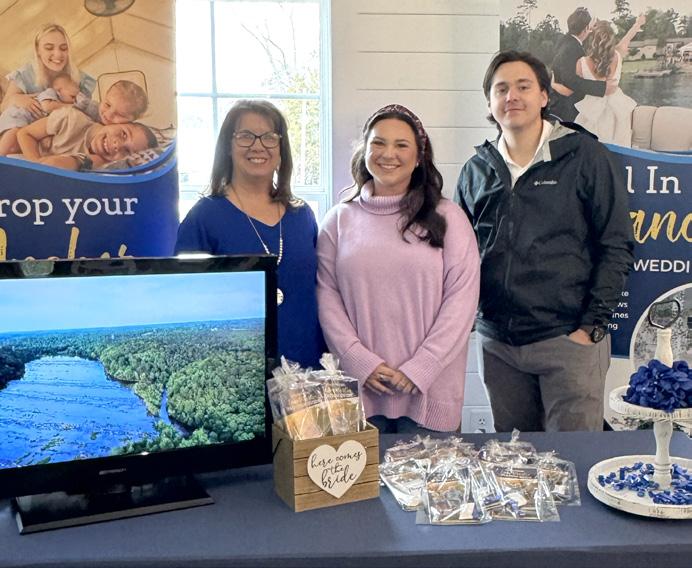
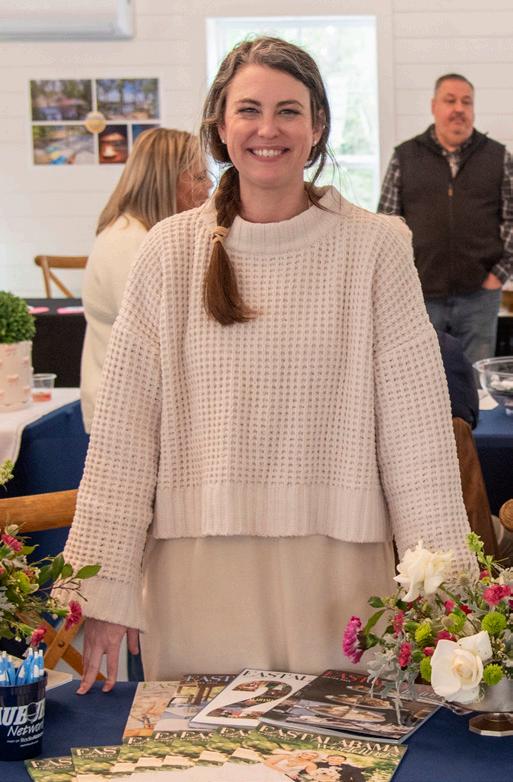

Sunday, February 23, 2025
The Mitchell House
Beloved storyteller Dolores Hydock returns to the area March 27 to revive the spirits and voices of Alabama’s Chandler Mountain community in a Dadeville Public Library and Alabama Humanities Alliance program. Red Ridge United Methodist Church in Dadeville will host the hour-long Footprint on the Sky: Voices from Chandler Mountain, which starts at 2:30 p.m.
Hydock’s script includes funny, tender stories of strong women and Southern hospitality. Think bonnets, bowtie quilts, poke salad, tomato stakes and Scripture Cake. Superstitions, family stories and folk remedies like an old-timey cure for hiccups are part of the picture Hydock creates with words in this presentation. The program is an affectionate portrait of the close-knit mountain community in St. Clair County where tomatoes became king and the Baptist church continues a legacy of more than 108 years.
Based on an oral history/folklore collection project at Yale University, the program highlights the area’s continuing transition that blends folk traditions, turns of phrase and old-fashioned ways with modern convenience and progress.
Hydock is a popular speaker in the area and draws an audience that fills whatever venue hosts her presentations. Her monologues raise and answer questions about how people lived and survived their struggles. Her programs
range from medieval adventures to the ponderings of Hank Williams’ wife and more. Her presentations are lively and energetic and leave audiences wanting more.
Admission to this presentation is free.
Footprint on the Sky Delores Hydock (Right) presents Voices from Chandler Mountain at Red Ridge United Methodist Church this month.


March 17
St. Patrick’s Day Celtic Show and Dinner
Join the Lake Martin Dulcimer Club for dinner at Camellia Café followed by an evening of Celtic music at Dadeville Performing Arts Center. Tickets are $40 online and include dinner, concert, tax, fees and gratuity. Visit dadevilleperformingartscenter.com to purchase tickets online and for more information.
March 17
St. Patrick’s Day Pet Parade
Participating pets must be leashed, decorated and ready for judging by 5:45 p.m. Meet at the Historical Downtown Doorway in Alexander City. Winner will get 50 percent of the proceeds from entries. Fan Favorite tickets will be available for $5. For details, visit the Main Street Alexander City Facebook page.
March 21
Town Creek Ramblers Bluegrass Band
The Town Creek Ramblers perform toe-tapping, soul-touching bluegrass and new grass at 7 p.m. featuring special artists from the region. Purchase tickets at dadevilleperformingartscenter.com or at the door at the Dadeville Performing Arts Center, 128 Broadnax Street, Dadeville.
March 21-23
Dearly Departed
ACT II will present this Southern comedy at the Betty Carol Graham Center stage at Central Alabama Community College at 7 p.m. March 21 and 22 and 2 p.m. March 23. Written by David Bottrell and Jessie Jones, the play illustrates that living and dying in the South are seldom tidy and always hilarious. Admission is free.
March 22
Reuben Thorton Memorial Spring Cleanup
In honor of Reuben Thorton, join Lake Martin Resource Association in a trash cleanup day for a cleaner community. Participants will meet at the Red Hill Community Center in Tallassee for cleaning assignments and supplies, including bags, pickers and
vests. Breakfast will be served at 7:30 a.m. with the cleanup taking place from 8 a.m. to 11 a.m. Lake Martin Mini Mall will host lunch and an after party starting at 11 a.m. with live music sponsored by Lakescape. Contact lmra@lmra.info for more information.
March 24
Classical Concert Flute Duo
As a part of the Dadeville Performing Arts Instrumental Concert Series, two professional flautists will perform duets and solos from the wide range of classical music for flutes. Music, narrations and banter start at 6:30 p.m. Tickets are available at the door or online at dadevilleperformingartscenter.com.
March 29
Women on Lake Martin Boating Class
Hosted by Russell Marine and geared specifically for women, this four-hour hands-on course refreshes women on the basics of boating safety and operation with on-water demonstrations on many of the most popular boats on Lake Martin. The boating class runs from 9 a.m. to 4 p.m. This event is currently full. Contact Kendra Naile at Russell Marine’s Kowaliga Marina for more information and to be added to the waitlist. Email KNaile@russelllands.com or call her at 256-397-1208 to register.
Alabama Marine Police will conduct a boating safety course at The Ridge Marina from 8 a.m to 3 p.m. to review navigation rules for veterans and help first timers pass the license exam. Hosted by Russell Marine, this course is NASBLA and Alabama Boating Safety certified. Call Rhonda Perry at The Ridge Marina at 256-397-1300 or email her at rperry@russelllands.com to register.
Hosted by Russell Marine and geared specifically for women, this four-hour hands-on course refreshes women on the basics of boating safety and operation with on-water demonstrations on many of the most popular boats on Lake Martin. The boating class runs from 9 a.m. to 4 p.m. This event fills fast
because of the limited number of slots available. Contact Lee Cook at Russell Marine’s River North Marina for more information. Call 256-397-1502 or email LCook@russelllands.com.
Lake
Run
The Lake Martin 100 returns to Russell Forest on April 5 and 6. Interested Ultra runners should visit the Southeastern Trail Runs page. Runners from all over the U.S. and beyond will take a shot at the Trails in the Russell Forest. There is something for all runners − a 100-mile course, a 50-mile course and a 27-mile fun run. The Lake Martin 100 has been voted the Best 100-mile race in North America and the Best North American Ultra.
Bring up to five boxes of unneeded documents credit card offers, check stubs, banking and loan information, old tax records and more to the Alexander City Chamber of Commerce office to be shred on site for free from 9 a.m. to 12 p.m. Presented by Central State Bank. Please remove three-ring binders and binder clips. For more information, call Kim Dunn at 256-234-3461.
The Tallapoosa County Master Gardeners will host speakers, kids’ activities, tree giveaways and plant sales from 9 a.m. to 3 p.m. at Dadeville’s Pennington Park. Guest speakers will make presentations on a variety of gardening subjects throughout the day, and food vendors will be on site.
This festival of music, art, food and Southern culture in Waverly will feature David Ramirez, Carolyn Wonderland, Chatham County Line, Sweet Lizzy Project and The Pine Hill Haints. Gates open at 11 a.m. Tickets are $40 until April 1; then, $50 online and at the gate. Kids 12 and under admitted free. Visit standarddeluxe.com for details.




Classroom in the Forest Coosa County Forestry Department and Coosa County Extension, along with forestry experts from Auburn University will teach attendees about general wildlife information and basic forestry concepts from 10 a.m. to 2 p.m. Location to be determined. This program is appropriate for public and homeschooled students. Admission is free. Contact Coosa County Extension for more information.
Russell Marine In-water Boat Show
See and demo 2025 boat models from Godfrey Pontoons, Nautique ski and wake boats, Sea Ray, Key West, Chris-Craft, Bass Cat and Crevalle and browse the pro shop for lake gear. Visit russelllands.com/blog/events for details.
Volunteer Connections of Central Alabama, Inc., at 5030 U.S. Route 280 in Alexander City will host IRS certified volunteers to provide free tax assistance and electronic filing of federal and state income tax forms for seniors at any income level and taxpayers under age 60 with incomes less than $68,000, as well as disabled taxpayers. Make your appointment to drop off your information before April 1, 2025, by calling 256-234-0347. Do not come without an appointment. Bring last year’s tax return, a photo ID for taxpayer and spouse, as well as Social Security cards for taxpayers and dependents, W-2s, 1099s and 1095-A if applicable.
Come see Naturalist Marianne and her lively nature presentations at the Naturalist Cabin at Russell Crossroads. There is never a dull moment with this wildlife biologist as she educates on the beauty of nature. Check the calendar at russelllands.com/blog/events for the scheduled subject matter, dates and times.
The Alexander City Kiwanis Club meets at noon every Thursday in the boardroom of the Betty Carol Graham Building on the CACC campus, except on the fourth Thursday of the month.
For more information, call Mike Lucas at 256-596-0104.
Join golfers of all ages and abilities at Stillwaters Golf Club at 10 a.m. every Monday, Wednesday, Friday and Saturday for an open golf event. In addition to regular golf fees, players pay a small entry fee of $7 or $15, depending on the day. For details, call the golf shop at 256-825-1353.
Pick up trash in Alexander City to win money for your favorite charity. Volunteers meet at Strand Park at 8:30 a.m. to pick up supplies and area assignments and help clean up the roads within Alexander City. Turn in your collected trash and get points for each person on your cleanup team and each bag of trash you collect. The team with the most points gets a $500 check made out to the nonprofit charity of their choice. Second place is $200, and third place is $200. For more information, contact Michelle West at 256-786-0584 or John Thompson at 334-399-3289.
In Dadeville, a monthly cleanup is held on the second Saturday of the month, and volunteers can pick up sanitized pickers and bags at 8 a.m. at Dadeville City Hall. There also will be a trash bag drop-off on site. Contact Mickey Forbus at 334-329-0905.
The Tallassee Lions Club meets the first three Tuesdays of the month at Cozumel Restaurant in Tallassee from 12 p.m. to 1 p.m. Email Marilyn Speake at marilyn.speake@tcschools.com or call her at 334-283-6864 for more information.
The Equality Performing Arts Center hosts music and other events on the fourth Friday nights of each month (except December) at 6:30 p.m. on state Route 9 in Equality. Visit the Equality Performing Arts Center Facebook page for a schedule of upcoming artists.
at Niffer’s Place Lake Martin Niffer’s, 7500 state Route 49 in Dadeville, hosts charity bingo every Tuesday at 6 p.m. Cards are $1 each, and funds go to participating charities.















Kowaliga Marina 334-857-2111
The Ridge Marina 256-397-1300
River North Marina 256-397-1500
Russell Marine Boating & Outdoors 256-397-1700
Real Island Marina 334-857-2741
Blue Creek Marina 256-825-8888
Parker Creek Marina 256-329-8550
Harbor Pointe Marina 256-825-0600
Smith's Marina - Shipwreck Sam's 256-444-8793
SpringHouse 256-215-7080
Catherine’s Market 256-215-7070
Kowaliga Restaurant 256-215-7035
Acapulco Mexican Gril 334-283-2725
Russell Do It Center (Alex City) 256-234-2567
Russell Do It Center (Eclectic) 334-541-2132
Russell Building Supply 256-825-4256
The Stables at Russell Crossroads 256-794-1333
Kowaliga Whole Health 334-857-1816
Aronov Realty Lake Martin 256-825-4133
Off the Beaton Path 205-994-0847
Hwy 50 Blue Creek Boat & RV Storage 334-391-0717
Creekside Lodge 256-307-1440
Red Ridge UMC 256-825-9820
Lake Pointe Baptist Church 256-373-3293
Lake Martin Dock Company, Inc 334-857-2443
Docks Unlimited LLC 256-203-8400
Dixie Sailing Club
Lakeshore Pharmacy 256-825-0063
Singleton Marine 256-269-0088

Subscribe today or visit one of our local establishments each month for a free copy.
ALEXANDER CITY
Robinson Iron
A & M Plumbing
Carlos
The Body Shop
Walgreens
Tallapoosa Publishers, Inc.
Jake's
Moore Wealth Management
Carlisle's
Emporium Wine
Longleaf Antique Mall
Playhouse Cinemas
Chamber of Commerce
Winn Dixie
Re/Max Around the Lake City Hall
A&E Metal
Regions Bank
Marathon - 280
Renfroe's Market
Russell Medical Center
Piggly Wiggly - New Site Foodland
DADEVILLE
Chamber of Commerce
Raining Dogs Studio & Gallery
Root 49 Salon
Ellaby Boutique, LLC
Alabama Power
Siggers
Siggers Barbershop
Fusion Cafe
Dadeville Library
CAMP HILL
Link Gas Station
EQUALITY
Five Star Plantation
Equality Food Mart
Southern Star
Parker Creek Marina
Charles Borden
ECLECTIC
Lake Breeze Realty
Offshore Marina







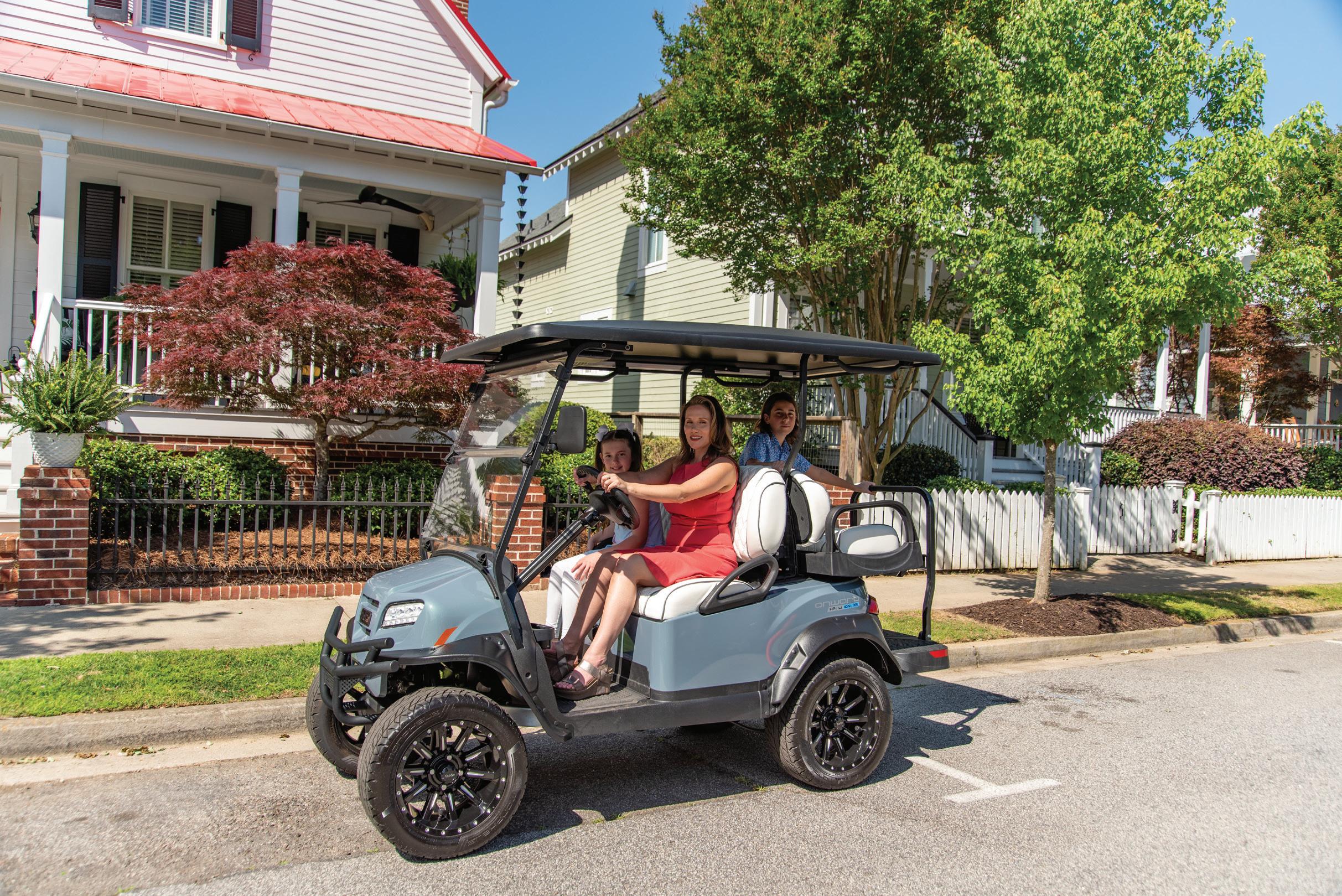



















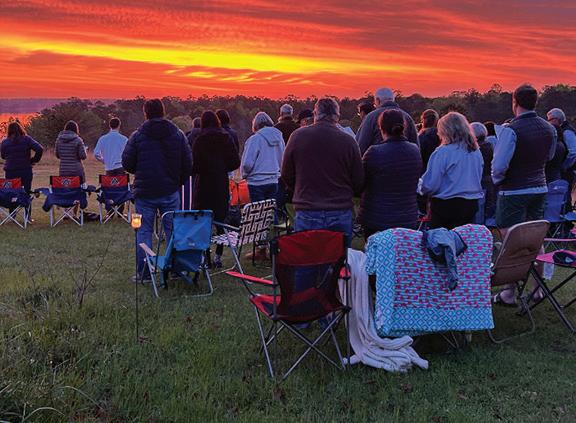









Iremember going with my grandmother to get my first manicure when I was in middle school. There was a salon at the bottom of the hill of Alexander City Middle School, and manicures used to cost about $10. The salon was dusty pink and beige inside, or maybe I just remember the ‘90s through that color filter. I would put my hands in a little acrylic bowl of warm water, and the nail technician would push my cuticles back. Fast forward to 2025, and styles and processes have changed a lot. A full set can run you closer to $70, depending on what you go with, and the options are unlimited.

The history of manicures begins in the Far East. In ancient Egypt, Cleopatra and Nefertiti used henna and carmine to stain their nails. Red shades symbolized power and status. Chinese royalty used egg whites, beeswax and floral petals to make nail polish shades.
Modern manicures began during the Victorian era of naturalism, where clean, buffed nails were a sign of refinement while bold colors were considered improper. In the 1920s, the flappers embraced painted nails, with half-moon and French tip styles emerging. In the 1930s, cosmetic giant Revlon introduced the first modern nail polish using pigments instead of dyes, setting the stage for the industry we know today.
Looking back through the decade, nail trends, like clothing, often reflect the cultural and political tone of the times.
• 1950s: Classic red nails à la Marilyn Monroe.
• 1970s: Square French manicures became popular thanks to Jeff Pink, the creator of Orly.
• 1980s and 1990s: Acrylics, airbrush designs and press-on nails surged in popularity.
• 2000s: The rise of nail art, rhinestones and gel nails.
• 2010s and Beyond: Minimalism vs. maximalism, clean nude looks alongside extravagant 3D nail art.
The first nail salons catered to the elite, but by the 20th century, affordable options spread
worldwide. After the Vietnam War, actress Tippi Hedren, star of Alfred Hitchcock’s The Birds, trained refugee women in nail care, leading to the widespread VietnameseAmerican dominance in the industry. In the 1970s, after the Vietnam War, Hedren was working with Vietnamese refugee women at Hope Village, a refugee camp in California. Determined to guide them on their career path, she noticed they were fascinated by her manicured nails. She brought in her personal manicurist to teach them the craft. These women went on to open their own salons and establish a business model that became wildly successful. The nail industry generates billions.
In the early aughts, OPI was the popular brand and went all in on the names of the nail polish shades. Every millennial reading this remembers Lincoln After Dark and Bubble Bath. Essie was another strong name brand with Ballet Slipper or Bikini So Teeny. In today’s salons, social media drives the trends with Instagram and TikTok fueling viral trends like glass nails, cat-eye polish and dip powders. Eco-friendly options are marketed as sustainable polishes, vegan formulas, and there is digital nail printing too. You can add shiny layers like chrome or little charms.
In the past year, I have become a woman who gets her nails done every month. I always got pedicures but would skip my hands because I hate the sound and feel of a nail file. When a good friend of mine started getting funky and bright nail designs, I was totally influenced. I wanted fun and artsy nails too! My nails were constantly dirty or breaking off from horse riding, so I went and slowly learned to suffer through nail filing in pursuit of beauty. It helps to get fast nail techs too. I have been getting the T.A.P. gel polish lately. I like it because if your nails grow fast as mine do, they hold fast to the nail, and as they grow out, your hair will not snag in them when you wash your hair. Men, that’s a thing, if you are still reading! So for me, the mani will last about three weeks.
For spring, my Pinterest board is full of French styles, pinks and nudes. Cheers to treating yourself to a mani this spring!
~ Lacey Howell is a recovering English major from Auburn who now lives on Lake Martin, sells real estate, rides horses and loves good wine. Follow her on Instagram @LaceyHowell.





















